
Pernes-les-Fontaines remained the capital of Comtat Venaissin until Pope John XXII bought back the rights over Carpentras from its bishop. Two elements reveal the Jewish presence in this town: the name Place de la Juiverie and the traditional identification of the large house standing in that square as the old “Jewish baths”.
During Heritage Days in 2024, the Hôtel de Cheylus opened the doors of its mikveh to visitors. This mikveh dates back to the 16th century and has been listed as a historic monument since 1996.
Carpentras had a Jewish population when it was yielded to the papacy by the king of France in 1274. In the fourteenth century, the Jewish quarter on rue Fournaque, near the town walls, was home to ninety families.
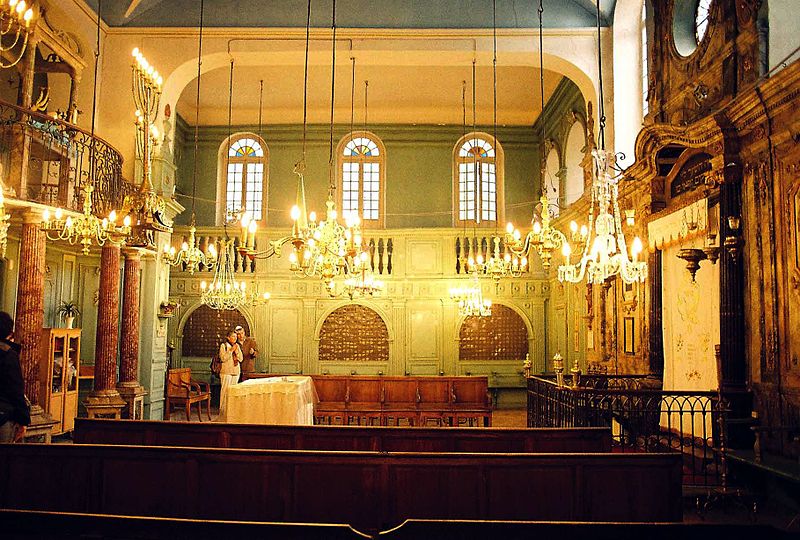
In 1459, it was sacked by rioters, and sixty people were killed. The community was forced to move to rue des Muses in the town center, which became rue des Juifs, a carriere closed off at both ends by gates. During the fourteenth century, Jews lived mainly from trading agricultural products and money lending. A census in 1473 revealed sixty-nine Jewish families living in Carpentras. In 1523, Jacopo Sadoleto, the bishop of Carpentras, imposed restrictions on their activities, and the community shrank down considerably. After the expulsions of 1570 and 1593, only a few families remained, but in 1669, when the small communities of Comtat Venaissin were put in the four carrieres, the number rose to eighty-three families, of 298 persons.
New restrictions were imposed throughout the eighteenth century. There was, notably, a long, drawn-out conflict over the construction of the synagogue. Begun in 1741 in answer to the growing number of believers, the construction proceeded swiftly until, in 1757, the bishop obtained authorization from Rome to reduce the building to its medieval dimensions. He himself set about the demolition with the help of masons. The Jews protested, and the conflict dragged on until 1784, when a compromise was reached as to the acceptable dimensions. At the end of the eighteenth century, the community numbered some 2000 members. Most of them lived modestly, or even in poverty. Some, though, were rich, such as Jacob de la Roque and Abraham Crémieux. During the Revolution, the synagogue was a Jacobin meeting place. It returned to being a place of worship in 1800.
The community in Carpentras produced few renowned intellectuals. Most were doctors and poets. Mardochée Astruc, from Carpentras, wrote the play La Reine Esther with Jacob de Lunel in the eighteenth century. It inspired Esther de Carpentras, a comic opera with a libretto by Armand Lunel that was presented in Paris in 1938.
The synagogue was registered as a historical monument in 1924. A monumental staircase leads to the place of worship, which is organized on two levels: the meeting room with the tabernacle and the gallery/tribune with the tevah. The interior decoration is remarkable. Note the blue ceiling spangled with stars, the wooden paneling, the gilding on the tabernacle, the columns supporting the tevah, the Chair of Elijah, and the chandeliers and candlesticks. In the basement, elements from the medieval construction are still in place: the matzoh oven, the mikvah, and the women’s prayer room, where a specially chosen rabbi led the prayers in Judeo-Provençal (Judeo-Comtadin). The carriere and the Place de la Juiverie were destroyed in the nineteenth century.
In May 1990, the Jewish cemetery of Carpentras was desecrated by neo-Nazis. Thirty-four graves were vandalised. A large demonstration brought together hundreds of thousands of people in Paris, including President François Mitterrand and Simone Veil.
Every summer, Carpentras hosts the Festival of Jewish Culture and Music. The 2025 edition, held from 10 to 12 August, featured musical readings and concerts at the synagogue and in the Cour de la Charité. Performers included Romanceo Sefardico, Aude Marchand, Pletzl Bandit, Bad Brapad Acoustic Trio and Kalistrio.
The first attestation of a Jewish presence in Avignon dates from the fourth century. It is a seal representing a five-branch menorah and bearing the inscription avinionensis. Jewish commercial activity was intense under Avignon’s Popes. The tailor of Gregory XI was a Jew, as was his bookbinder.

During the Black Death epidemic in 1348, the community in Avignon was spared popular wrath thanks to the energetic intervention of Clement VI. The edicts of 1558 included a description of the community’s organization. Its members were divided into three categories according to wealth. The baylons, for example, were responsible for collecting taxes, charity, caring for the sick, and teaching. In the seventeenth century, Jews worked mainly in secondhand trade and horse dealing. When the city became part of the French Republic in 1791, the number of Jews in Avignon fell quickly. By 1892 there remained only forty-four families. The arrival of Sephardic Jews in the 1960s revived the community.
Avignon was the birthplace and home of many important figures in Hebrew literature. Among the best-known were Kalonymos ben Kalonymos, the author of Even Bohan (The Touchstone) a satire of Jewish life in Provence during the Middle Ages, and Levi ben Gershom (Gersonides).
The Jewish quarter was opposite the Palace of Popes, as indicated today by rue de la Vieille Juiverie. Around 1221 it was transferred to the Place de Jérusalem (now Place Victor Basch). The carriere was rue Jacob, where some of the old houses can still be seen. It was surrounded by a wall with three gates.
The old synagogue was destroyed by fire in 1845 and replaced by a new, circular one, which can be visited.
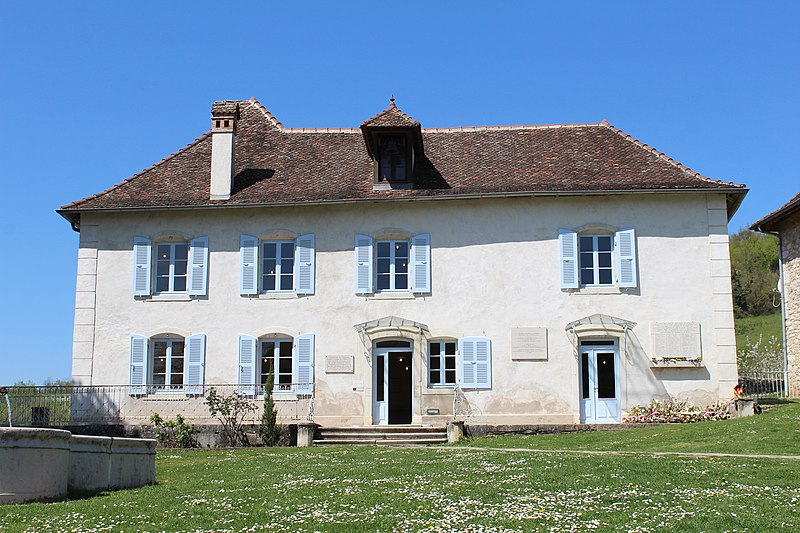
During the Nazi occupation, this village in the department of Ain was the scene of a raid ordered by Klaus Barbie on 6 April 1944. Forty-four Jewish refugee children and their seven teachers were arrested and deported. Only one survived.
The Memorial Museum of the Children of Izieu (Musée-Mémorial des enfants d’Izieu) exhibits letters and drawings in honor of these victims of Nazi barbarity, who lived in the village for nearly a year. An adjoining building has audiovisual displays that recall those dark years, exploring the concept of “crimes against humanity” and showing excerpts from the Barbie trial concerning the crime at Izieu.
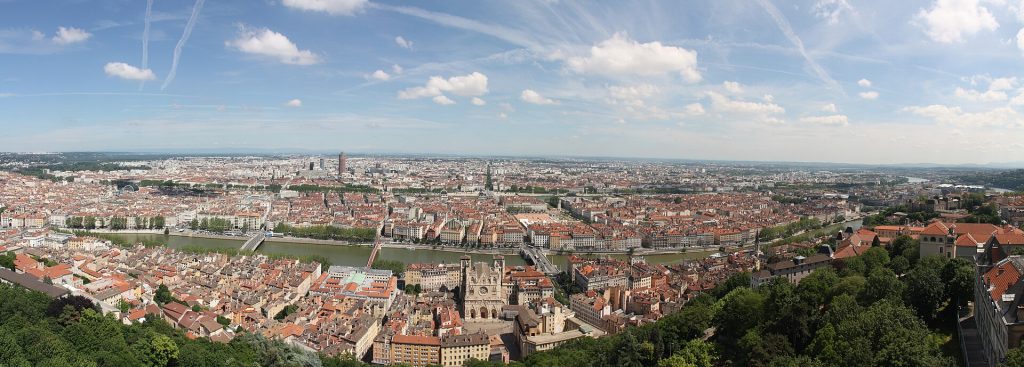
The Jewish community in the historical capital of the Gauls and, for historians, capital of the French Resistance, has now regained an undeniable dynamism. There are many notable sites surrounding the Grand Synagogue , built in 1864, as well as some excellent restaurants. All in all, they make Lyon a very pleasant stop.
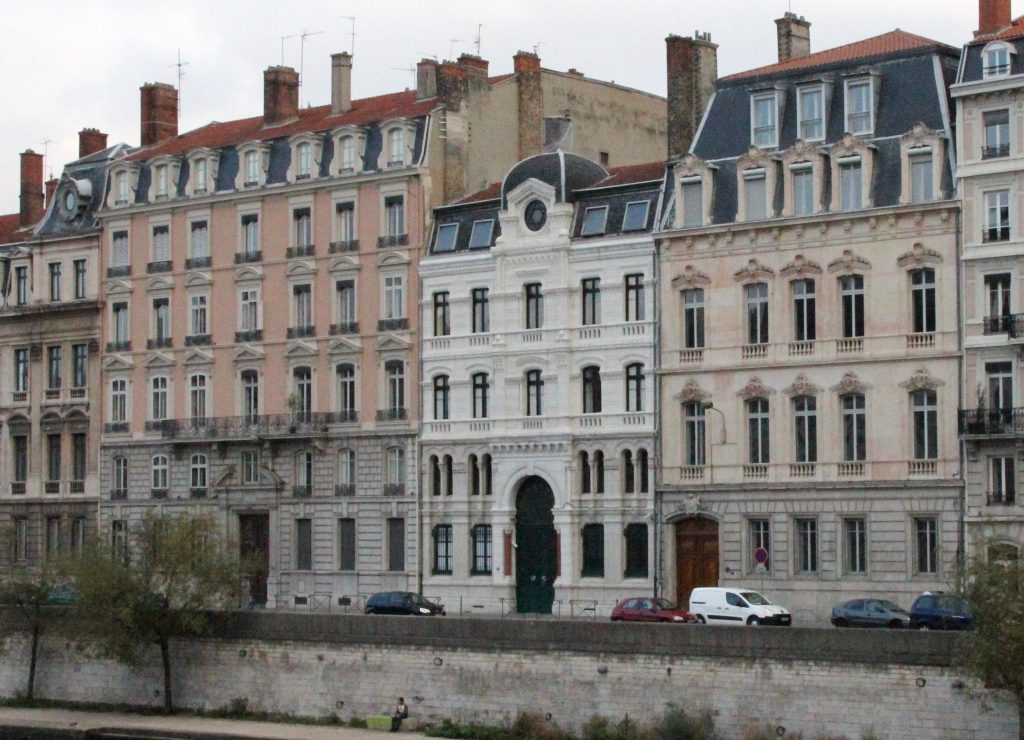
As in many French cities, the presence of Jews there probably dates back to the Roman Empire, but was recorded in the Middle Ages.
This, from the 9th century, when they formed an important community. They then lived near rue Juiverie, at the foot of Mont Fourvière.
The Jews were expelled in 1250, but resettled there a hundred years later. Another round trip of this kind took place at the beginning of the 15th century.
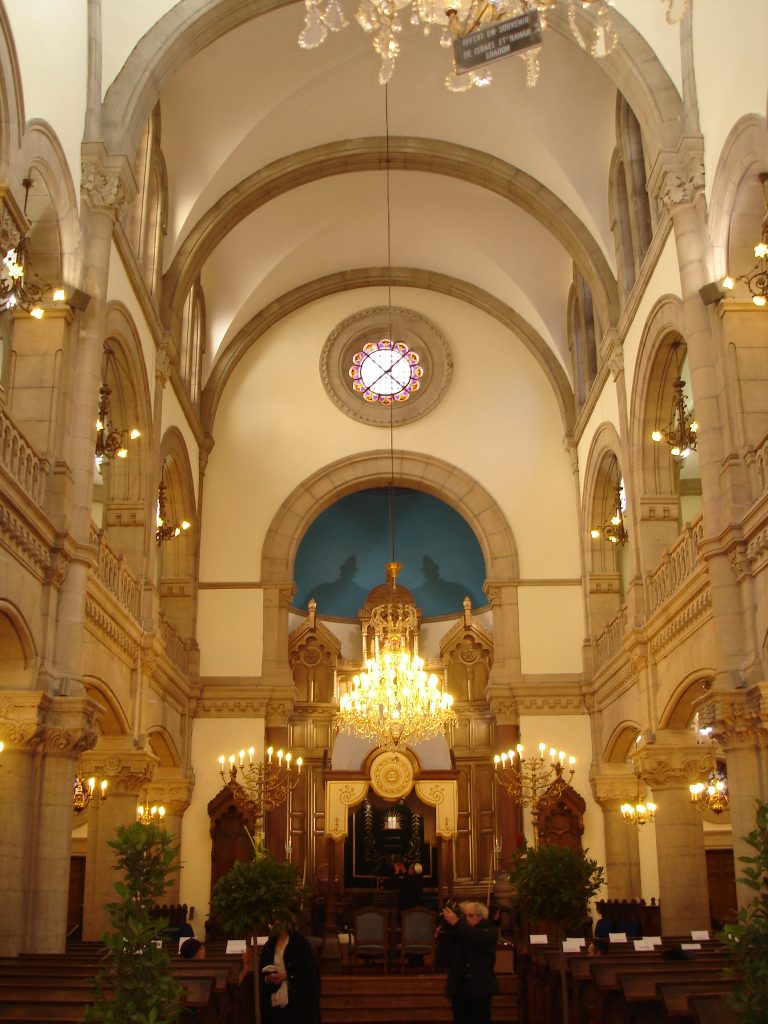
The sustainability of Jewish life in Lyon took shape with the French Revolution, as in many other cities of France. Made up of families from Comtat Venaissin, Alsace, Bordeaux and Avignon, they bought land to establish a cemetery.
From 300 in 1830, the number of Jews rose to 700 in 1840, mainly thanks to the arrival of Jews from Alsace-Lorraine. They lived largely on rue Lanterne and rue de la Barre.
In 1864, the Grand synagogue of Lyon was opened at Quai Tilsitt. Long discussions took place with the authorities. The municipality made available the salt granary land in 1862 and it was built by the architect Abraham Hirsch.
The city also hosts a Sephardic rite synagogue, Neveh Chalom , built in the early 20th century by Jews from Greece and Turkey.
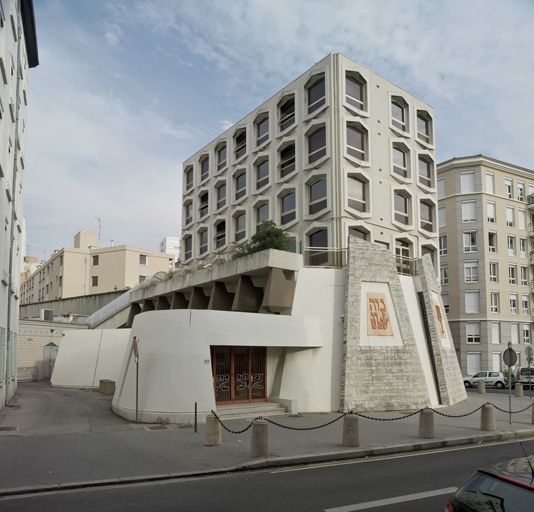
Large center of the Resistance, the Jews took part in it considerably. It was in this city that Jean Moulin, sent by General de Gaulle to organize the Resistance, was arrested and tortured.
Cardinal Pierre Gerlier publicly denounced the abuses committed against the Jews and participated in the efforts of the Resistance.
If the city of Lyon counted only 7000 Jews after the war, this figure increased rapidly with the reindustrialisation and the arrival of the Jews of North Africa. Thus, in 1969 there were nearly 20,000 Jews in Lyon.
The city also has a Jewish cemetery.
There are also Jewish communities in the cities of the region, mainly in Villeurbanne. Several synagogues, mikvaot and study centers have settled there.
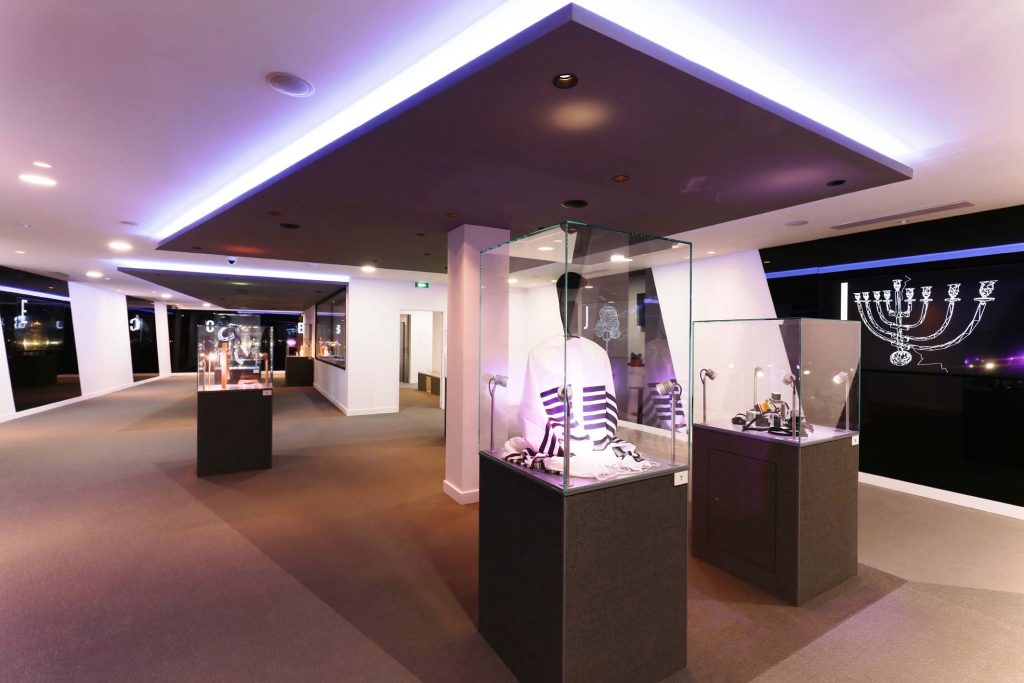
The Cultural Institute of Judaism recently opened in Lyon. In a republican spirit, it facilitates the discovery of Judaism thanks to an educational approach on different levels, combining presentation of old objects and use of the latest technological innovations (giant screens, digital tablets, virtual reality). It also regularly organizes visits for high school and college students in the region.
The course is organized around the following themes: the history of the Jewish people, religion and religious practices, anti-Semitic prejudices, and the place of Jews in France.
On 26 January 2025, to mark the 80th anniversary of the liberation of Auschwitz, the Rails of Remembrance monument was inaugurated in Place Carnot. Opposite Perrache station, from where the convoys of deportees left. The work, created by Quentin Blaising and Alicia Borchardt, is made up of 1,173 metres of track, representing the exact number of kilometres separating Lyon from Auschwitz.
Interview with Ilan Levy, journalist and guide

Jguideeurope: How do you perceive the development in recent years of Judaism in Lyon and of the general interest in places of reference for Jewish cultural heritage?
Ilan Levy: Lyon is fortunate to have a synagogue listed in the Supplementary Inventory of Historic Monuments: the Tilsitt synagogue. This place of worship is very important for the Lyonnais, especially because so many weddings take place there. Visits are organized there throughout the year, outside the Covid period, in particular by school groups.
Recently renovated, on the occasion of its 150th anniversary, the synagogue has had a complete makeover. It is possible to admire the stained-glass windows and the organ, as well as the architecture proposed by Abraham Hirsch, the architect of the city of Lyon at the end of the 19th century, which gives it a look close to a Protestant temple. It is also the subject of numerous visits during the yearly Heritage Days organized all over in Europe, and concerts are given there at each “Music Feast”.
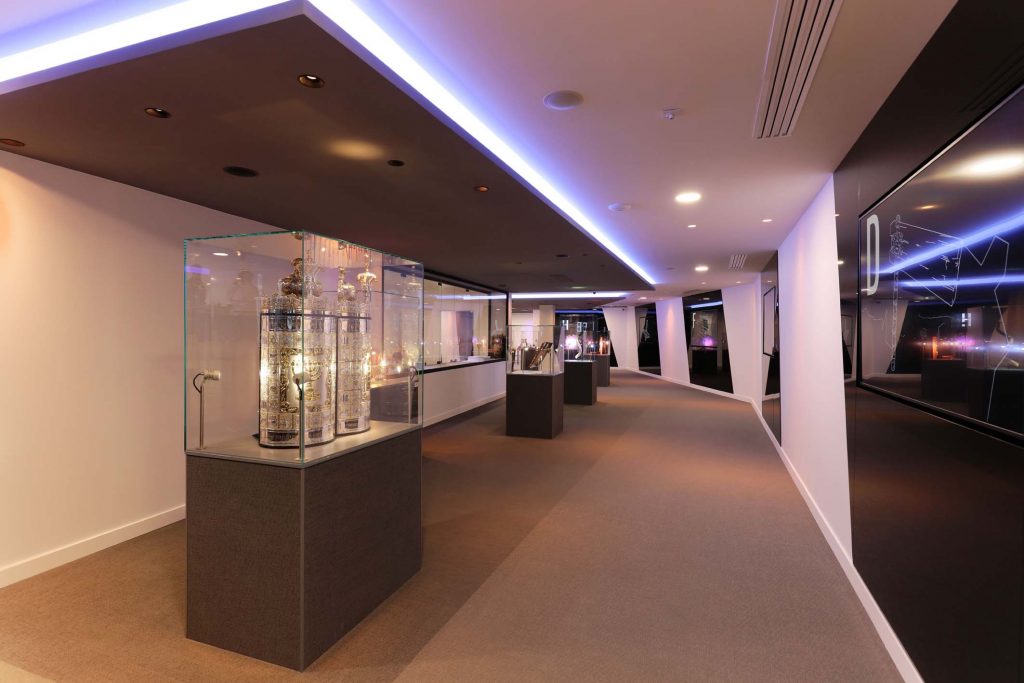
Is there a lesser-known place linked to this heritage that you think is important to know?
Outside of the Tilsitt Synagogue, the Jewish heritage is more recent and does not offer an architecturally remarkable building. The Cultural Institute of Judaism, built next to the Névé Chalom synagogue, was inaugurated in 2020. It offers an educational path, using the latest technological discoveries, on Judaism, its history and its traditions. It aims to make known the Jewish religion, its rites, its festivals, its liturgy and, thus, to fight against prejudices and anti-Semitism. While strolling in its alleys, the public will discover the many Jewish festivals, the traditions and will be able to attend a Shabbat service in 3 D at the Tilsitt synagogue.
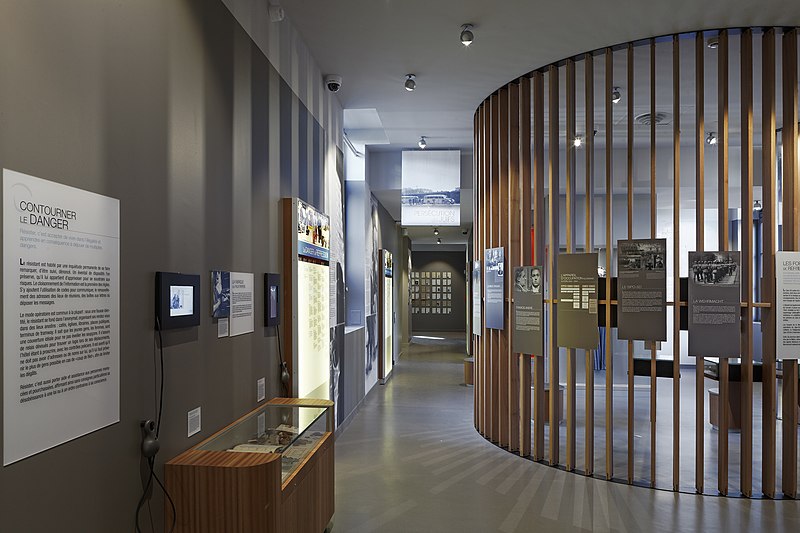
Lyon has an important place in the history of the Resistance. How does the city promote the cultural sharing of this history? In what places?
The city, capital of the Resistance, offers several high places of this history. The Center for the History of the Resistance and Deportation is an educational place to visit for its permanent collection and exhibitions. During the war it was the place where the Gestapo and the sinister Klaus Barbie tortured resistance fighters in the cellars of this former health institute. Note that the Comoedia cinema, opposite the CHRD, was also used as a cinema by the Nazis during the war. Klaus Barbie, the head of the Gestapo, the “butcher of Lyon” did not hesitate to go and find the resistance fighters at Fort Monluc during the day to torture them and bring them back in the evening to the sinister prison of this fort.

The Fort Montluc is a military prison built in 1921. From 1940 to 1942, it served as a prison in Vichy before being used by the Nazis who locked up Jews and resistance fighters there. In appalling conditions, several in cells, they are crowded into the prison and tortured during the day. The Jews are interned in the “Jewish hut”, a kind of wooden warehouse, which no longer exists today, in the courtyard under even more appalling conditions. They are most often then taken to Perrache station to be deported and exterminated in Auschwitz.
The 44 Jewish children of the House of Izieu and their companions, whom Barbie will round up in their colony of Ain on April 6, 1944, will pass through Montluc before being deported and exterminated. From this prison, only André Devigny, a French soldier and resistance fighter, managed to escape in August 1943 in order to escape his death sentence. This episode will be the subject of Robert Bresson’s 1956 movie A Man Escaped.
The prison will remain active after the war, then become a prison for women before closing permanently in 2009 and becoming a National Memorial. When France, thanks to the work of the Klarsfeld couple, had Klaus Barbie arrested in South America, the Justice Minister Robert Badinter, whose father was deported by Barbie during the Raid on rue Sainte Catherine, had him stay at the Montluc prison before his trial. The court with 24 columns of this historic trial is located on the Quais de Saône in front of a few hundred meters from the Tilsitt synagogue.
A plaque is affixed at 12 rue Sainte Catherine to commemorate the raid organized by Klaus Barbie on February 9, 1943 in this office of the General Union of the Israelites of France where 86 people were arrested and deported. Another plaque has existed since 2016 on rue Boissac where the Consistory offices were held during the war. Finally, after Montluc and the CHRD, an hour’s drive from Lyon, is the Maison d’Izieu Memorial, a symbolic educational center of the genocide of Jewish children.
The Jewish presence in Hégenheim seems to date back at least to the 17th century. 14 Jewish families were counted in 1689. Jewish life developed there, the community growing to more than 400 people on the eve of the French Revolution. One of the largest in Alsace at the time, the number of its faithful declined over time. Thus, in 1936, there were only 36 Jews left in Hégenheim.
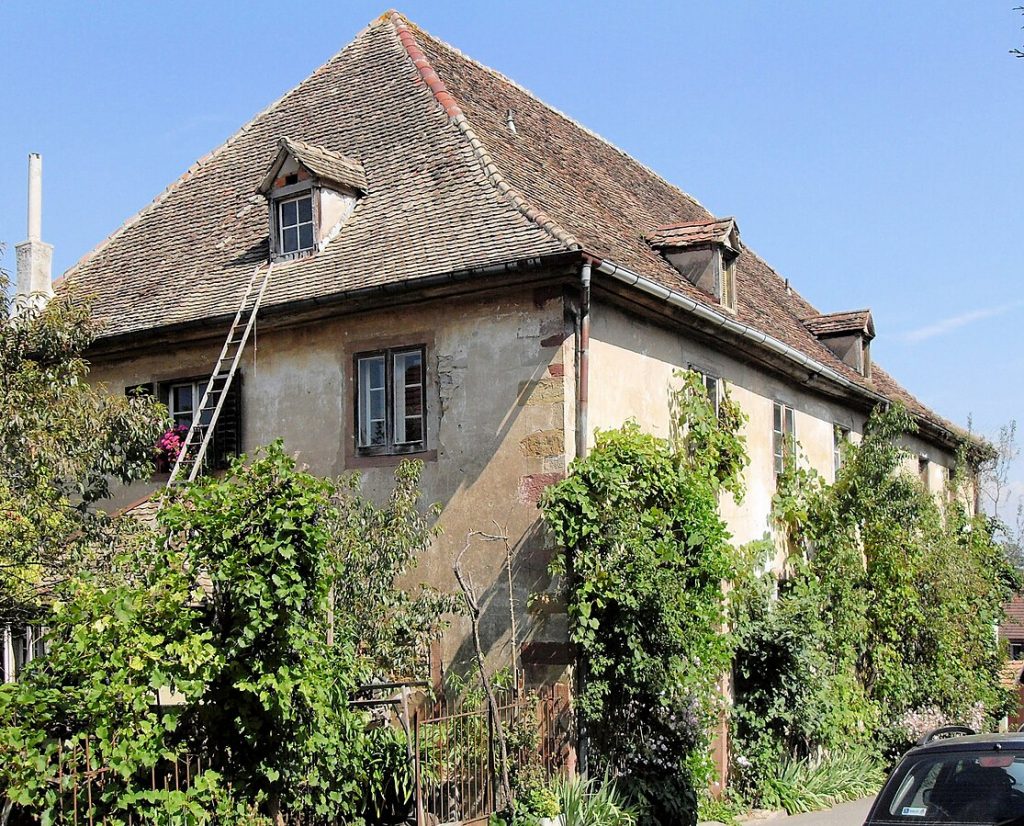
On the Franco-Swiss border, the Hégenheim cemetery , which covers over five acres, has tombstones dating from its establishment in 1673. It is the only cemetery to have preserved a wooden funeral slab. The original is now on exhibit in the Jewish Museum in nearby Basel. This busy Swiss trading town was long a magnet for local inhabitants and, since they were refused the right to reside there, Jews settled in the nearby areas of Alsace and, for two centuries, the cemetery at Hégenheim was used by local communities, including those across the Swiss border. It is now a moving historical site where you can walk among more than 7000 tombs and discover weathered stones overgrown with ivy or scattered among the overgrowth.
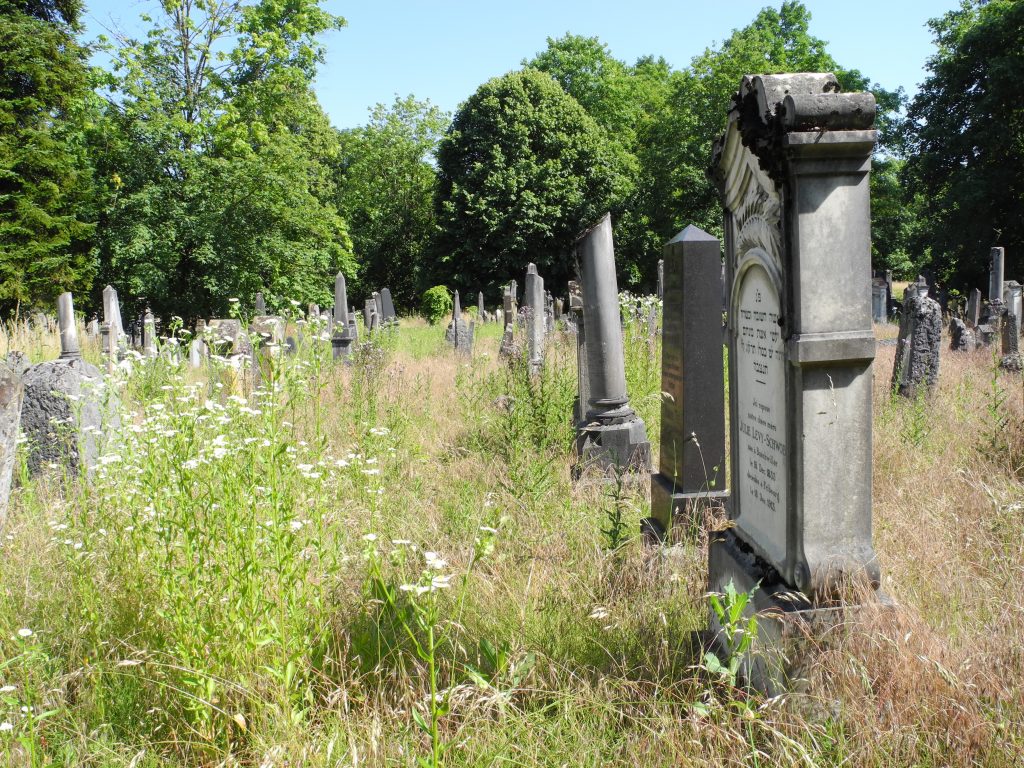
The ancient synagogue of Hégenheim will become a cultural centre dedicated to contemporary art, concerts and conferences.
Once in an Alsatian town
“[One rue des Juifs] All one could see were tall, decrepit buildings, furrowed with rusting gutters: and from the dormer windows the whole of Judaea hung its stockings, dirty old petticoats, patched underwear, and frayed linen. At all the basement windows could be seen doddering heads, toothless mouths, noses and chins like carnival masks; you would have though that this people came from Nineveh, from Babylon, or that they had escaped from captivity in Egypt, so old did they look.”
Émile Erckmann and Alexandre Chatrian, Friend Fritz (Strasbourg: Édito, 1966).
The Jewish presence in Colmar probably dates from the 13th century. Administrative documents confirm this presence. A synagogue was destroyed in 1279.

The community grew, in particular thanks to the arrival of Jews from Rouffach and Mutzig. Thus, in the 14th century, it managed a synagogue, a mikveh, a reception hall and a cemetery. Persecuted during the Black Death, the Jews were readmitted to Colmar at the end of the century. Throughout the following centuries, the Jews of Colmar were sometimes readmitted and sometimes victims of injustice. It was only after the French Revolution that their lot improved, with access to citizenship, as in the majority of the country. A first synagogue opened at the very end of the 18th century.
In 1800, there were 140 Jews living in Colmar. In 1808, Colmar welcomed a consistory on which 25 surrounding communities depended. Fifteen years later, the city also hosted the headquarters of the Chief Rabbinate of Alsace.
The Jewish population increased significantly, reaching 513 in 1833. In 1843, the synagogue of Colmar was inaugurated and represented one of the most beautiful architectural monuments of the city. This number doubled on the eve of the 1870 war. As many Jews left the region following the defeat, the fall stopped and the Jewish population even increased in the 20th century, reaching its peak of 1200 in 1935. The Shoah claimed many victims in the region and affected a third of Colmar’s Jews. The synagogue was ransacked by the occupiers. After the war, Jewish life was rebuilt thanks to the arrival of Jews from North Africa. Thus, in 1990, there were 1000 Jews in Colmar.
Old cemeteries on the road to Rouffach and at the Theinheim gate were used before 1800, and then the Ladhof cemetery .
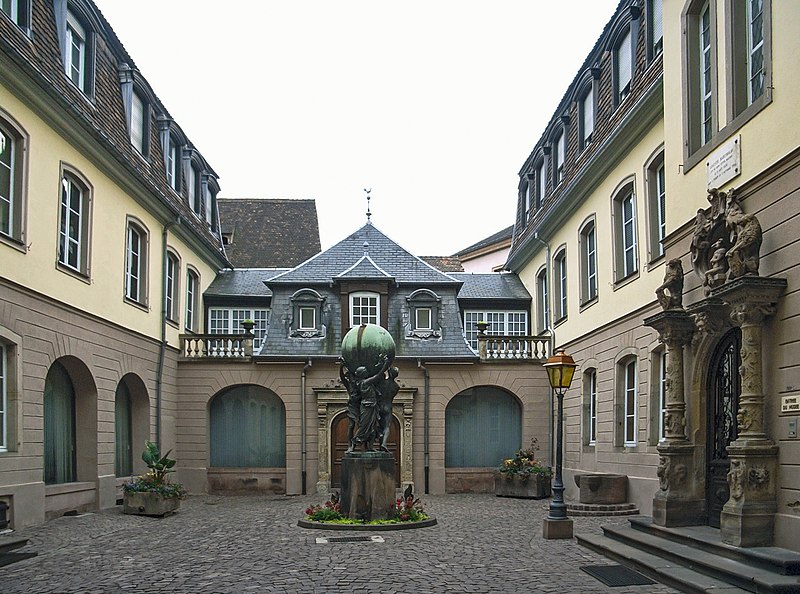
The Bartholdi Museum pays homage to the sculptor of the Statue of Liberty. One room features an interesting collection of Judaica. Particularly admirable is a bowl used by the brotherhood charged with final duties (Hevra Kadisha); it is in the form of a coffin with bearers (mid-nineteenth century). There are also precious examples of circumcision chairs and an ablution fountain from the cemetery at Herrlischeim.
In 2021, the PMC in Colmar hosted a conference on René Hirschler, a rabbi who took part in the Résistance. At this event, Alain Hirschler paid tribute to his parents. The youngest rabbi in France at the age of 23, René Hirschler was appointed to Mulhouse in 1929, then became Chief Rabbi of Strasbourg. Mobilized in 1940, he was appointed by Vichy as the Jewish chaplain of the camps in the southern zone. This appointment allowed him to organize with his wife Simone an assistance and rescue of prisoners. Simone and René Hirschler were arrested and died in deportation in 1944.
In November 2025, as part of the ‘Tuesday evenings with religions’ event, initiated by the European Community of Alsace, the Colmar synagogue opened its doors to the Colmar public.
Sources : Encyclopaedia Judaica, judaisme.sdv.fr and dna.fr
Traces of the old Jewish community can still be seen in this charming tourist town.
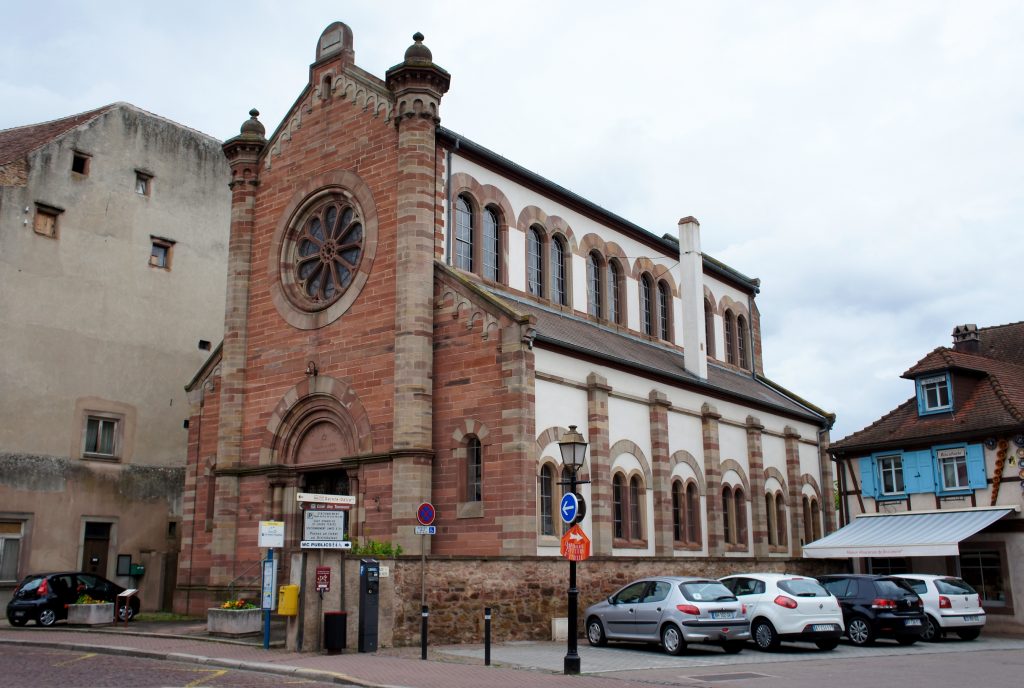
On ruelle des Juifs, an arched doorway with an engraving in Hebrew signals the entrance to the old synagogue, dating to 1454. On rue du Général-Gouraud the voussoir of an arch bears the Hebrew date 5456, corresponding to 1696 C.E. In the porch, note the two blessings hands carved in stone with the inscription “The master, rabbi Samson, the Cohen”.
Long the walls of the synagogue, you will observe the vestiges of a Jewish community house built circa 1750 with traces of the Holy Ark and altar. The hammered lilies recall that the French kings protected the Jews of Alsace (in the courtyard, an image reproduces the place of worship). When the ancient synagogue became too small, it was deconsecrated in 1876 and replaced by the neo-Romanesque one still in use today.
Nevertheless, the Jewish population of Bern declined throughout the 20th century, from 144 in 1910 to 138 on the eve of the Second World War. Following the Holocaust, the synagogue damaged by the occupiers was restored in 1948. In 1970, there were only about 60 Jews in the city. In 2021, this number is estimated to be around ten or fifteen families.
Among the personalities of Oblast, it is difficult to forget André Néher, the famous thinker and teacher. An André Néher square was inaugurated in 2000. Twelve Stolpersteine were placed in the streets of Obernai in June 2022 in memory of an Obernese victim of the Shoah.
In 2024, a book devoted to the Jewish community of Obernai was published by Jean Camille Bloch and presented during the European Days of Jewish Culture.
A duo of musicians, Ezriel Ehrlich and Arthur Julié, gave a concert on 2 March 2025 at the Obernai Synagogue, combining Alsatian liturgy, klezmer music and Yiddish. On 13 July 2025, the synagogue welcomed around fifty Jewish worshippers from Pforzheim (Germany).
The Jewish cemetery of Obernai was acquired at the beginning of the 20th century.
Sources : Encyclopaedia Judaica, judaisme.sdv.fr, dna.fr
The Jewish presence in Rosenwiller dates back at least to the 14th century, a writing by Charles IV, mentioning the Jewish cemetery. A letter dealing with a dispute with a certain Haym de Rosenwiller, addressed to the Strasbourg Magistrate in 1550, was also found.
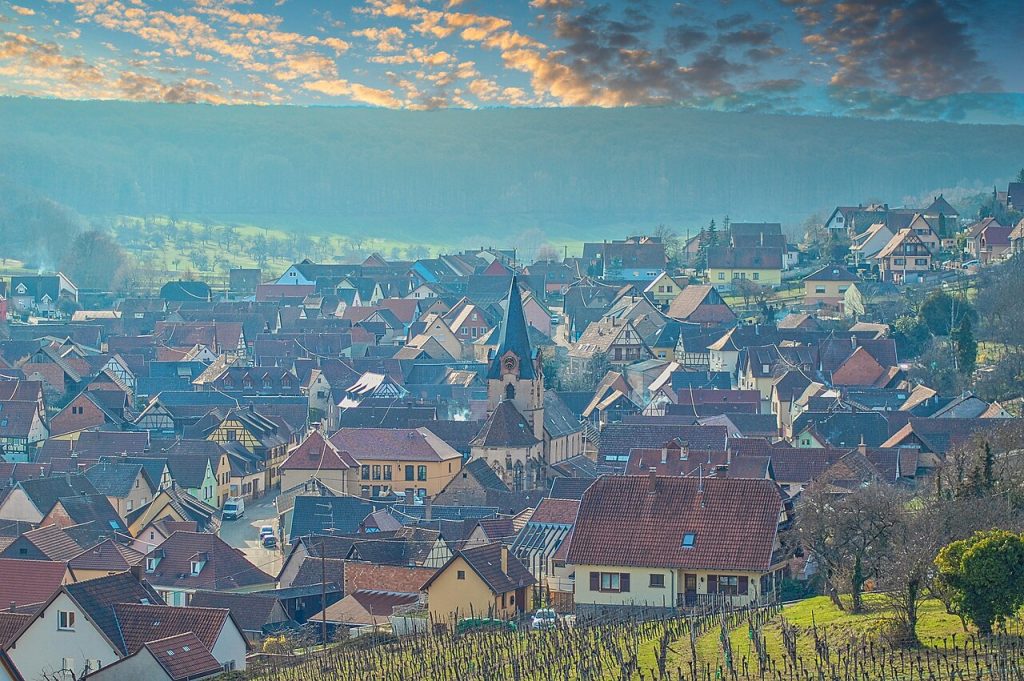
In 1727 the Jews, who had been burying their dead here for nearly four centuries, were granted permission to build a wooden fence around the cemetery and, twenty-two years later, a stone wall. With 6470 tombs over twelve acres, Rosenwiller’s Jewish cemetery bears witness to a long history: the oldest tomb dates from 1657.
As you walk through the old part of the cemetery, you will find here and there small Hebrew poems to the glory of the deceased and recurring symbols: broken columns for children and young women who died without offspring, Shabbat lamps for pious women, jugs for the Levites, blessing hands for the Kohanim (according to tradition, the Levi and the Cohen come from tribes consecrated to the priesthood).
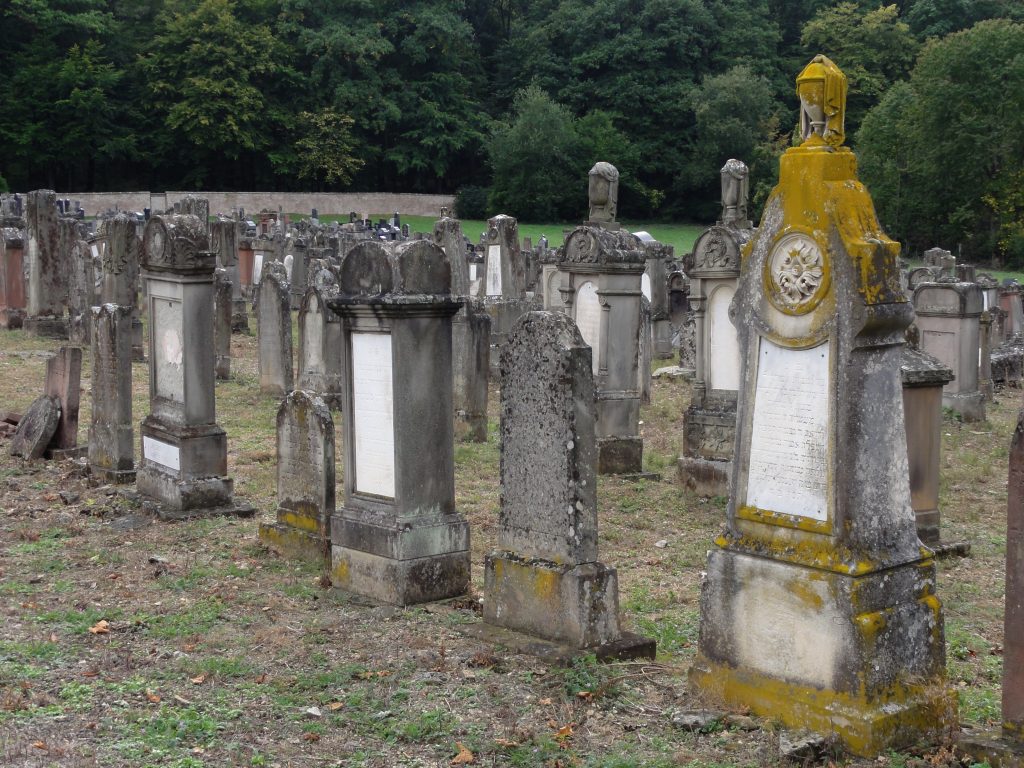
A collective book published in 2020, Rosenwiller: a Jewish presence throughout the century (I.D. Editions) tells the long Jewish history of Rosenwiller. That of the cemetery, but also the daily life of the Jews in the town, with its moments of happiness and turmoil. By presenting personal stories, objects, the Holocaust and the people involved in the rescue of the Jewish cultural heritage of Rosenwiller.
In 2022, 93-year-old death camp survivor Simone Polak unveiled a plaque at the Rosenwiller Jewish cemetery in tribute to her grandparents Caroline and Benjamin Bloch, the last guardians of the cemetery.
During the European Days of Jewish Culture and Heritage in 2025, a guided tour of the Jewish cemetery in Rosenwiller was organised for around fifty people to raise awareness of Rosenwiller’s Jewish history.
The Knacker’s Square
“When the Jews asked for a place to bury their dead (around 1350), they were shown a huge, arid square in Rosenwiller at one end of which the slaughterer buried dead horses. At the other end, they were allowed to bury their deceased coreligionists”.
Élie Scheid, Histoire des Juifs d’Alsace (History of the Jews of Alsace), 1887 (Paris: Librairie Armand Durlacher, Reprint Willy-Fischer, 1975).
Sources : judaisme.sdv.fr, Akadem
In this suburb of Strasbourg, one can see a fine eighteenth-century mikvah. A room dedicated to Davis Sintzheim (the first Grand Rabbi of France and director of the Talmudic school in Bischheim between 1786 and 1792) retraces the history of the Jewish community and houses temporary exhibitions.

The Jewish presence in Bischheim seems to be very old. Many Jews who worked during the day in Strasbourg without having the right to settle there lived with their family in Bischheim. This was probably already the case at the beginning of the 17th century.
If there were a little less than 40 Jewish families in Bischheim in 1774, this number doubled in ten years. In the middle of the next century, 759 Jews lived in Bischheim. But this number gradually decreased, reaching less than 300 at the turn of the 20th century. In 1936, half of them died in the Holocaust. The community tried to rebuild itself after the war. There were 52 Jewish families in 1959.
Among the great people who lived in Bischheim, how can we not mention Cerf-Berr. Having played a great role in the emancipation of the Jews. In particular, thanks to the text of the philosopher Moses Mendelsohn who wrote a plea for the improvement of the situation of the Jews in Europe. This text influenced other intellectuals, religious and political leaders who helped to advance access to citizenship for the Jews of France. David Sintzheim, Cerf Berr’s brother-in-law, became the first Chief Rabbi of France and presided over the Sanhedrin assembled by Napoleon. Among the other personalities of the city was Chief Rabbi Isaac Baer, who had one of his successors, Zadoc Kahn, as a student in the city.

The first synagogue in Bischheim was founded by Cerf Berr around 1780. The place quickly became too small, and another synagogue was inaugurated in 1838. At that time, the city also had a Jewish school with about 100 students. There was also a mikveh belonging to David Sintzheim. The synagogue was destroyed during the Second World War and rebuilt in 1959.
For a long time, the Jews of Bischheim were buried in the cemeteries of Rosenwiller and Ettendorf. Since 1797, the community has a cemetery , located between Bischheim and Hoenheim.
The mikvah and the museum hosting it can only be visited via reservations by email and phone.
Paving stones in memory of a family murdered at Oradour-sur-Glane and four members of the Resistance have been installed in Schiltigheim and Bischheim in 2024. On 28 April 2025, Stolpersteine were laid in tribute to five victims of Nazism during a ceremony.
Sources : Encyclopaedia Judaica, DNA and judaisme.sdv.fr
Strasbourg, the regional capital, is also home to the European Parliament, as witnessed by the European flags welcoming you at the train station. This magnificent city, at the heart of many political, national and religious conflicts over the centuries, has become a symbol of political, national and religious reconciliation and cooperation. Crossing its many bridges to the magnificent architectural imprints of the centuries and the cultural and gastronomic activities on offer await you…
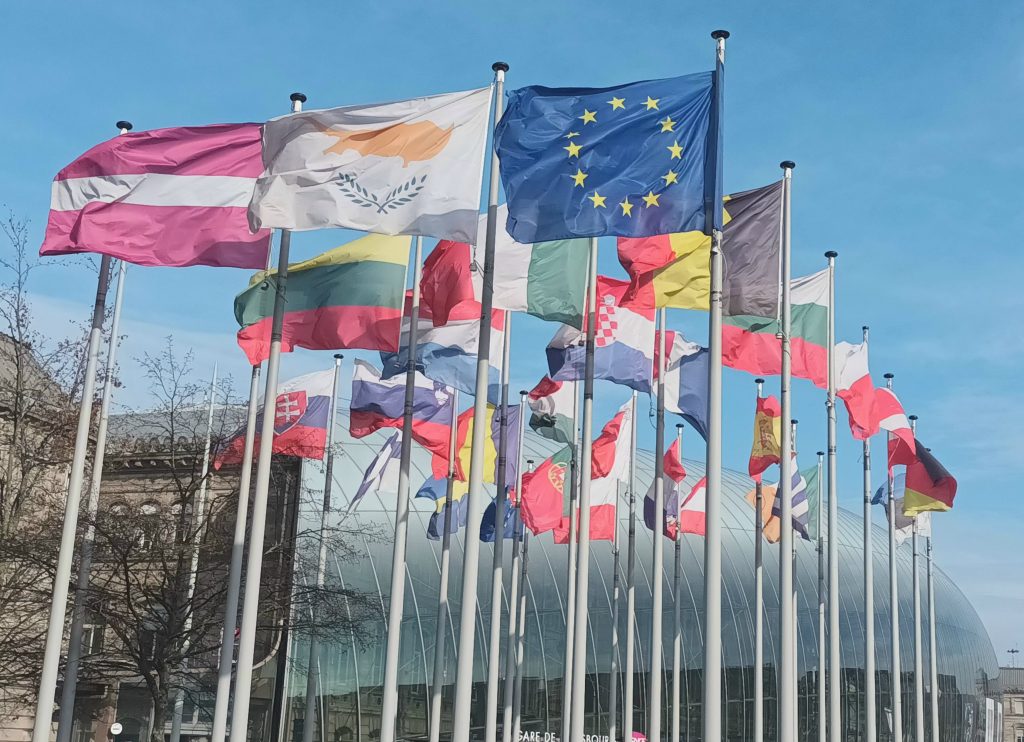
Jewish history is constantly present here. Is it not said that the rue de la Nuée-Bleue owes its name to the cloud that preceded the Jews expelled from the city in 1349, and that the rue Brûlée evokes the Jews burned alive that same year for refusing baptism?
The Jewish presence in Strasbourg has been attested to since the 12th century and, according to some researchers, is even older. The community had a synagogue, a mikveh and a cemetery. On Valentine’s Day, February 14, 1349, the Jewish population of Strasbourg was massacred. The few Jews who had fled in time were gradually allowed to return to Strasbourg, mainly as a result of an ordinance of 1375. But their banishment was promulgated in 1389. It remained in force until the French Revolution. During all these centuries, they had the right to stay for work, but had to pay an entrance tax. They lived in villages in the region that were more welcoming. At the beginning of the 17th century, the Jewish population of Alsace began to grow. At the end of the century, the rabbinate of the Jews of Alsace was created.
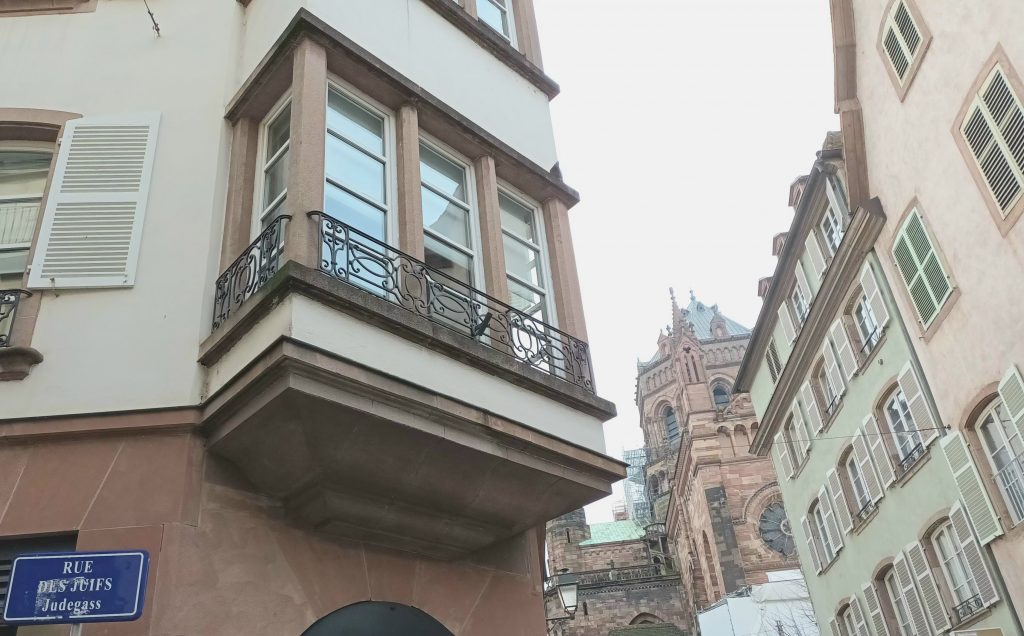
On the eve of the Revolution, some Jews managed to make timid progress towards the emancipation of their people. But the one who made the greatest impression was undoubtedly Hirtz de Mendelsheim, better known as Cerf-Berr. A contractor for the King’s armies, he succeeded, not without difficulty, in obtaining the right to settle in Strasbourg in the 1770s. He fought hard for the emancipation of the Jews, succeeding in abolishing in 1784 the corporal toll imposed on the Jews. He also helped the city of Strasbourg to fight against famine.
From 19 to 25 May 1789, a delegation of 37 delegates met in Strasbourg to draw up a book of ‘grievances and wishes of the Jewish nation of Alsace’. Nevertheless, it was not until after the Revolution, in 1791, that Jews were officially allowed to settle in Strasbourg. The community began to form, with David Sinzheim, Cerf-Berr’s brother-in-law, as its first rabbi. The Grand Sanhedrin met on 9 February 1807, presided over by David Sinzheim, who was later appointed Chief Rabbi of the Central Consistory of France.
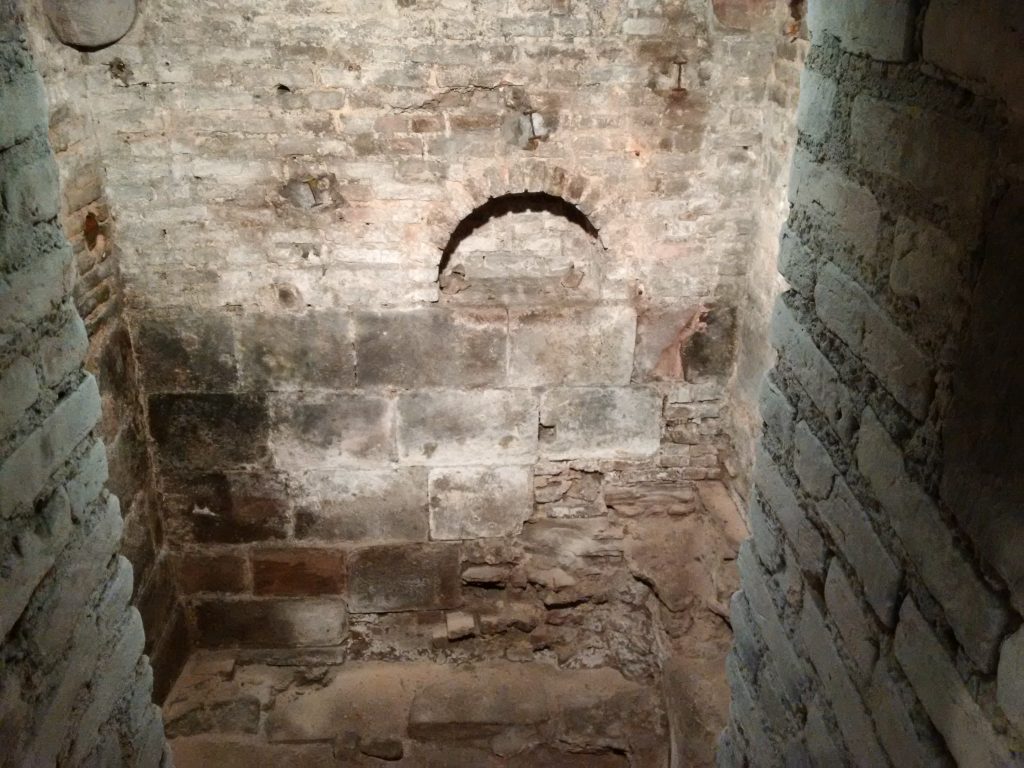
From 1811 to 1834, the congregation met in the former Poêle des Drapiers, then in a synagogue built in rue Sainte-Hélène in 1834. The rapid growth of the community necessitated the opening of a new synagogue on rue Sainte-Hélène. Built by the architect Ludwig Lévy, the Quai Kléber synagogue was inaugurated on 8 September 1898, replacing the previous Jewish places of worship.
On the eve of the Second World War, the city had 10,000 Jews in Strasbourg. Following the capitulation of France, they escaped to other regions, reconstituting their community, mainly in Périgueux and Limoges. René Hirschler, the Chief Rabbi of Strasbourg, ensured the link with the dispersed Jews of Strasbourg and undertook courageous work to save the prisoners who might be deported. Mobilization in the Resistance and to help the population was also done through associations such as the EEIF and the OSE. Many of these resistance fighters from Strasbourg died on the battlefield.
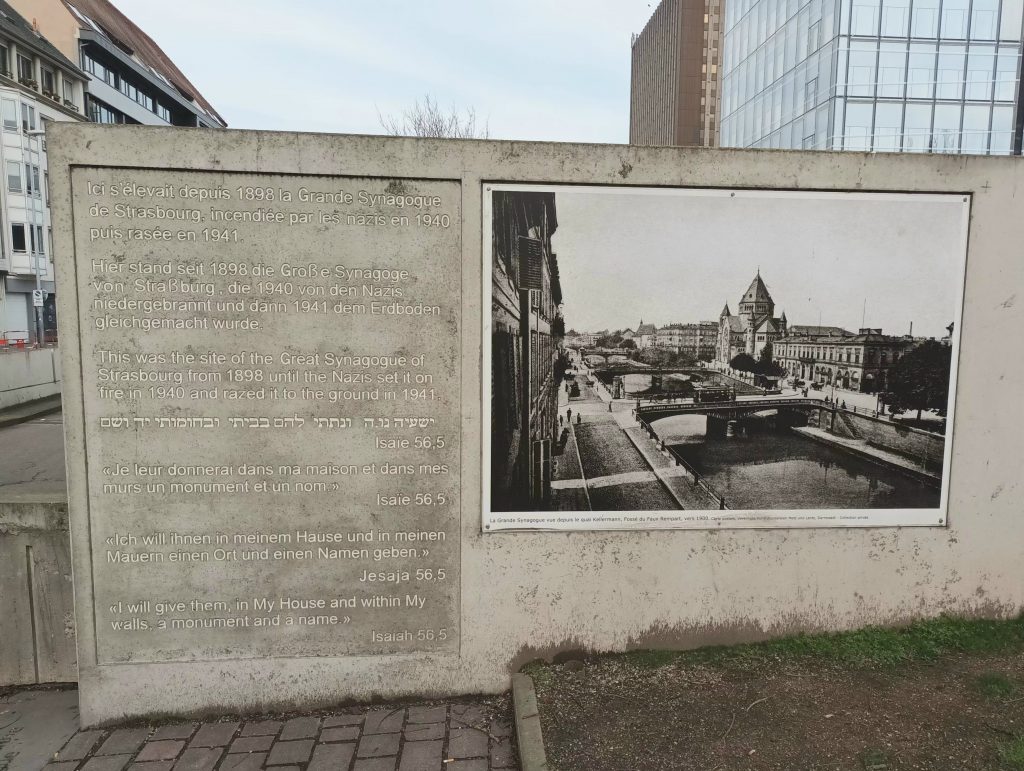
The monumental synagogue on the quai Kléber was burned down by the Nazis in 1940. One thousand Jews from Strasbourg were murdered during the Shoah. After the war, eight thousand Jews resettled in the city.
From 1950 to 1958, the city made a building in the former Arsenal available to the Jews of Strasbourg. The Synagogue de la Paix (Peace Synagogue) is located in the Neustadt district, with its impressive Prussian-style buildings, built between the 1880s and the First World War and enabling the city to triple in size. The synagogue was designed by the architect Claude-Meyer-Lévy and can accommodate 1,600 worshippers. Its main façade is decorated with a wave of Stars of David. On 13 March 1958, the Strasbourg community inaugurated this major new place of worship, in the presence of the Mayor of Strasbourg Charles Altorffer, the Minister of State Pierre Pfimlin, the Chief Rabbi of France Jacob Kaplan, Charles Ehrlich (President of the Community), Joseph Weill (President of the Consistoire) and Abraham Deutsch (Chief Rabbi of the Bas-Rhin). On 22 November 1964, General De Gaulle presided over ceremonies marking the 20th anniversary of the liberation of Strasbourg by General Leclerc’s troops. He visited a number of monuments, including Notre-Dame Cathedral and the Synagogue de la Paix. Simone Veil, a former deportee who became Minister of Health from 1974 to 1979, then First President of the European Parliament from 1979 to 1982, made a high-profile visit to the synagogue in 1988.

Inside, you’ll admire the holy arch, whose bold shapes highlight a tapestry by the artist Jean Lurçat. The site is actually home to five synagogues, including one following the Ashkenazi rite of the Rhine Valley and another combining Ashkenazi and Sephardic rites, sometimes during the same ceremony! The large René Hirschler hall is used for major celebrations.

The arrival of North African Jews in the 1960s, mainly from Algeria and Morocco and a few families from Tunisia, encouraged the transformation of the Léo Cohn village hall into an oratory, followed by the inauguration of the Rambam synagogue in the early 2000s.

In 1868, Oscar Berger-Levrault demolished the old buildings on the corner of rue des Juifs and rue des Charpentiers to build a new printing works. A mikveh dating from the first half of the 13th century was discovered at the time, but not preserved or even photographed. Much later, during renovation work in 1984 in the Rue des Juifs, it began to be preserved and inscribed in the city’s monuments list. The central element consists of a square room of 3 meters on each side made of gray sandstone topped with red bricks. In each corner, Romanesque corbels remain.
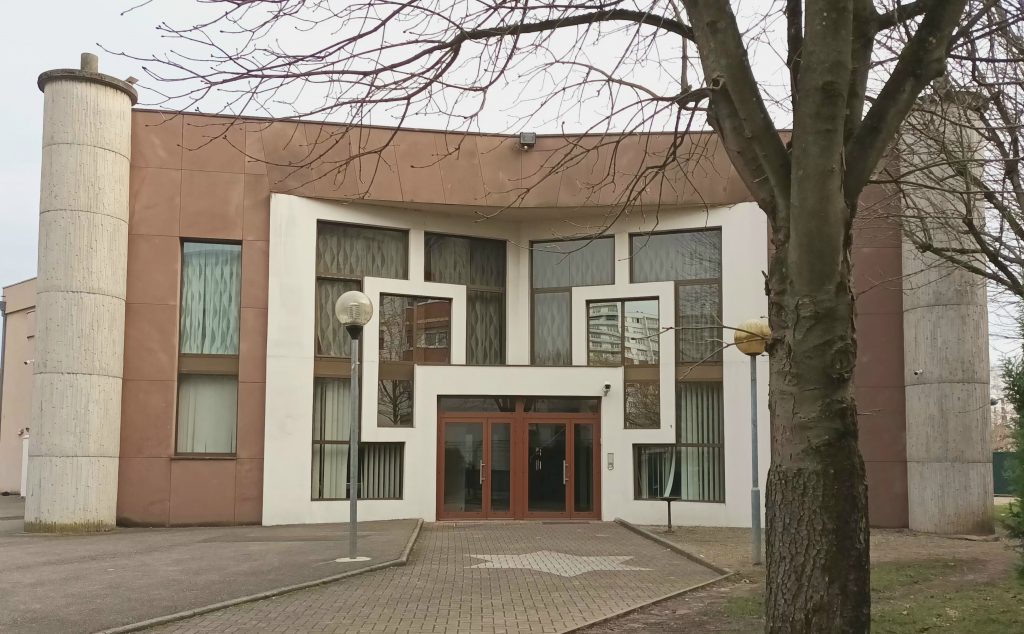
The Esplanade synagogue was inaugurated on 12 April 1992 in rue de Nicosie. At the time, it was located in an area marking the growth of the Jewish population a little further away from the city centre.
As confirmed by Alain Fontanel, the deputy mayor of Strasbourg, in 2018 to the Akadem website, following the death of Simone Veil, the city had wished to pay tribute to her. Thus, the Avenue de la Paix, was renamed Avenue de la Paix – Simone Veil. In order to honor her fights for women’s rights, European unity and the memory of the Shoah. A very strong nomination symbolically since this avenue was previously named the German street, then the Daladier street and during the occupation, the Hermann Goering street!
In 2019 was inaugurated the place Jean Kahn, located opposite the synagogue. This, in tribute to this great figure of French Judaism. A year earlier, the mikveh on rue des Charpentiers was reopened. A rare occurrence in France, the Jewish population of Strasbourg has increased in recent years, with the development of institutions and the diversification of currents, both Orthodox and liberal. In 2025, the Jewish population of Strasbourg represents about 20 000 persons.

In the Alsatian Museum a small country oratory is reconstituted with its library, its Torah scroll and its Shabbat lamp. Two other rooms are dedicated to Judaism. There are some curious pieces, such as a carved wooden Star of David with a double-headed imperial eagle from 1770.
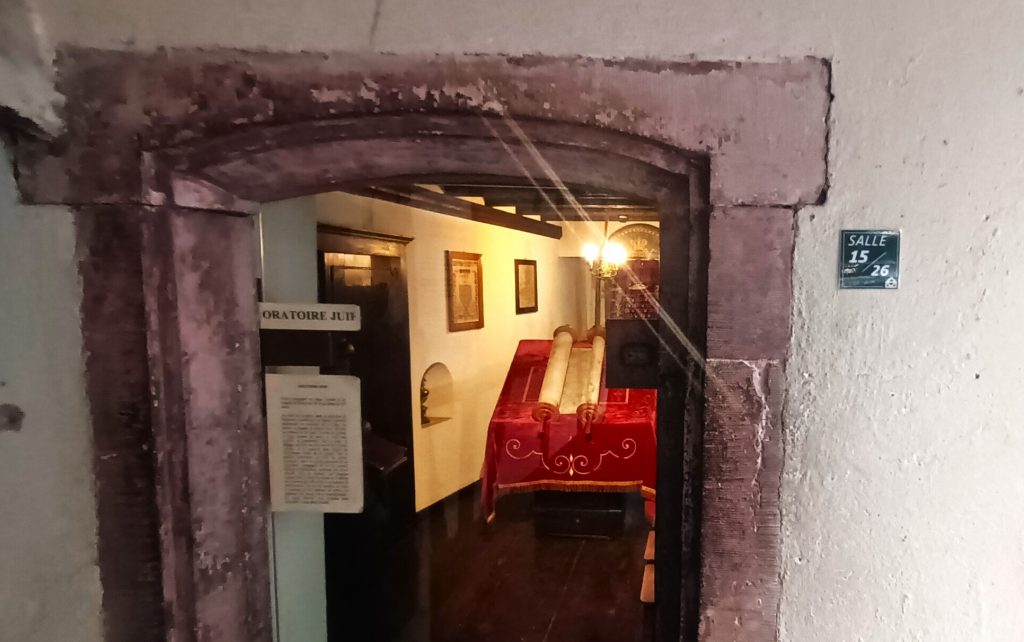
But also panels in Hebrew and French from the synagogue of Jungholtz calling for divine blessings on Emperor Napoleon III, and a painting commemorating the “Inauguration of a Pentateuch in Reichshoffen on November 7, 1857”, a moving evocation of fervor and patriotism.
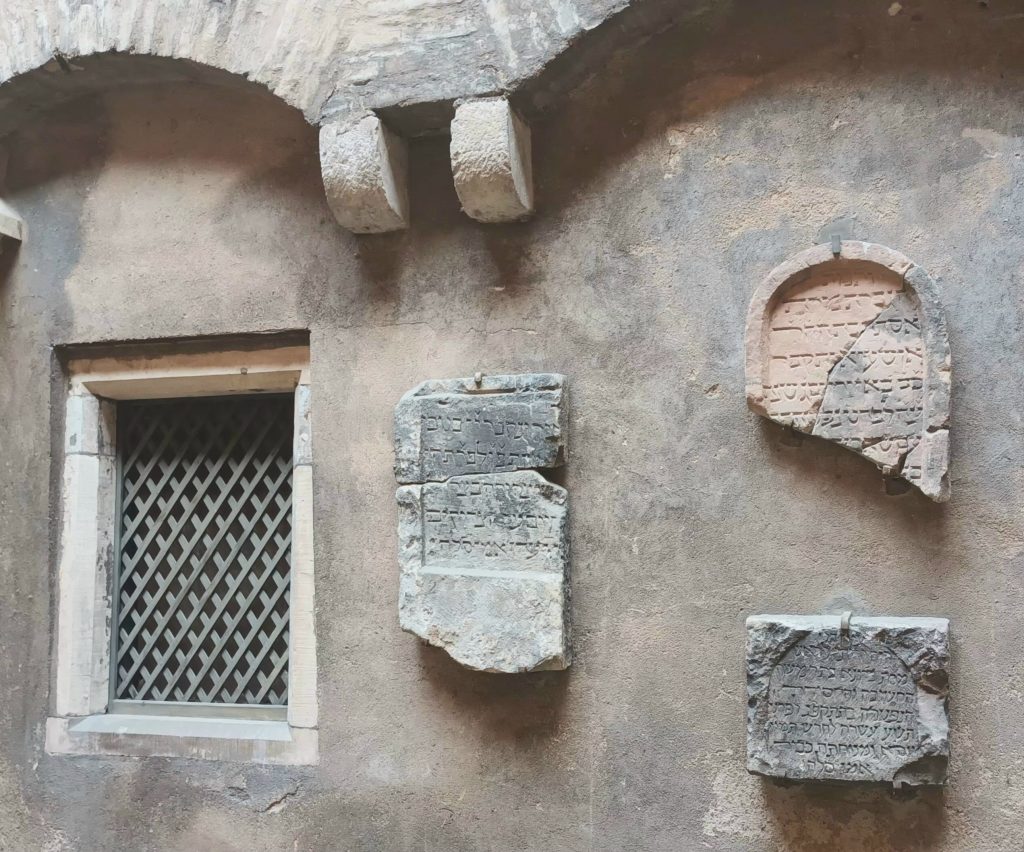
In the courtyard of the Musée de l’Œuvre Notre-Dame dedicated to the arts of the Strasbourg region between the eleventh and seventeenth centuries, one can see Jewish funerary steles from the medieval cemetery that was located on the site of the current Place de la République.

On 23 January 2025, the AEPJ (European Association for the Preservation and Promotion of Jewish Culture and Heritage), which is responsible for the European Days of Jewish Culture, celebrated its 20th anniversary in Strasbourg. This is no coincidence, given the symbol of European reconciliation that Strasbourg represents, but also the crucial role played by local and Luxembourg personalities, notably Claude Bloch and François Moyse, in setting up AEPJ. The Council of Europe, under the auspices of the Luxembourg Presidency, hosted the event on 23 January, which was attended by Claude Bloch (Honorary President of the AEPJ) and François Moyse (President of the AEPJ), Björn Berge (Deputy Secretary General of the Council of Europe), Eric Thill (Minister of Culture of the Grand Duchy of Luxembourg), Catherine Trautmann (former Minister of Culture, former Mayor of Strasbourg and currently a municipal councillor), Gabrielle Rosner-Bloch (Regional councillor for culture and religion, in charge of heritage for the Grand Est Region) and Irena Guidikova (Head of the Department for Democratic Institutions and Freedoms).
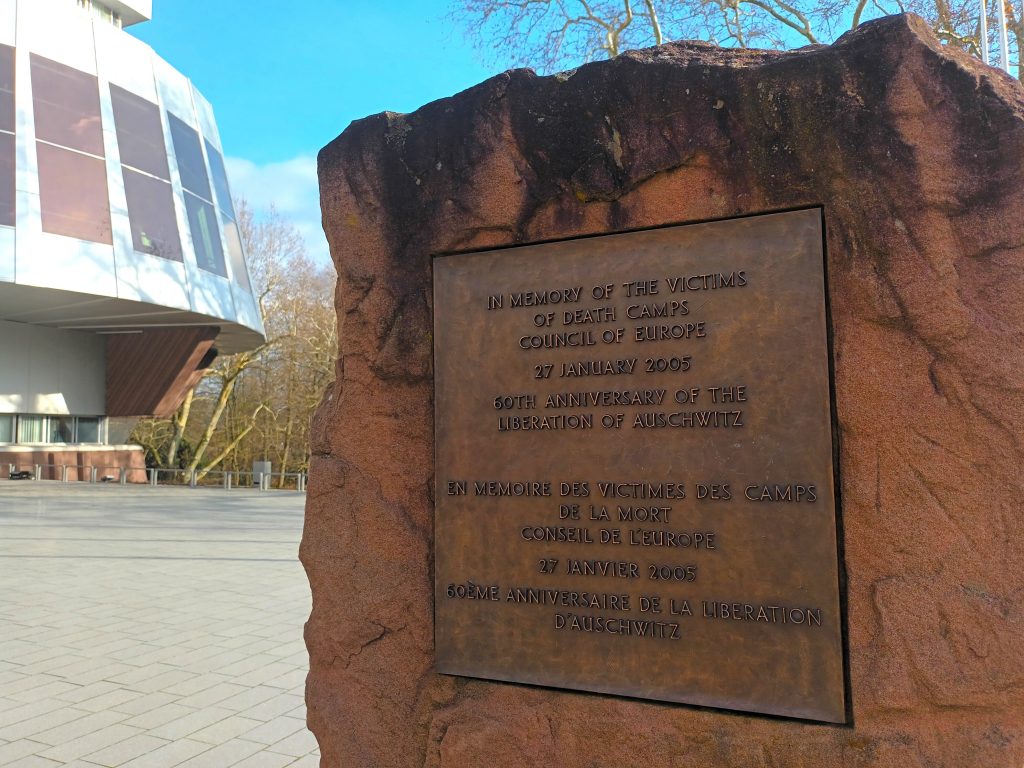
Jguideeurope was delighted to take part in the day’s events, which included lectures on medieval Judaism in Alsace, Erfurt and the Iberian Peninsula. This was followed by visits to Strasbourg (in particular the Synagogue de la Paix) and a reception at the Residence of the Permanent Representation of Luxembourg. A day where speakers and participants recounted many moving personal stories and signs of hope for the future, such as the revival of Jewish culture in Poland. Above all, they repeatedly reaffirmed their commitment to the fight against anti-Semitism in all its forms, the preservation of cultural heritage and the sharing of humanist values between peoples. This is particularly important 80 years after the liberation of Auschwitz.
ITINERARY
This itinerary will enable you to discover the places mentioned in connection with Jewish life in Strasbourg, both past and present. It’s just under 4 km starting at the Strasbourg train station.
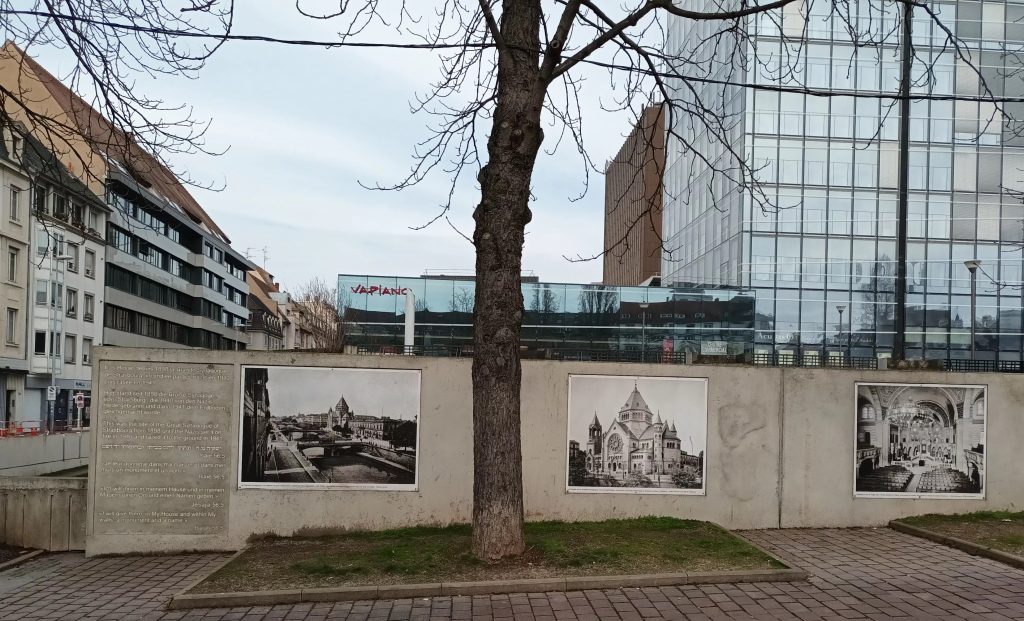
Take rue Kuhn and you’ll come to quai Kléber, where the former synagogue burnt down. Period photographs commemorate the site.
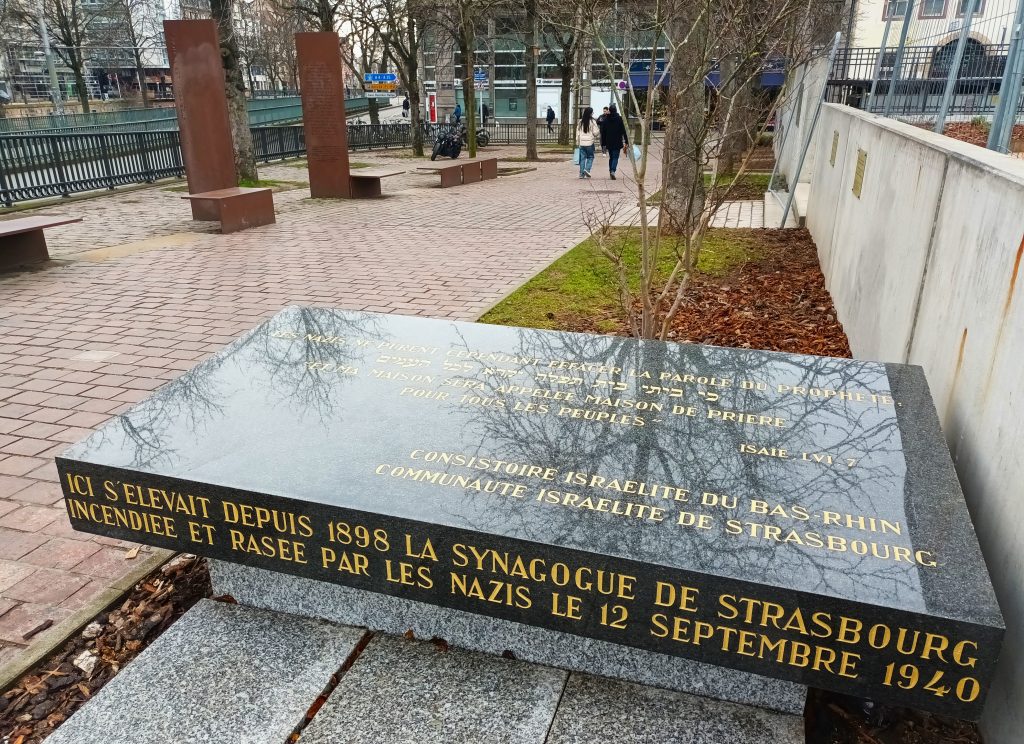
The site has been named Allée des Justes (Alley of the Righteous), in memory of the courageous people who saved Jews during the Shoah. It was inaugurated on 22 July 2012 by Roland Ries (Senator and Mayor of Strasbourg).

Follow the quay to the left, until you reach rue du Général de Castelnau and that of his colleague General Rapp.
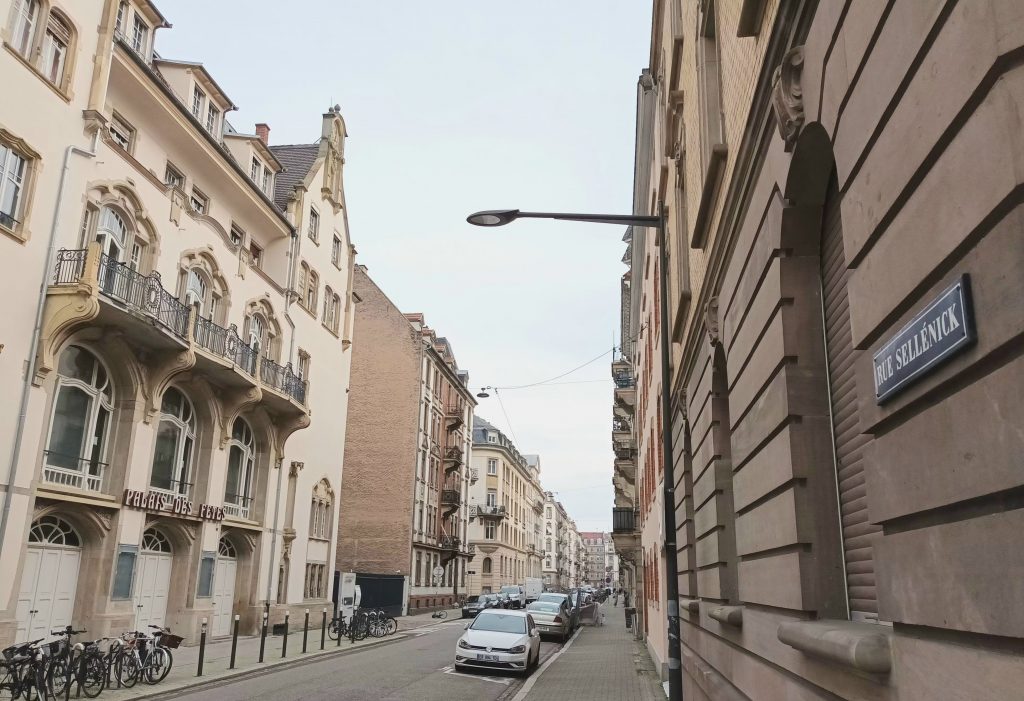
Rue Sellénick and the surrounding area is a small shtetl with schools, cultural venues such as the Cédrat bookshop and kosher restaurants.

Just a couple of hundred metres down the rue Strauss Durkheim, you’ll come across the Synagogue de la Paix, next to which is the Place Jean Kahn.
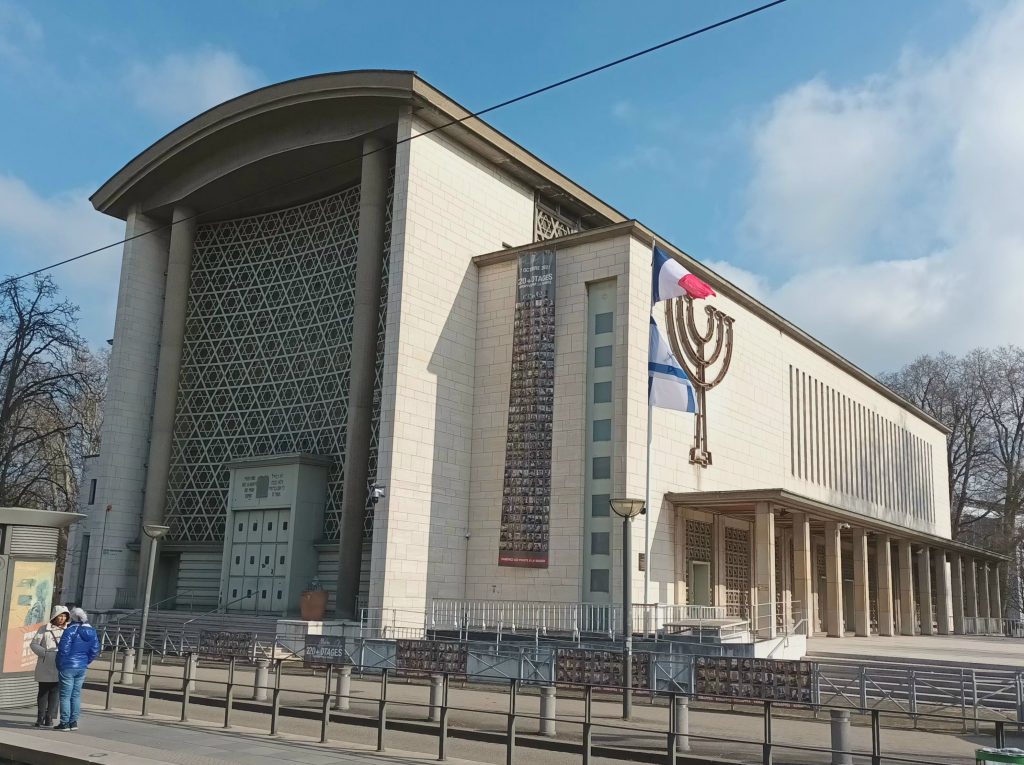
The Avenue de la Paix Simone Veil was named in tribute to the first President of the European Parliament, whose appointment, and above all her commitment to women’s rights and remembrance, symbolises the will and reality of peace in Europe since the end of the Second World War.
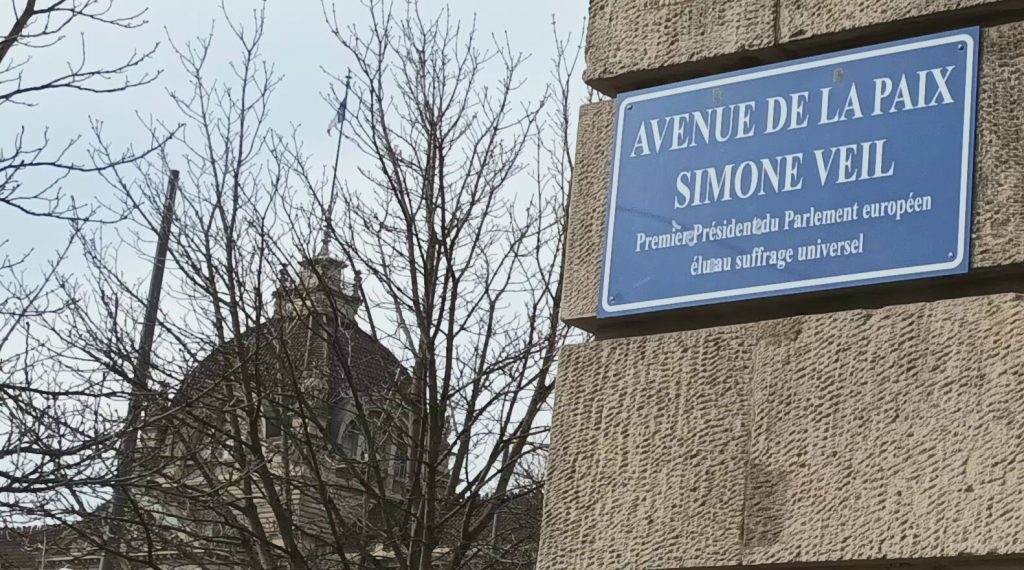
The avenue leads to the beautiful Place de la République (where the ancient Jewish cemetery used to be), surrounded by the Palais du Rhin, the University Library and the National Theatre.

Next to the National Theatre, the Passerelle des Juifs (Footbridge of the Jews) leads to the Quai Lezay Marnesia.

Take the Rue du Parchemin, which continues into the Rue des Juifs and where you will discover the old mikveh. Visits to the mikveh, like those to the synagogue, should be organised in conjunction with Jewish institutions.
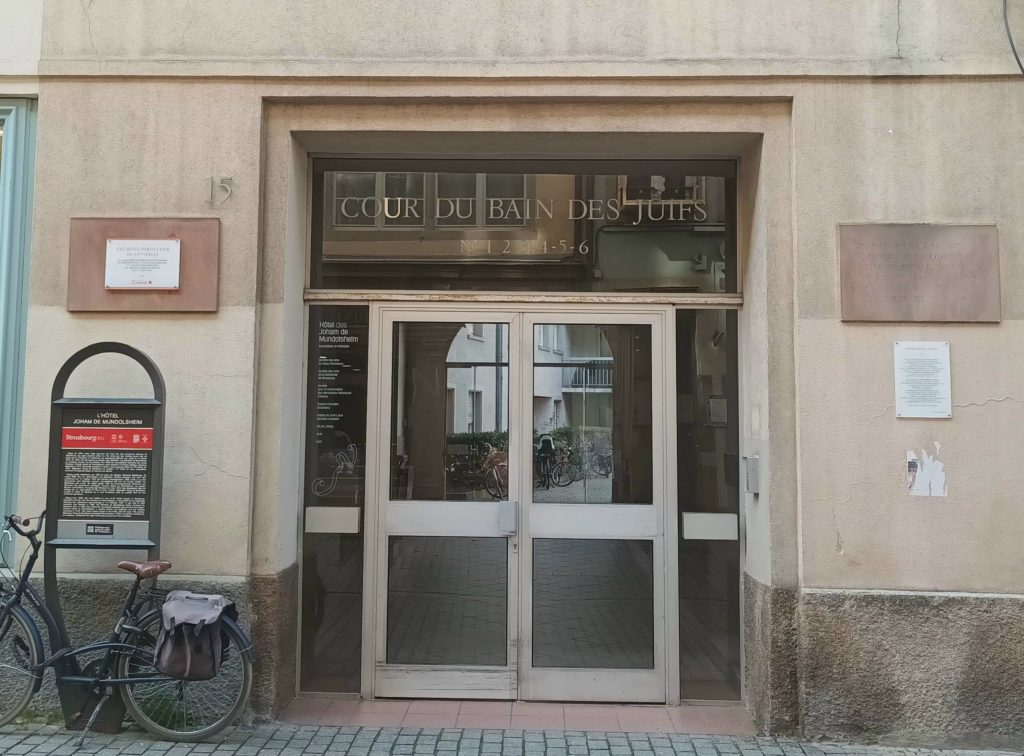
At the end of this street, opposite the former Kammerzell house, you will come across Strasbourg’s magnificent cathedral.
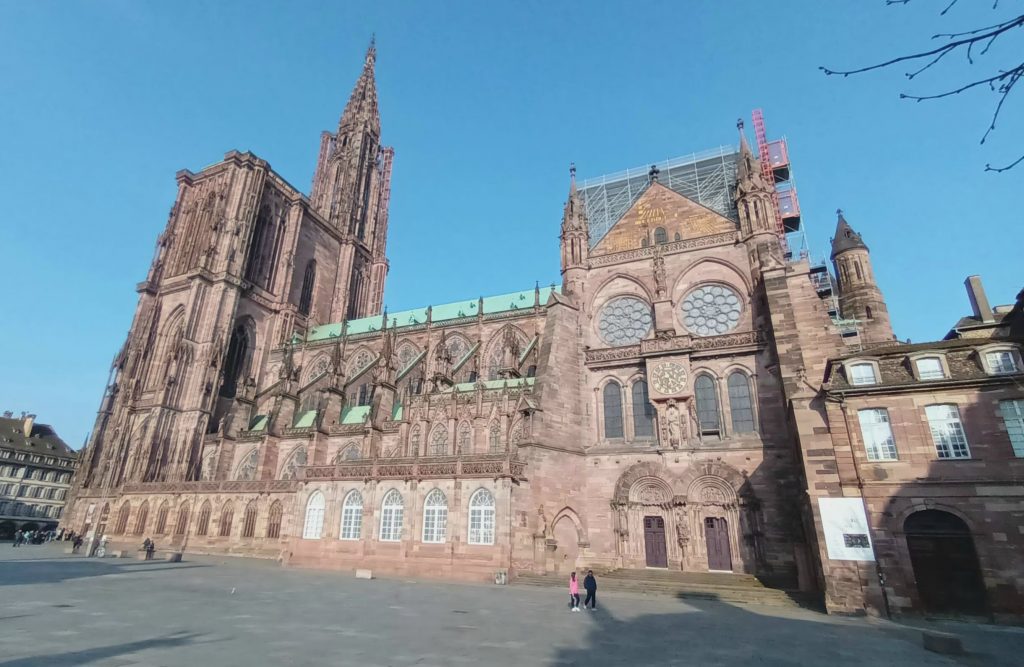
With its sculptures and its famous clock. A clock that, with all its references and inspirations, will take you on a journey through time and space.

She will also tell you that it’s time to round off this wonderful visit by visiting the Musée de l’œuvre-Notre-Dame, just down the road, and the Musée Alsacien (Alsatian Museum), a 5-minute walk away across the Pont du Corbeau.

This astonishing museum of regional arts and traditions lets you discover the diversity of this experience and its representations over the centuries. In particular, the ingenuity of the Alsatians in coping with the harsh winters and their early ecological awareness! There are also the various pieces of furniture made from fir wood, and the glassmakers of Meisenthal who invented Christmas decorations on fir trees, replacing the apples and walnuts usually used for this type of decoration when there were food shortages. Not forgetting local ceramics and the evolution of its iconic costumes.

Alsace’s ancient religious traditions are presented in rooms dedicated to Catholicism, Protestantism and Judaism.
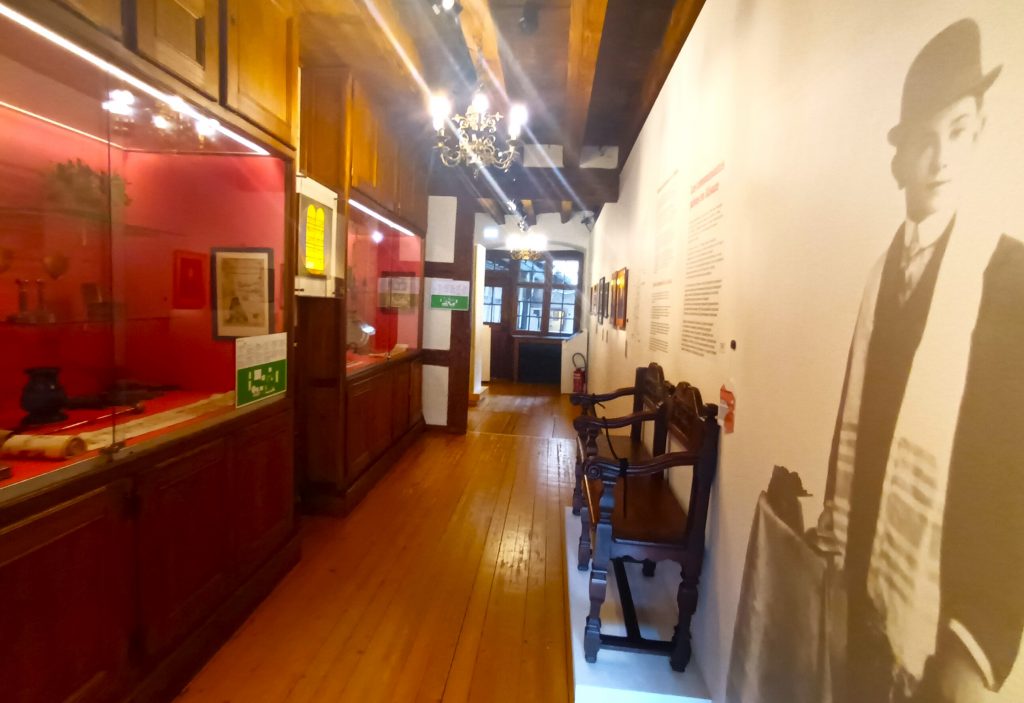
But they are also presented at different times, as in Room 9, where the objects used for circumcision are on display.
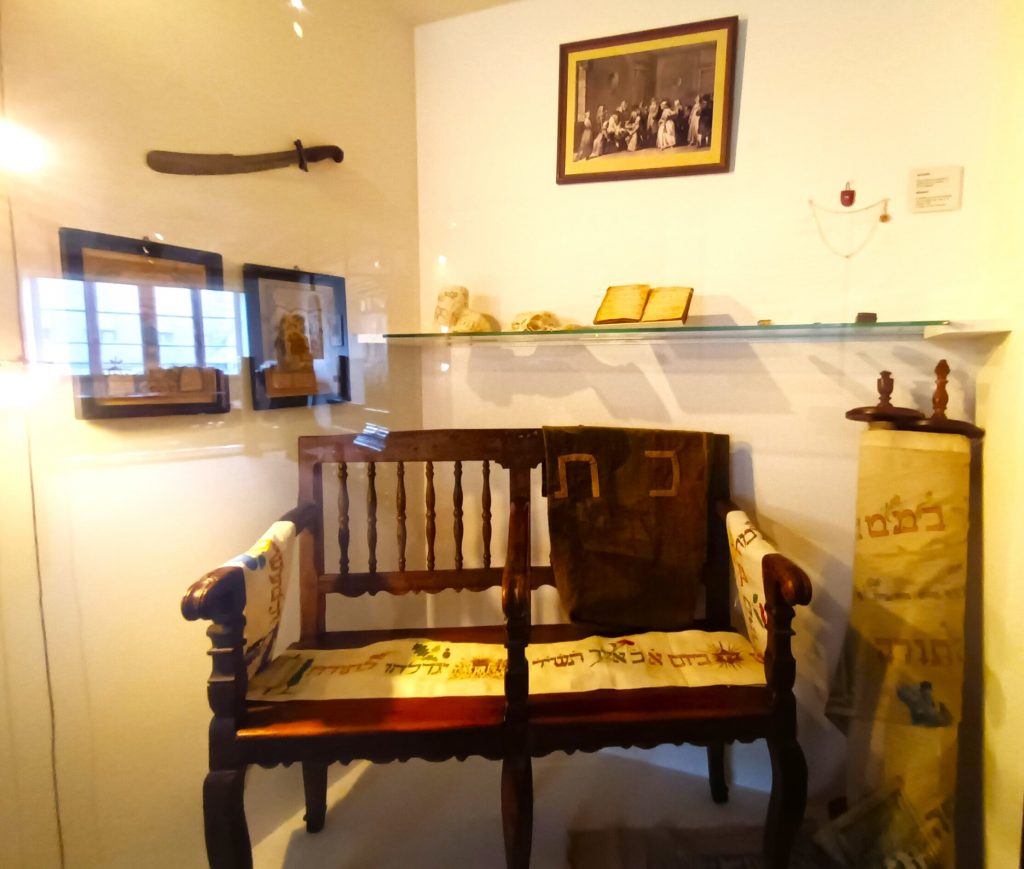
Room 10 has a map showing the former presence of religions in Alsace. Then you enter the rooms dedicated specifically to each of the three religions. Many Jewish objects of worship are on display.
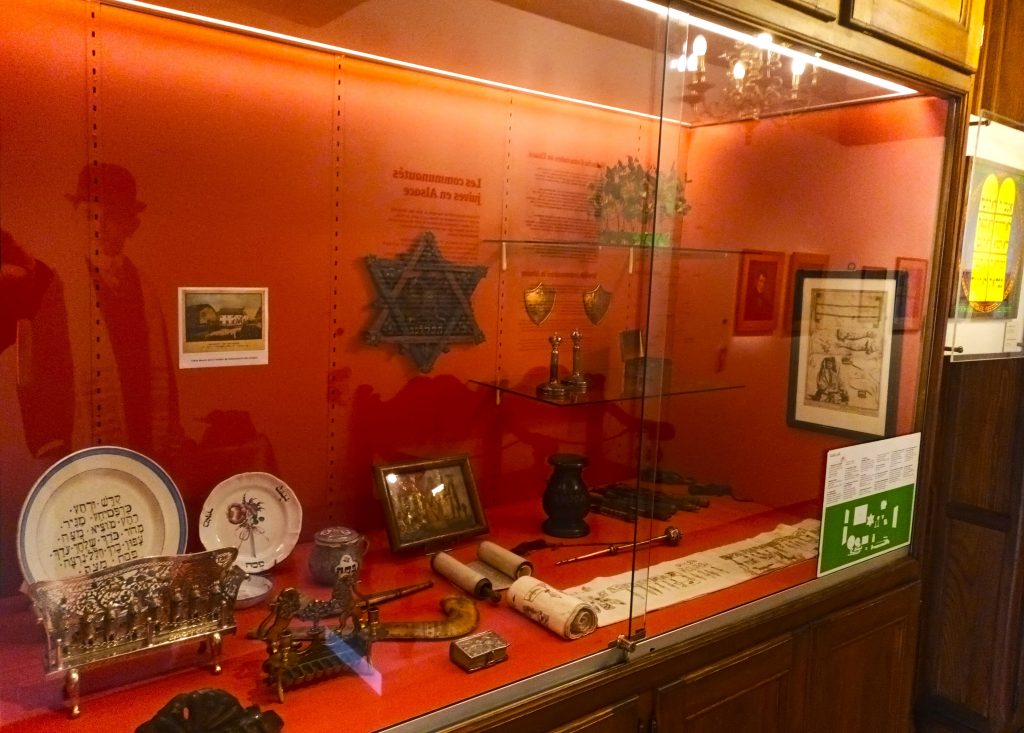
There is also a prayer board in Hebrew and French for Napoleon III.
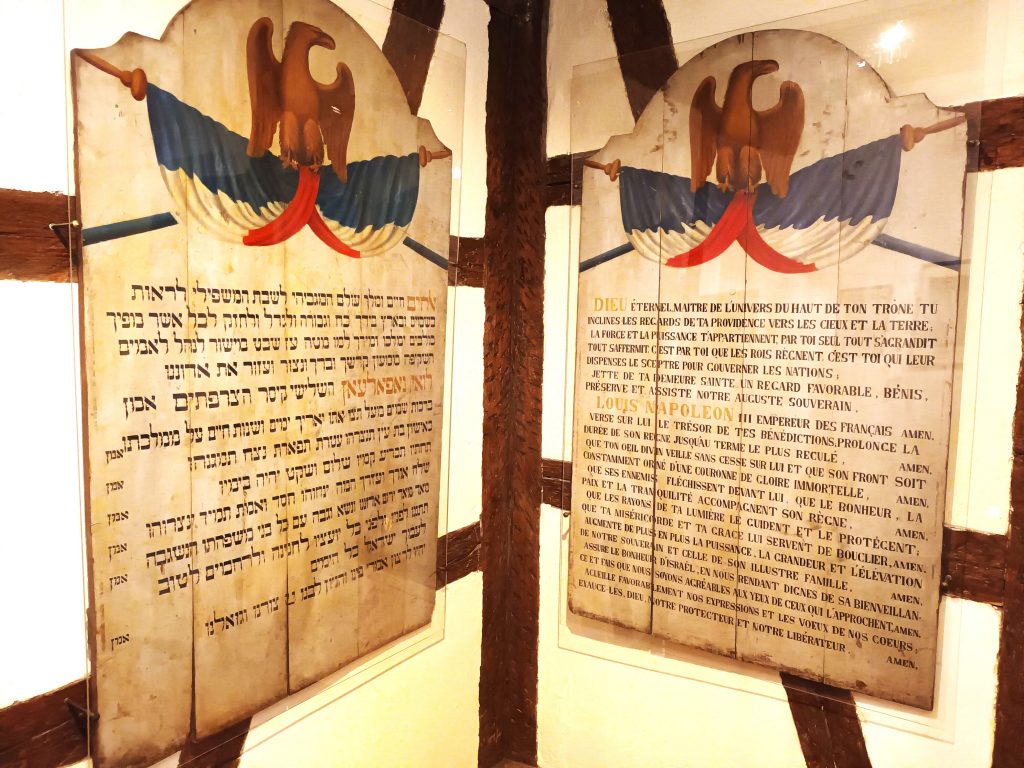
And above all, as a link between the past and the future, the tribute to the Guardians of the Sites, the courageous people who fought to preserve Alsatian Jewish cultural heritage in the villages of the region, such as Habsheim, Hagenthal, Mommenheim, Muttersholtz, Westhoffen and Zellwiller, presented in this room. The Jewish oratory is located just beyond in room 15.
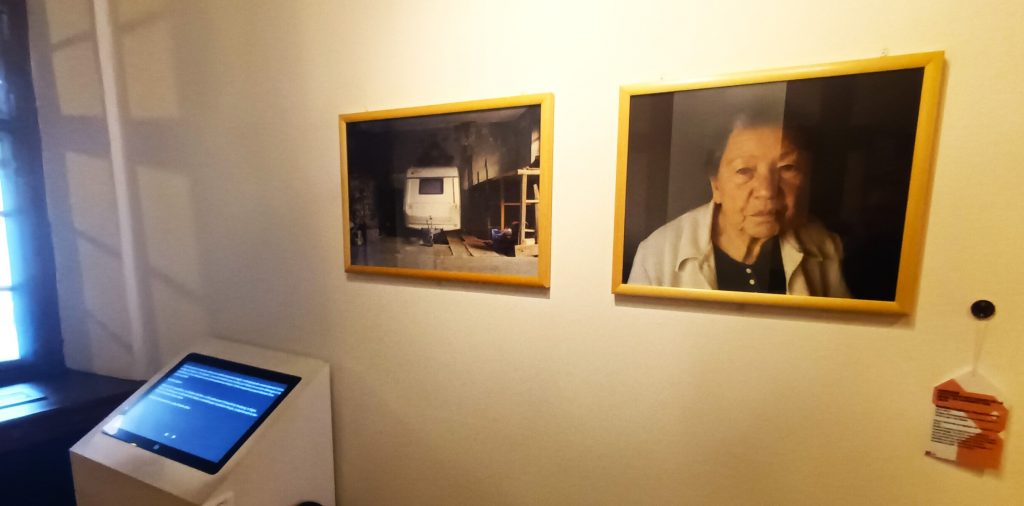
We had the pleasure and honor to visit the Museum of l’Oeuvre Notre-Dame with Jean-Pierre Lambert, President of the Society for the History of the Israelites of Alsace and Lorraine and one of the members of the Alsatian team behind the European Days of Jewish Culture and Heritage.

Jguideeurope: How was this museum created?
Jean-Pierre Lambert: The Foundation of l’Oeuvre Notre-Dame dates back to 1224, when it was responsible for the construction and restoration of Strasbourg’s cathedral. After the bishop had been defeated at Hausbergen and had definitively lost all temporal power over the city, since 1262 it has depended exclusively on the municipal authorities of the Free City of Strasbourg. The Foundation had its own sculpture workshops, as well as an architecture department and employed historians. In 1459, it became the Supreme Lodge of the Holy Roman Empire. Closer to home, it is the driving force behind a group of 18 cathedral workshops from 5 European countries, which will be included on UNESCO’s World Intangible Heritage List in 2020.
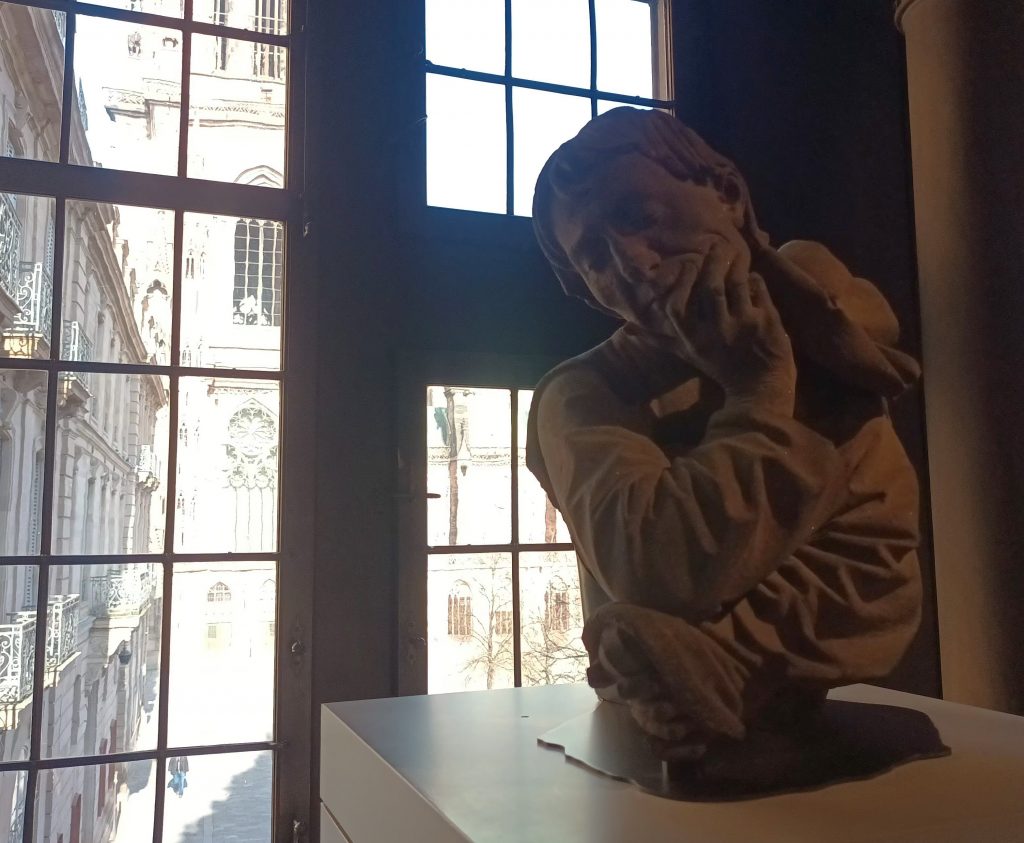
Since its creation, the charity has accumulated documents, replaced statues and other artefacts from the cathedral. It has also received countless donations and bequests from the faithful, religious art objects, not always related to the cathedral, such as forests or buildings. The OND conserves and exhibits all kinds of objects, most of them medieval: numerous Jewish tombstones from Strasbourg’s first cemetery, as well as statues, stained glass windows, paintings and tapestries from all over Alsace. To preserve and display the jewels in its collection, the OND has a magnificent complex of medieval and Renaissance houses opposite the cathedral, all of which have been added on top of each other, making for a highly original and interesting tour, passing through doorways and staircases that give a labyrinthine feel to this journey through time. Along the way, you can still admire the operative masons’ meeting room.
Some of the exhibits on display bear witness to the way in which Jews were viewed by the church, providing a better understanding of a complex relationship that is often caricatured to the extreme. It is also possible to do this research by visiting the cathedral, but it is more difficult because the evidence is less visible and the original statues and stained-glass windows have often been replaced by copies, or worst by 19th-century recreations of statues destroyed during the Revolution, which fortunately are less frequent than at Notre-Dame de Paris.
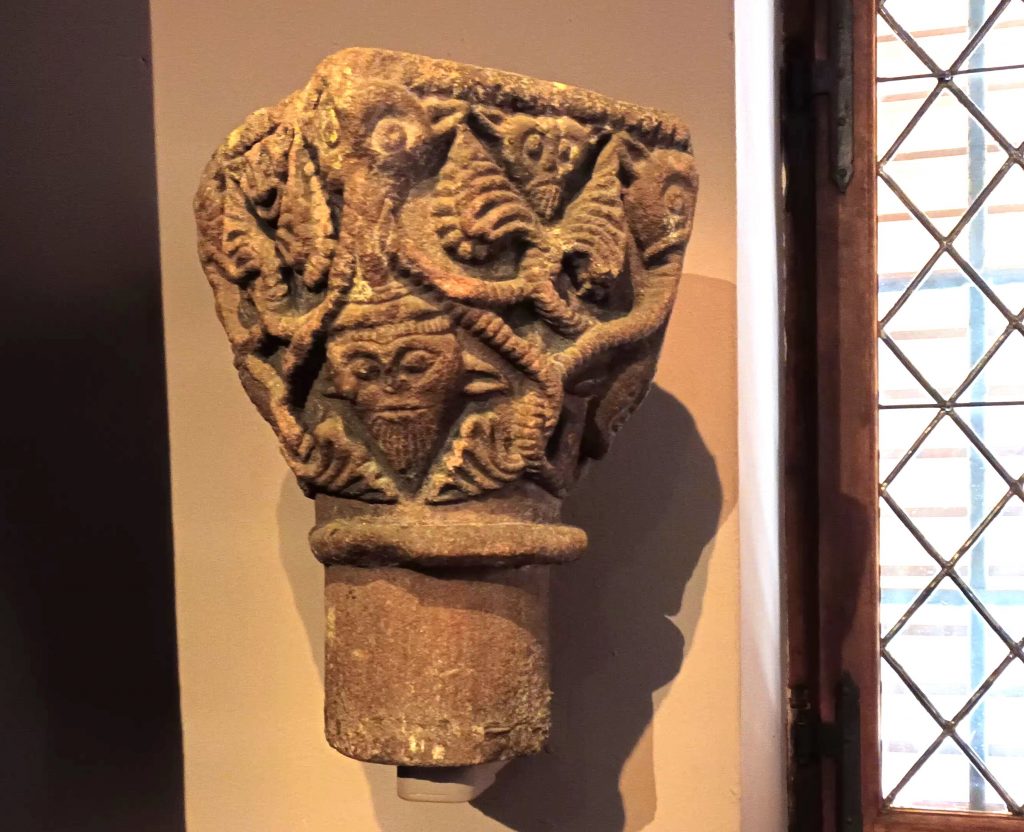
Was this view of the Jews positive or negative in the Middle Ages?
It was both. Exactly what we find in the Cathedral. It’s the same message, combining closeness and knowledge of the other with an often gentle but real demonisation.
Let’s take a few examples: in the first room of the OND, you can see a Romanesque capital where Jews with slightly deformed faces stand side by side with bats. This is a rare representation. For Francis Salet, the bat is the image of those who, like the Jews, are ignorant and refuse to see the truths of the Christian faith. This capital, which is in a rather poor state of repair, is probably a model (forgotten by its owner) of a similar capital carved in OND used during the restoration of the church at Sigolsheim. Some people have thought that these are two originals, and have deduced that this rare representation is common!
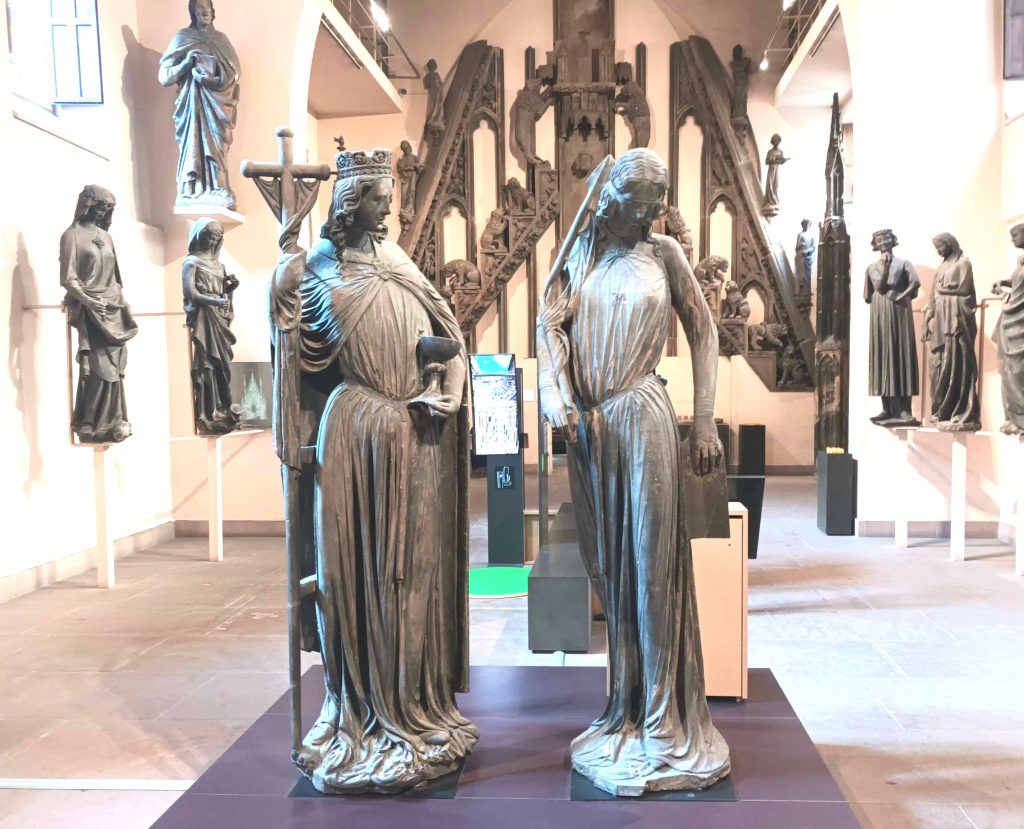
A little further on, a stained-glass window depicts Moses presenting Jews, recognisable by their pointed hats, with the bronze snake from Genesis coiled on a tau, resembling a caduceus. But we soon discover that the Jews are crossing their hands, in the manner of a praying Christian. This representation was very common in the Middle Ages and signifies that Moses, having seen the light, is himself asking the Jewish people to convert, which those present accept. According to Saint Paul, this conversion is the sine qua non for the return of the Messiah and therefore for the Parousia. For some, it had to be preceded by the return of the Jewish people to their homeland. This explains the unconditional support for Israel of American evangelical Protestants. The original statues of the Church and the Synagogue, perhaps the most famous medieval statues in the world, are also on display at the OND. To understand the scene, you need to go and see their copies, on the south portal of the cathedral. The synagogue, frail, very beautiful and swaying, is attracted to Christ and Solomon, his equal in wisdom and predecessor, but at the same time turns away from them. She is like the bride in the Song of Songs, willing and unwilling. Will Solomon be able to convince her? The fate of the world seems to depend on it.
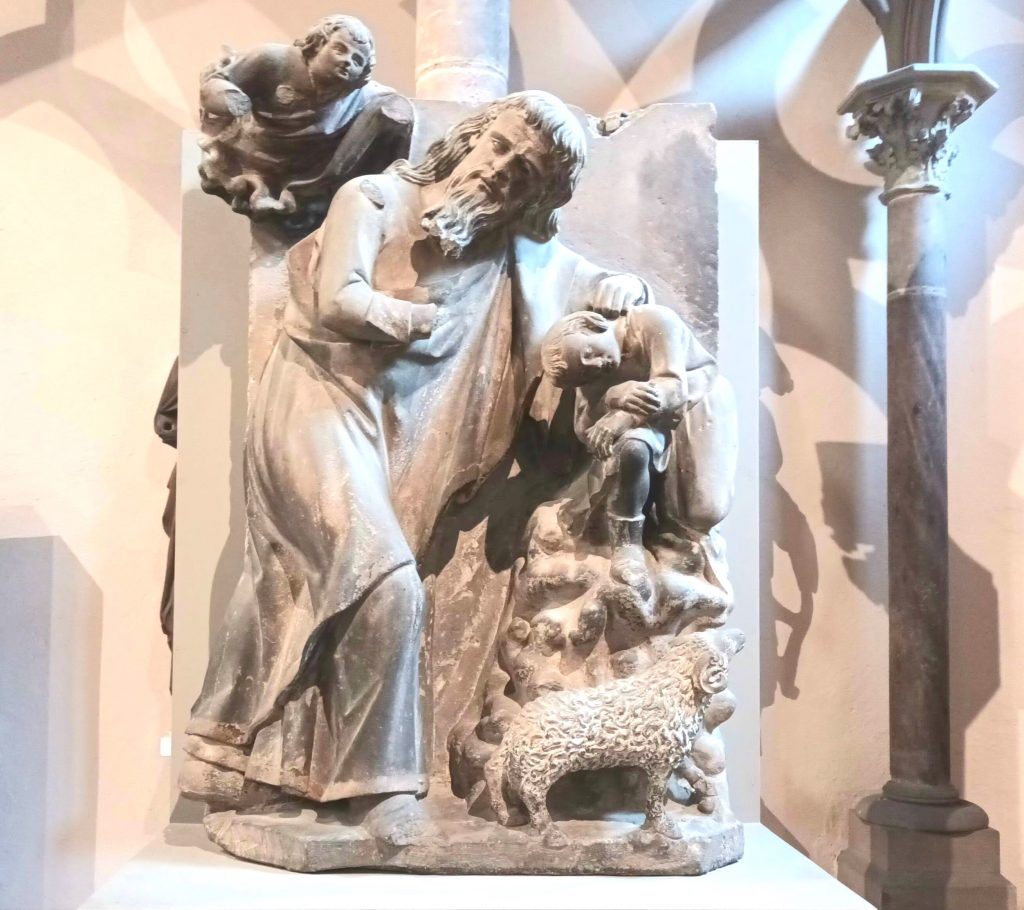
Can you give us other examples of this complexity?
Yes, of course. Let’s take a scene that is very often depicted: the sacrifice of Isaac. For a Christian, this sacrifice is the first attempt to save the world by sacrificing a righteous person. It was a failure, because the sacrifice was unfulfilled. Christ had to die before humanity could be saved. I much prefer the Jewish interpretation, which says that by saving Isaac, the angel showed that the sacrifice of a human being is unacceptable.
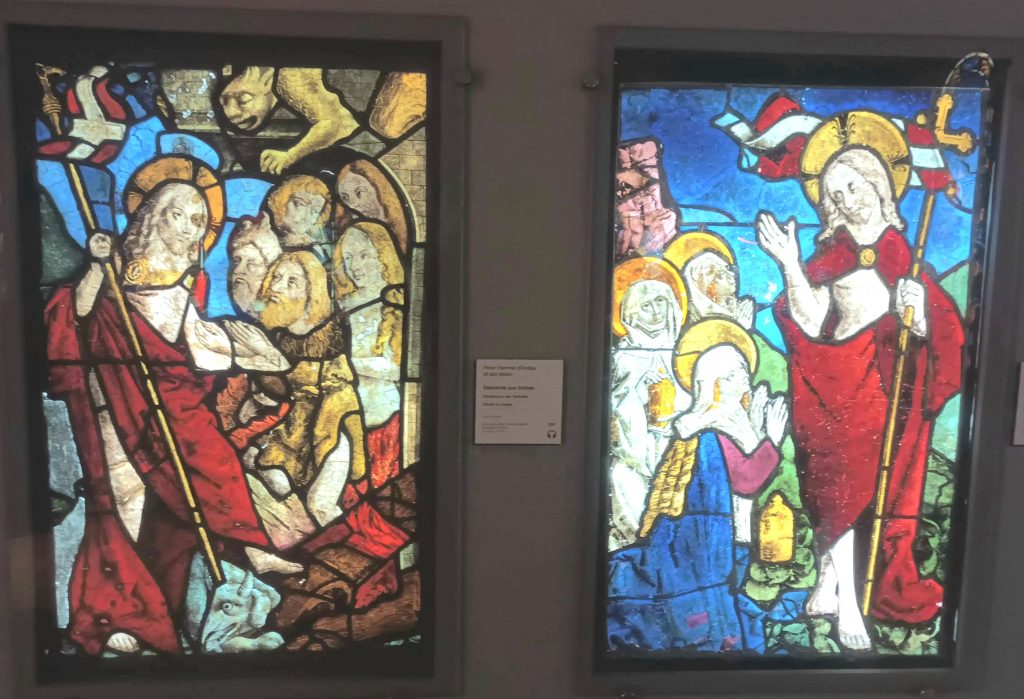
A small stained-glass window, left over from a work by the great Pierre Hemmel d’Andlau (circa 1450), shows Jesus going to Limbo to pick up Moses and Elijah, who fold their hands as a sign of conversion. This well-known legend comes from an apocrypha. In one corner, a devil is discreetly depicted, along with an inferno. This work reminds us that the Sheol of the Jews, confused with limbo, was often interpreted as hell by Christians, especially in the Middle Ages.
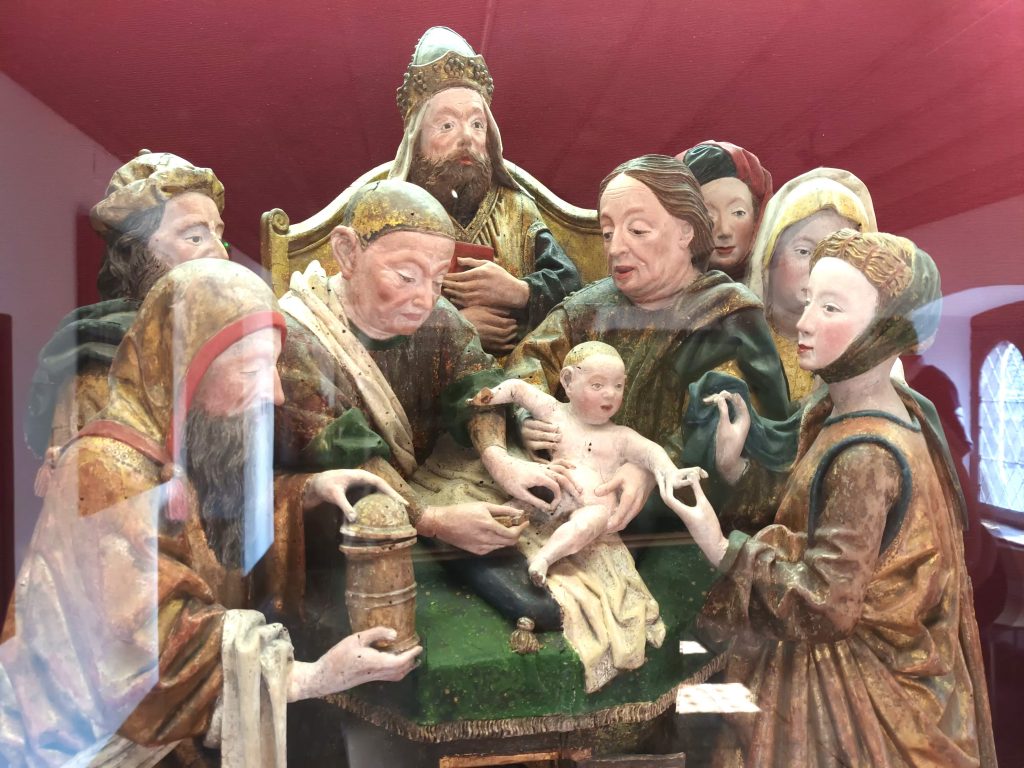
I would like to end with two superb and comforting works. At the OND there is a marvellously sculpted ensemble representing the circumcision of Jesus. Everything is there, including the bottle of talcum powder. The circumciser has put on his glasses. His prayer shawl has become a kind of scarf, held by his two bent elbows: it won’t get in his way. The high priest has celebrated too much, and his face, a little heavy, is also too red.
In the cathedral, in the lower stained-glass windows on the south side, to the west, Jesus is being laid in the tomb by Joseph of Arimathea and Nicodemus, who are very focused. But both are wearing the large conical hat that identifies Jews, which is very rare (a similar representation exists in Fribourg, Switzerland). Jesus was born and died a Jew…

What are the oldest objects attesting to the Jewish presence in Strasbourg and Alsace?
In Strasbourg, of course, there’s the medieval mikveh, which is of impressive size, but also the tombstones on display at the OND and the Historical Museum. Rouffach is also home to France’s only fully preserved medieval synagogue (1290), which cannot be visited at present, and there are several inscriptions attesting to the presence of synagogues in Obernai, Molsheim and Haguenau. However, there are fewer traces of Jewish presence after the 16th century.

Are local authorities involved in sharing Strasbourg’s Jewish cultural heritage?
On the whole, yes. A number of institutions in Strasbourg offer Jewish tours, including the Tourist Office, another of the city’s tourist offices in which I played a part, the Departmental Tourist Development Agency and others. The mikveh has recently been restored, with a much more flexible access system. A memorial garden was created very recently on the site of the consistory synagogue, which was destroyed by the Nazis. This formalisation shows that the local political authorities clearly have the objective of better highlighting the Jewish presence in Strasbourg. This will cover not only the medieval period, but also the entire Jewish history of Alsace and Strasbourg, which has been largely uninterrupted from 1140 to the present day.
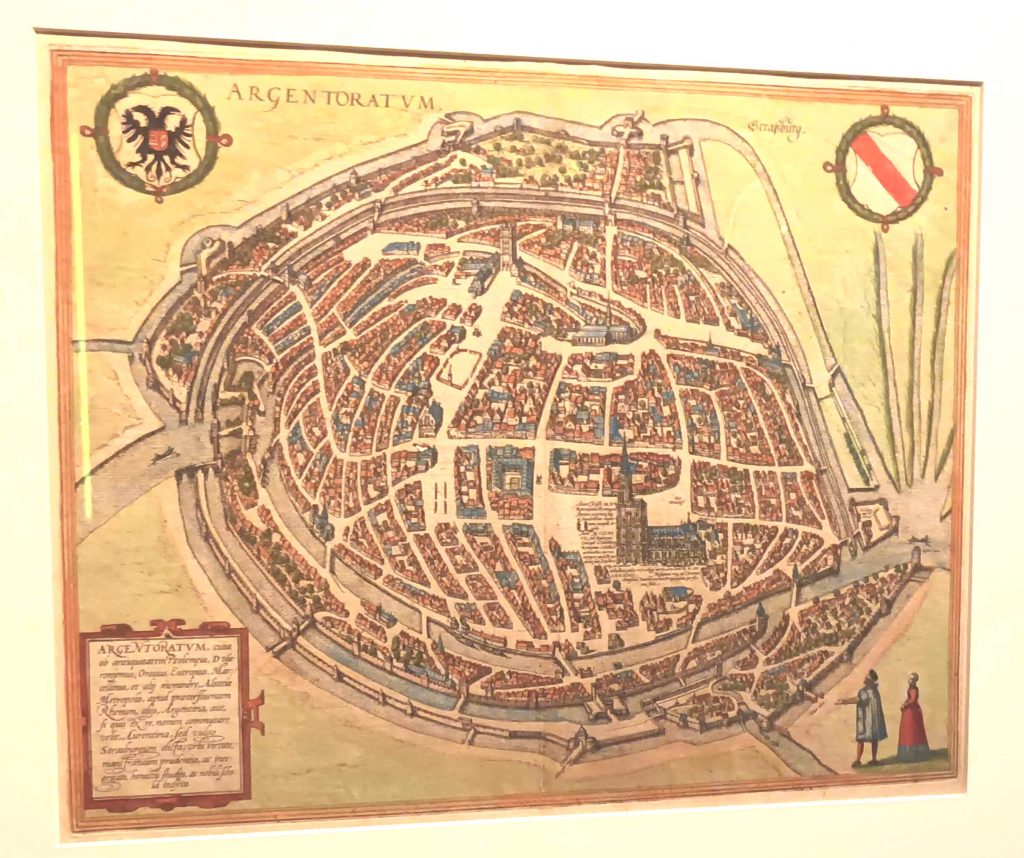
A joint research programme on Jewish heritage has been launched by the Regional Directorate for Cultural Action (DRAC) and the regional inventory service. The national education system, through the intermediary of the rector, is preparing a programme to highlight Judaism, which is necessary in these times, and Alsatian universities are currently attracting more students interested in Jewish history. It should also be noted that it was in Strasbourg in 1996, with the support of the Bas-Rhin department at the time, that the ‘Open Doors to Jewish Heritage’ operation was launched (in 1996, 5,000 participants in 15 locations in the Bas-Rhin), which over time became the ‘European Day of Jewish Culture and Heritage’ (in 2022, almost 150,000 visitors, 29 participating countries, 860 activities in Europe). Last but not least, plans are underway to list Alsace’s collection of synagogues, the most extensive in Europe, as a World Heritage Site…
You can continue your visit in a variety of ways, depending on what you fancy and what this beautiful city has to offer within a few hundred metres. In particular, the Place Gutenberg, named after the famous printer.
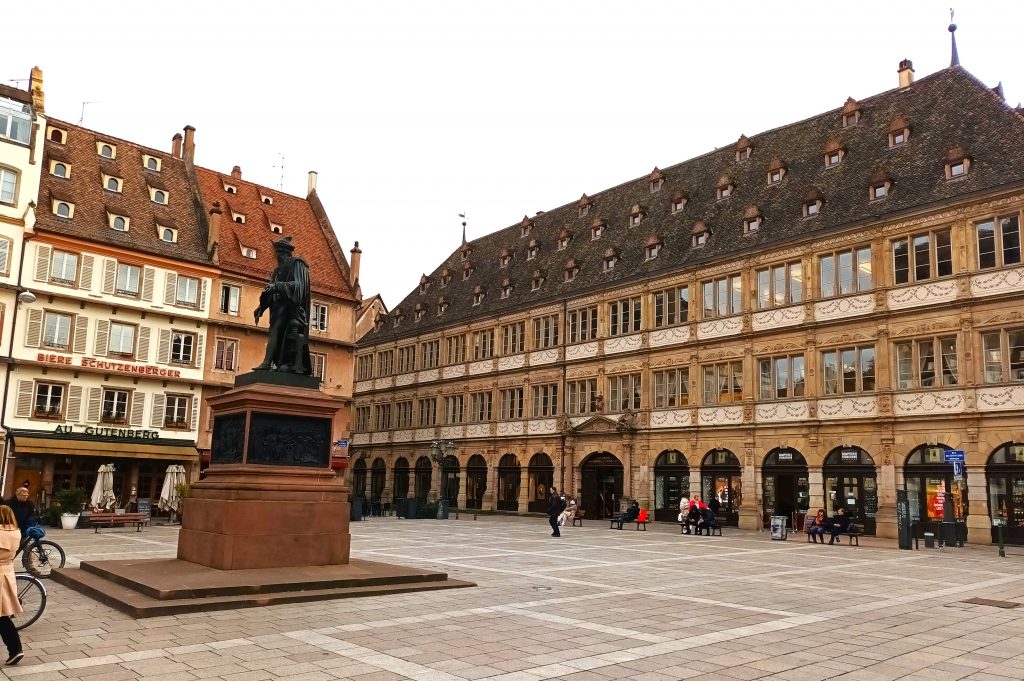
The museums of Fine Arts, Archaeology, the City of Strasbourg or the Palais Rohan. Shops, restaurants and seasonal attractions… or the simple pleasure of relaxing on a terrace on the banks of the River Ill or strolling through the historic district of Petite France
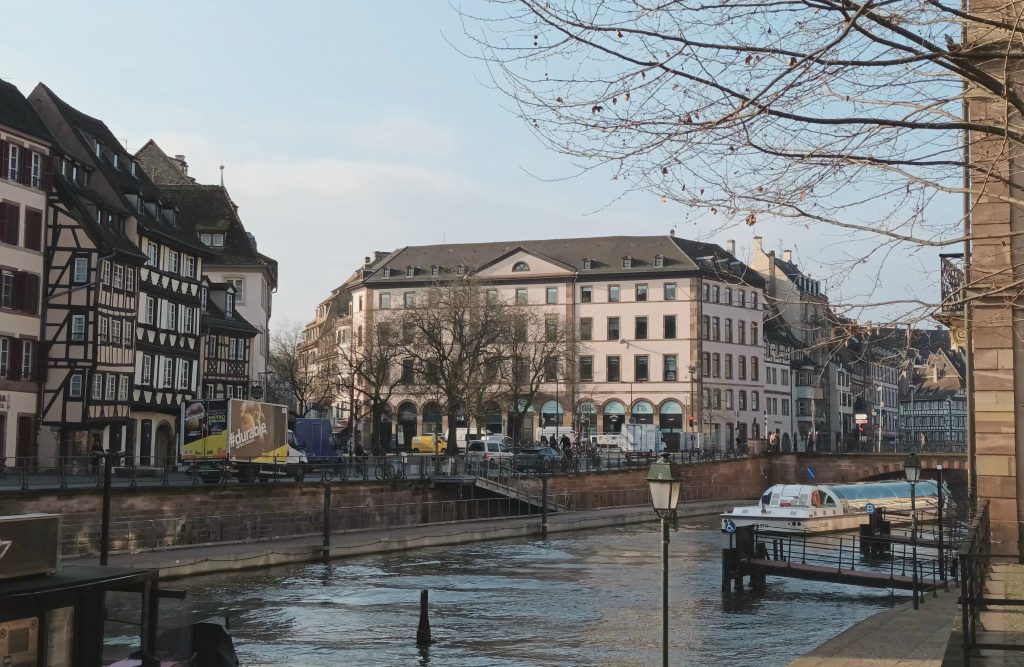
and over the Vauban Bridge, hesitating over which bank to return to and prolong the pleasure of being in Strasbourg.
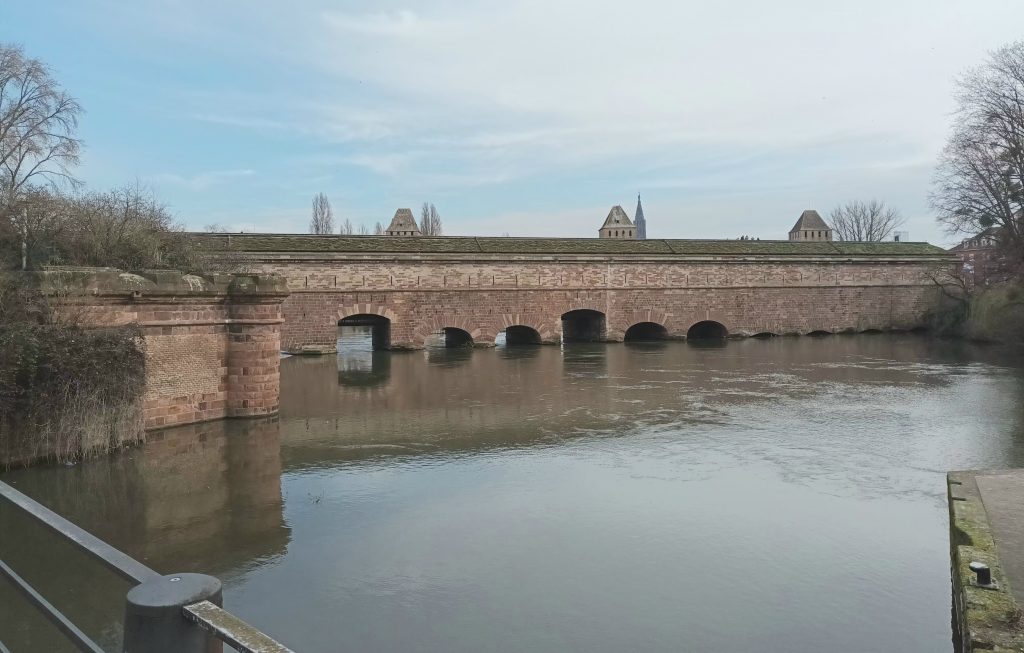
This small town lying in the shadow of an old abbey once had a very active community. You can still see the birthplaces of its two famous Jewish sons: the painter Alphonse Lévy , who was born here in 1843 and died in Algiers in 1918 and whose work bore witness to Alsace’s rural communities; and Albert Kahn , born in 1860, who died in Boulogne-sur-Seine in 1940.

The synagogue , built in 1822 and now unused, can still be seen. Take rue Neuve out of the village. Once in the forest, you will come to a small cemetery built in 1799. Interestingly, though the engravings on the tombstones are in Hebrew, there are also brief annotations in the local language on the back. While these are sometimes in German on the oldest stones, they are all in French beginning from the annexation of Alsace by the Germans in 1870.
The Museum of Alsatian Heritage and Judaism is housed in a fine timbered building dating from 1590 that was home to Jewish families without interruption from 1680 to 1922. Here you can see the mikvah from 1710 and, in the kitchen, a flat oven that may have been used to cook matzhohs for Passover. The collection of Jewish cultural objects gives a idea of the size of the community in those days. Note in particular a remarkable curtain for the Holy Ark (1857) from the synagogue at Quatzenheim.
In 2019, the museum received five original lithographs by the great local painter Alphonse Lévy. In May 2025, it dedicated a space to philanthropist Albert Kahn, a native of Marmoutier.
The Mizmor Chir trio gave a concert in October 2025 in the ancient synagogue of Marmoutier.
The Jewish presence in Bouxwiller seems to date from the 14th century. The princes of Hanau-Lichtenberg adopted Protestantism and were open-minded towards Judaism and its presence during the Reformation, especially in their capital Bouxwiller. They authorized a yeshiva founded by the patron Seligmann Puttlingen and directed by the Chief Rabbi Wolf bar Jacob. Thus, the number of Jewish families living in Bouxwiller was estimated at 36 in 1725. A small gradual increase followed.
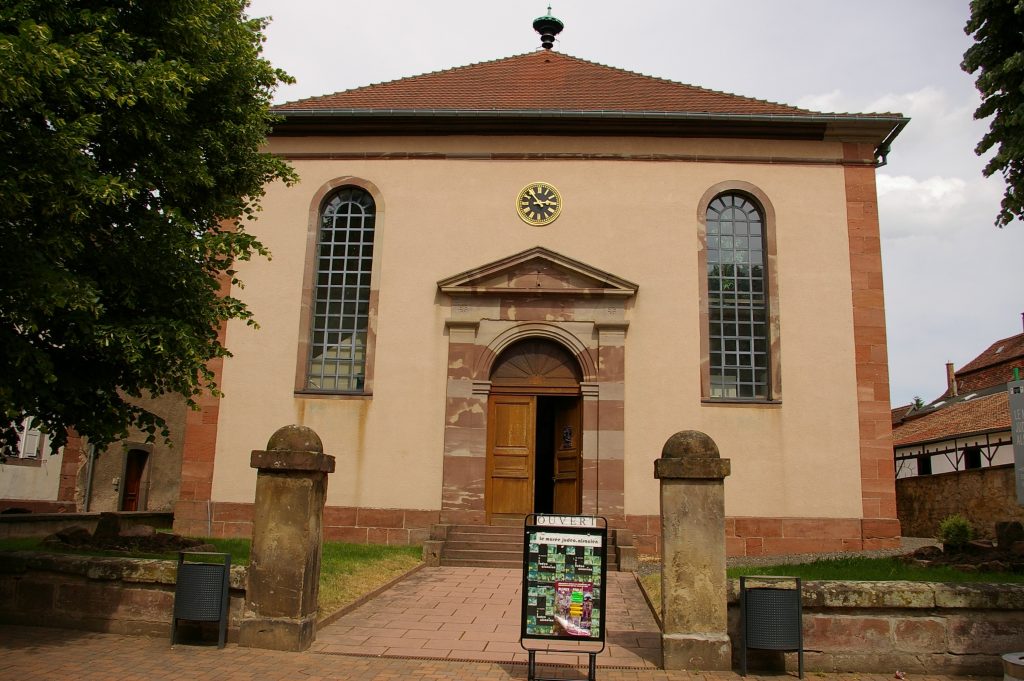
A synagogue was built in the 18th century and replaced in 1842 by a larger synagogue, allowing the 353 Jews living in the town to find an adequate place to pray. Destroyed during the Holocaust, only an oratory was built there after the war and used until 1956 by the community which had lost many members and whose surviving members were aging.
The building has since been transformed into the Judeo-Alsatian Museum set out to present the life and history of Judaism in the countryside. There are no rich collections here, therefore, but a sequence of displays with re-creations and moving, ritual objects reflecting ordinary life and the major moments of Jewish life in Alsace. The building’s empty interior -the Nazis converted it into a factory- allows for a unique architectural experience. It contains a sequence of ramps and platforms that permit visitors to share in the traditions of the Jewish hawkers and wholesale butchers of the countryside. Mannequins with heads in twisted iron and ceramic models also bring to life these lost communities.
The museum hosts cultural events, as was the case in 2021 during the festival of Jewish music with the arrival of the duo Place Klezmer.
In 2023, the museum celebrated its 25th anniversary, with events including a tribute to Gilbert Weil, its founder.
Sources : judaisme.sdv.fr et dna.fr
The Jewish presence in Pfaffenhoffen probably dates from the beginning of the 14th century.
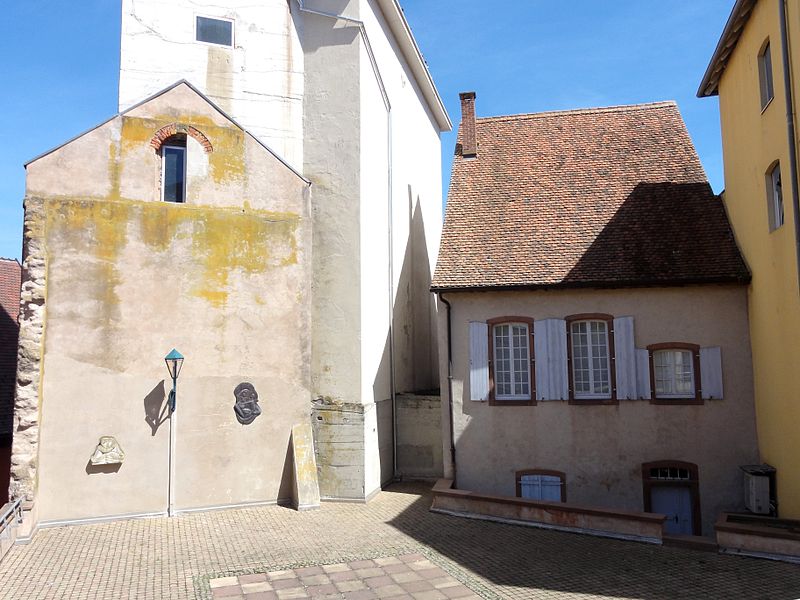
In 1683, the first synagogue in Pfaffenhoffen was built. However, it was destroyed shortly afterwards. This did not prevent the Jewish community from growing from three families at the turn of the 18th century to sixteen on the eve of the French Revolution. Following the three major wars and the rural exodus, it gradually diminished. Thus, there were only 69 Jews left in Pfaffenhoffen in 1936, and half of them after the Shoah.
The small village synagogue from 1791, with its modest façade, is without doubt the most moving historical place in Alsace.

Here, no ostentatious gilding or gleaming marble, but a simple synagogue with white walls and, on the first floor, its kahlstube, its kitchen, and its room for the shnorrer of passage. Near the entrance, you will notice a stone fountain that is even older than the synagogue itself: its Hebrew date is 1744.
On the upper floor, the prayer hall has kept its wooden benches, its beautiful frame of the holy ark, decorated with the lions of Judah and the vines of Alsace. In the bull’s eye, you will pay attention to the blue and white windows which, according to the Talmud, allow to determine the morning time of the prayer when, at daybreak, one manages to distinguish the two colors. This elementary way of marking time disappeared in the 19th century with the appearance of the pocket watch. In 2000, the synagogue was transformed into a museum.
Sources : judaisme.sdv.fr

Traveling rabbis served the small local communities, made up of several or more families (some ten at Evreux and Lisieux, around two hundred at Le Havre). The only sizable community structure, a small synagogue , was built by the Jews themselves after the liberation of France.
A new exhibition dedicated to the Holocaust was inaugurated on 1 April 2025 at the Caen Memorial. It aims to break with traditional museum practices regarding the memory of the Holocaust. It also presents the lives of Jewish communities before the Holocaust.
Sources: Times of Israel
In medieval times, there was an intense intellectual life around the synagogue’s Talmudic school in what was called “Le Clos aux Juifs” (the Jews’ Enclosure). Contrary to what its name suggests, the enclosure in question was never a closed space. There were Jews living elsewhere in the town and Christians living in the Clos. All this disappeared in 1306, when the community was expelled. After that, only very few were able to identify Rouen as the brilliant and lively “Rodom” described in ancient texts.
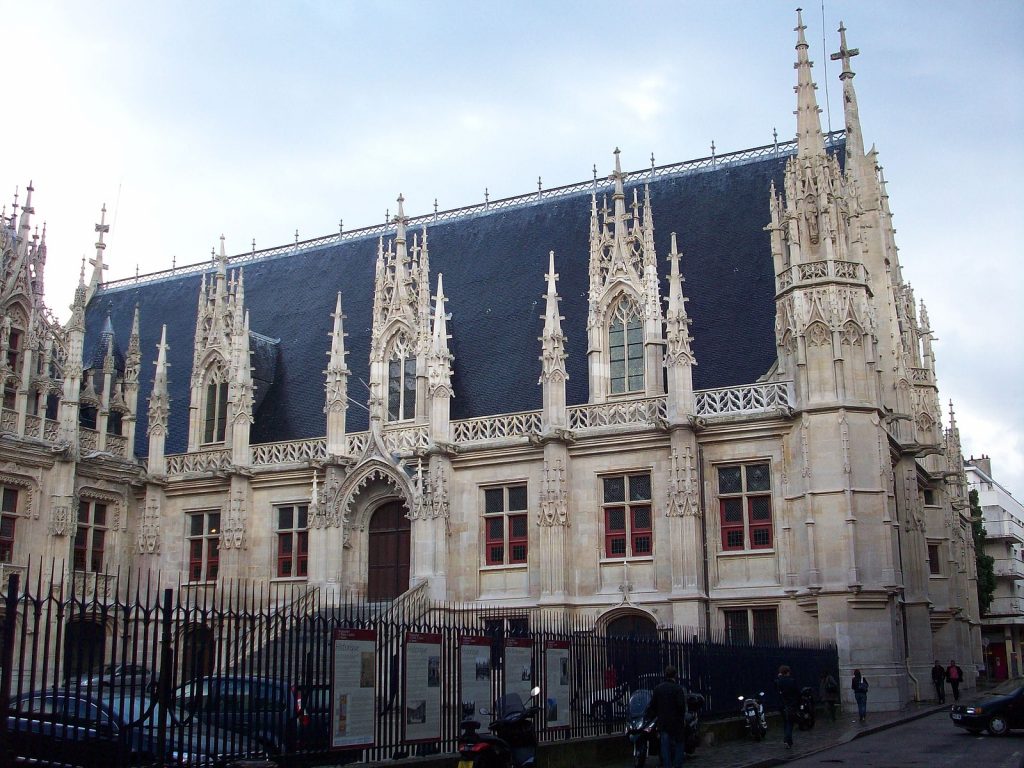
In 1976, repaving work in the courtyard of the Palais de Justice brought to light an extraordinary archaeological find: the walls of an eleventh-century Jewish building, the oldest Jewish monument in Western Europe! Since then, it has been the object of endless debate between specialists. The home of a wealthy merchant, a Talmudic school, a synagogue- what exactly was it? The following fragment from the divine words spoken to Solomon (1 Kings 9:8) were clumsily engraved into the walls three times: “this house, which is high”. No doubt they were hastily inscribed at the moment of the expulsion.
At their base two small columns, a stone dragon and, facing it, a wild beast, placed strangely back to front, with two bodies and only one head (a typical Roman sculpture), are probably an evocation of Psalm 91 (verse 13): “The young lion and the dragon shalt thou trample under feet”. A stone spiral staircase leads to a low room with narrow windows that may have been used to store manuscripts. Following some works, the place can once again be accessed via organized tours of the Maison Sublime.
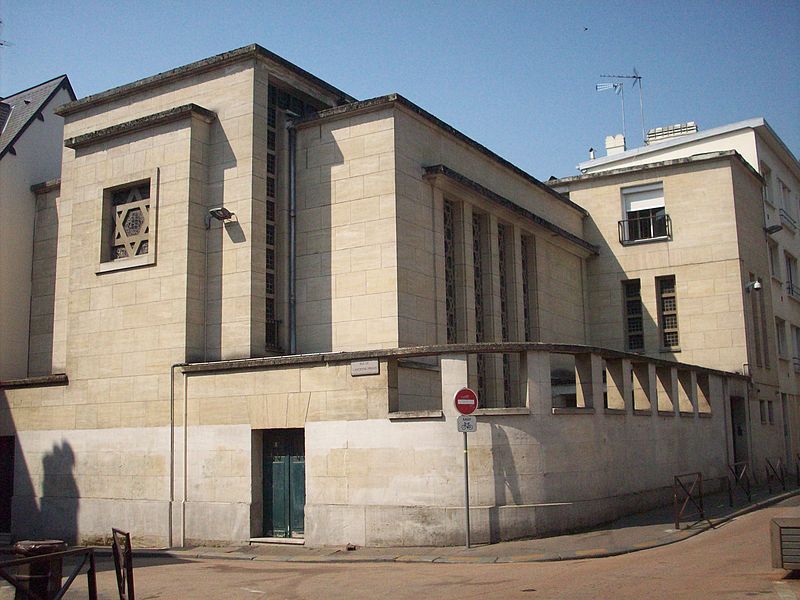
An ancient synagogue has been present in Rouen from at least the 16th century. But it was then destroyed. Todays’ modern synagogue was built in 1950 by the architect François Herr. It consists of a building and a porch, and most importantly, it is decorated by beautiful stained glass.
Anti-Semitic tags were discovered on the synagogue in Rouen and the rabbi’s residence in January 2025. Just a few months after the attack on the synagogue by a terrorist attempting to set it on fire, a policeman saved the place thanks to his swift intervention.

Brussels, the capital of the European institutions, a celebratory place appreciated by tourists, but also a city immortalised by the numerous comic strips born there, remains an amazing city. The cohabitation of a magnificent old town, office towers, and numerous bars where one finds the warm Belgian spirit. But also a worrying radicalism and its drifts, as illustrated by the terrorist attack on the Jewish Museum of Belgium in 2014.
The Jewish presence in Brussels dates back to at least the 13th century. The first written evidence of this presence is represented by a Torah scroll dating from 1310. Following the Black Death and the anti-Semitic accusations of the time, the Jews were singled out and massacred in the middle of the 14th century. Their resettlement was very short-lived, as the Jews suffered another pogrom in 1370, based on false accusations of desecration of hosts. Consequently, they could only return during the Spanish rule of the region. Only a few Marrano families lived there in the meantime.
The Jewish renaissance in Brussels took place under Austrian rule in the early 18th century. Most of the Brussels Jews, about sixty in number, came from the Netherlands. The subsequent French and Dutch conquests did not hinder the resettlement of the Jews, who were allowed to settle freely. A sign of this development was the creation of the Jewish primary school in 1817 by Brussels intellectuals.
Following Belgium’s independence in 1830 and the 1831 Constitution guaranteeing freedom of worship, Brussels became the centre of the country’s Consistories. Eliakim Carmoly was the first Chief Rabbi of Belgium, elected in 1832. The community was then composed of Jews from the Netherlands, Germany, and then from Poland and Russia at the end of the century, following threats and pogroms in these countries.
The consistory system made it possible to establish requests for access to a place of worship, in order to mark the Jewish roots in Brussels at that time. At the beginning of the 19th century, houses, first in rue aux Choux, then in rue de la Blanchisserie, served as transitional places. A project for a synagogue in the rue de Berlaimont, inspired by the one in Frankfurt, came to fruition in 1832 when the Consistory presented it to the minister in charge of these matters. The synagogue was finally inaugurated on the Place de Bavière.
Due to the dilapidated state of the building in Bavaria Square and the rapid increase of the Jewish population in the 1830s, another location was considered. Real estate and geographical differences between the representatives of the Consistory and the local authorities delayed this project.
In 1868 the Consistory launched a competition for the design of a new synagogue. It was won by the architect Désiré De Keyser. After a long study of European synagogues, De Keyser’s proposal for a Romanesque synagogue was approved by the Consistory in 1873. This style of the Grande Synagogue de la Régence was a sign of the good integration of the Brussels Jews. Its location was in the old town.
The Jews, however, mainly lived in the working-class neighbourhoods next to the Midi station, in Anderlecht and Saint-Gilles. However, the good integration allowed them to gradually live in different parts of the city and the centrality of this synagogue seemed logical rather than to install it in a district far from the others.
The Regency Synagogue was inaugurated on 20 September 1878. The synagogue is in the Romanesque-Byzantine style, inspired by the synagogues of Lyon and Stockholm. On the outside, there are two turrets and in the centre of the building, the Tables of the Law. Around the rose window are engraved the names of the twelve tribes of Israel. The temple has a 25 m high nave. Twenty-five stained glass windows can also be admired.
On the eve of the Second World War, 30,000 Brussels Jews lived in the capital. Like other Western communities, this one was crossed by differences of appreciation, even of life between its various components: Westernised for a long time for some and other more recent migrations. The latter were more traditional or, conversely, inspired by the Eastern European revolutions, marked in particular by the development and success to this day of the Hashomer Hatzair youth movement. The main sector of activity was the textile industry.
Many Jews enlisted in the Belgian army during the First World War, whether as soldiers or officers, such as General Louis Bernheim, Captain Ernest Wiener or Captain Robert Goldschmidt. Another strong symbol of this courage is that in 1936, 200 Belgian Jews enlisted in the International Brigades during the Spanish War.
The demographic concentration unfortunately facilitated the work of the Nazis during their roundups. At the intersection of rue Émile Carpentier and rue des Goujons, you will find the National Monument to the Jewish Martyrs of Belgium. The names of 23838 victims are engraved in the stone. The square on which its stands has been renamed Square des Martyrs Juifs (Square of the Jewish Martyrs).
In the aftermath of the war, the Jewish population of Brussels declined, with the number of victims of the Shoah, but also departures to North America and Israel. The city received several thousand Jewish refugees from Eastern Europe. In the early 1960s, following the independence of the Congo, Jews from this former Belgian colony also settled in Belgium, mainly in Brussels.
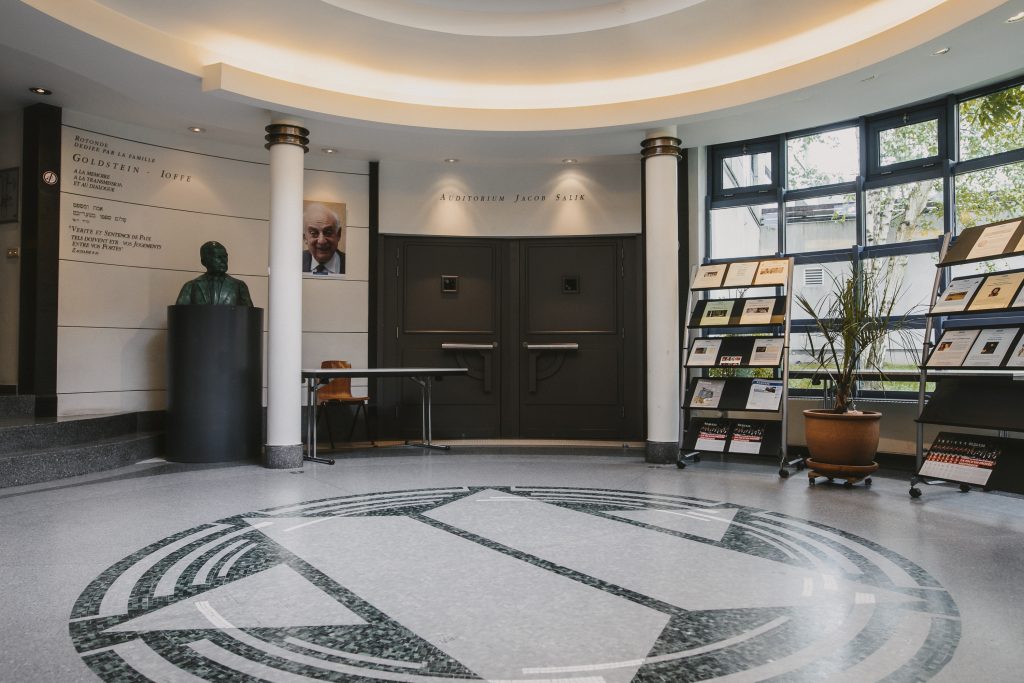
Reflecting the plurality of Jewish movements in Brussels, the David Susskind Secular Community Center (CCLJ) remains one of the major Jewish institutions today. It was founded in 1959 by survivors of the Shoah who wanted to transmit a Jewish identity that was distinct from religious structures. Numerous cultural events are organised there, in a spirit of openness and sharing. But also educational programmes to fight against racism and the resurgence of anti-Semitism. In particular, by raising public awareness of the other genocides of the last century, in Armenia and Rwanda. The CCLJ is known for its magazine “Regards”, founded in 1965 by Victor Cygelman, Albert Szyper, Jojo Lewkowicz and above all David Susskind, a great figure of the Belgian left and a militant of the Israeli-Arab rapprochement.
The House of Jewish Culture also organises a wide range of events, providing a convivial space for conversation, creation, renewal and the transmission of Jewish cultural memory. These include conferences, studies, exhibitions, concerts and workshops. There are also Yiddish and Judeo-Spanish language courses. Not forgetting its famous Jewish music festival every year. You can also sign up for their themed tours of Brussels districts.
As a sign of the diversity of the Brussels Jewish community, new synagogues were inaugurated after the war in different districts. Among these were the synagogues in the popular district of Schaerbeek. Many Jews lived there since the interwar period, praying in small oratories. The Sephardic synagogue Simon and Lina Haim was inaugurated in 1970, at 47 rue des Pavillons, welcoming people from North Africa and the former Rhodes communities. An Orthodox synagogue was inaugurated in 1979, located at 126-128 rue Rogier. Unfortunately, both synagogues were put up for sale in 2016.
English-speaking Jews, most of them working in the city’s European institutions, form a fifth of Belgium’s Jewish community. They attend Shabbat services with Liberal French-speaking Jews. The Beth Hillel Synagogue is strongly attended during Jewish festivals. The good integration of the Jews in Brussels, but also the antisemitic attacks, motivated people to move to safer neighbourhoods, such as in the south of the city in Uccle, favouring security over square metres. Thus, the The Sephardic Synagogue Etz-Hayim , which is small but very congenial, was founded in 1992. The Dieweg cemetery is located in Uccle and is home to a Jewish cemetery.

Directed by Barbara Cuglietta, the Jewish Museum of Belgium has a large collection of ancient and modern documents illustrating Jewish life. The Jewish Museum of Belgium was opened in 1990 on Avenue de Stalingrad. A first unsuccessful attempt in this direction was made in 1932 by Daniel Van Damme, curator of the Erasmus Museum in Anderlecht. In 1938, the Queen’s Gallery presented the first exhibition dedicated to the Jews of Belgium, organised by Dode Trocki.
The project was relaunched in 1979, when a proposal was made to Jean Bloch, President of the Consistory, to organise an exhibition on the art and history of Belgian Judaism, within the framework of the 150 years of the country’s independence. Steps were therefore taken to make this project permanent and to find a place that would present this history to the general public. Temporary premises were found at 74 avenue de Stalingrad, where the first exhibition was inaugurated on 25 October 1990.

In 2005, the museum moved to rue des Minimes, in a place more favourable to the reception of the public. A number of objects were acquired through sponsorship, notably from the Jacob Salik Fund. The museum has various archives and a library, having integrated the collections of the Kahlenberg, Misrahi, Souweine, Lévy, Cuckier, Schneebalg-Perelman, Galler-Kozlowitz, Broder, Jospa, Albert, Schnek, Bernheim and Lounsky-Katz families. Philippe Blondin has been the president of the Jewish Museum of Belgium since 2007.
Work is due to be carried out soon to enlarge the spaces and modernise the presentation, particularly through digital tools. The museum is scheduled to reopen in 2028. Nevertheless, in the meantime, here is what the visit to the museum, which we visited again in 2023, was like.

At the beginning of the permanent exhibition dedicated to the history of the Jews in Belgium, we see historical photos, of royal visits but also of important donors such as Baron Lambert who financed the opening of a maternity hospital in 1932. This great family created the Banque Bruxelles Lambert and helped many charitable, social and cultural works, from its founders at the beginning of the 19th century to its descendants Philippe and Marion Lambert.
The first rooms allow the public to familiarise themselves with Jewish customs thanks to these old photographs. But also artistic works such as the hundreds of wine glasses hanging from the ceiling like chandeliers, witnessing all these moments of celebration. The museum shows the story of the Kilimnik family, Jews from Podolia who settled in Molenbeek in 1921.

Located in Brussels, the museum honours Jewish life in the capital, the large community of Antwerp, but also in other cities, telling the story of the communities of Liège, Ghent, Namur, Ostend and Arlon, with photos. Stories illustrated for example with an old postcard of the synagogue of Arlon or its beautiful parokhet, offered by the ladies of the community in 1874. Beautiful photos of old synagogues in the country are presented, as well as a model of the Portuguese synagogue in Antwerp.
The Jewish holidays are explained and illustrated on the walls of the museum, with many objects. Not forgetting the magnificent Megilat Esther by the artist Gérard Garouste and the Purim mosaic by Eddy Zucker. Holidays based on historical resistance and sometimes celebrated in a spirit of resistance, such as this menorah made by Alexandre Gourary in the Dossin barracks detention camp.
On the way up the stairs there is a moving photograph of Orthodox Jews in a park in Antwerp, walking their children on sledges. The stairs lead to the first floor, where the bust of Baroness Clara de Hirsch, a great Belgian philanthropist, stands at the entrance to two rooms.
The first room presents the period of the Shoah in Belgium. The history of the persecution of the Jews is described above two suitcases of deportees. Photos, yellow stars and administrative documents are displayed. Then there is a wall with 227 photos of the 236 deportees who escaped from a train, the 20th convoy, which left Mechelen for Auschwitz in April 1943. A documentary by Sarah Timperman and Stéphanie Perrin is shown at the back of the room and tells the story of the heroic rescue of the 20th convoy, with the help of testimonies by Félix Lipszyc, Abraham de Groot, Simon Gronowski and Robert Maistriau.
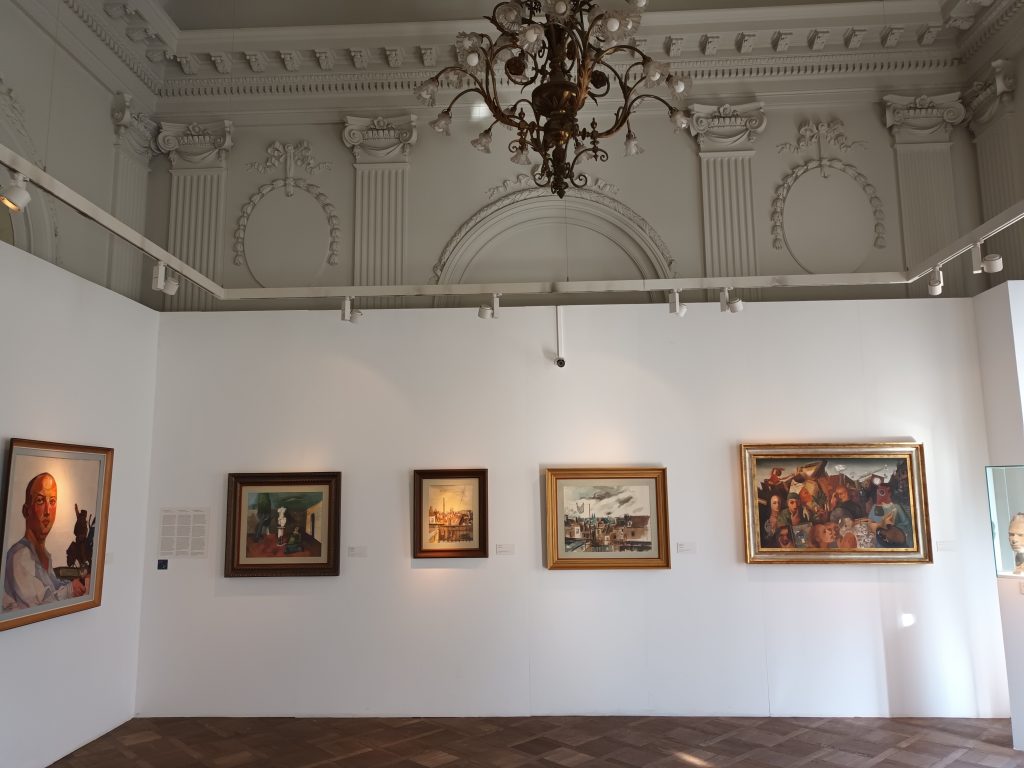
The second room houses works by contemporary Jewish artists such as Arié Mandelbaum, Sarah Kaliski, Kurt Lewy, Felix Nussbaum, Arno Stern and Kurt Peiser. Temporary exhibitions are also presented, such as the one recently dedicated to Moroccan women on the floor above, or at the entrance of the museum with photos by Jo Struyven and Luc Tuymans of the places where the deportees of the 20th convoy escaped.
In the courtyard of the museum, there is a plaque in homage to the victims of the terrorist attack of 24 May 2014, in which four people were murdered: Alexandre Strens (an employee of the museum). Dominique Sabrier (a volunteer at the museum) Emmanuel and Myriam Riva (an israeli couple on vacation). In may 2024, a ceremony commemorated the 10 years since the attack.
In Brussels, as in many European cities, the exploitation of the 7 October pogrom by various forms of anti-Semitism has manifested itself in insults, threats and attacks. Extreme hostility towards Jews and any condemnation of new forms of anti-Semitism is particularly noticeable in certain universities…

If all roads lead to Rome, one of the most beautiful roads in Brussels leads to Paris. Near the allée Chantal Akerman, in the 20th arrondissement of Paris, one of the greatest filmmakers of all time lived from the age of 18. “My daughter from Ménilmontant”, as she is nicknamed by her mother Natalia in the book “A Family in Brussels”, is a dialogue of memories, stories and silences. Brussels and Paris devoted a major exhibition to her in 2024-5, and her films are still regularly shown in cinemas around the world.
Like Albert Cohen, she is the author of masterpieces in many different genres. The only difference, perhaps, is that she didn’t need to make “The Film of My Mother” when it was too late, since Natalia Akerman has been in the limelight right from the start of her daughter’s work.
An Auschwitz survivor, Natalia doesn’t talk about it, torn between the imminent need to hold on and rebuild and the Jewish resilience that consists of promising a better dawn for the next generation. All the while, she passes on her strength and dignity to her daughters Chantal and Sylviane.
From her father Jacob, they inherit humour, hard work and a willingness to dance through life and out of trouble. Jacob Akerman is a shopkeeper, owning a clothing factory in the Triangle district and a shop in the Toison d’Or gallery.
As for Brussels, it shares with the two young women born in the aftermath of the war, its bon vivant Belgian spirit, with its cartoon characters, glasses and stories all rounded off to facilitate boats overflowing with pleasure, inspiring in its own way so many stories with cheerfully spilled beers.
Chantal’s Polish maternal great-grandfather was on his way to the United States, trying to reach the port of Antwerp to embark. But like so many Jews, he realised just how happy life could be for a Jew in Belgium.

Chantal Akerman was born in Brussels in 1950. At the age of 15, she went to see Jean-Luc Godard’s “Pierrot le fou” at the cinema with her friend and future producer Marilyn Watelet, amused by the film’s title. It was a revelation and the birth of her ambition.
At the age of 18, she directed the short film “Saute ma ville”, earning the support of André Delvaux and Eric de Kuyper. The story of a teenager who locks herself in the kitchen and acts in increasingly incoherent ways, throwing everything away and shining her shoes and then her legs next to a Manischewitz box.
Chantal moved to Paris after the shoot, hoping to find inspiration there, which never left her in Paris, New York, Brussels, Tel Aviv, Germany, Eastern Europe and even on the Mexican-American border.
At the age of 23, she directed “Je, tu, il, elle” (I, you, he, she) with Niels Arestrup and Claire Wauthion, a tale of anxiety, wandering and the reunion of operatic bodies. Two years later, Chantal entered the big leagues once and for all with “Jeanne Dilman, 23 quai du Commerce, 1080 Bruxelles”. Delphine Seyrig leads an ultra-ordered life, covering up her silences and wounds, bringing up her son alone. A life without pleasure, until something unexpected happens. In 2022, this address and more precisely this work was voted best film of all time in the ten-yearly rankings drawn up by “Sight and Sound”, the magazine of the British Film Institute.
In “Pierrot le fou”, Jean-Paul Belmondo asks Samuel Fuller to define cinema. The director replies that it was an emotional battlefield. Perhaps this is why Chantal Akerman is one of the greatest filmmakers of all time. Her camera presents love and humour, songs and silences, deep thoughts and nagging worries through a gaze that is both mischievous and gentle. Ahead of her time, ahead of our time too, between the reconstruction of a generation and their children’s quest for pleasure and self-assertion, who fear the return of the dark ages. Sylviane Akerman, Chantal’s sister, now preserves her memory, notably through a foundation.
In 2023, a fresco in the likeness of Jeanne Dielman, the main character in the film ‘Jeanne Dielman, 23, quai du commerce, 1080 Bruxelles’ was unveiled in Brussels as a tribute Chantal Akerman. The fresco was created by the artist Alba Fabre Sacristán and appears on the façade of a house on the corner of quai aux Barques and rue Saint-André, close to quai du Commerce.
Sources : Encyclopaedia Judaica, Politique et Religion : le Consistoire Central de Belgique au XIXe siècle, Les Juifs de Belgique : de l’immigration au génocide (1925-1945) MuseOn, RTBF
Despite the devastations of the Second World War and the aesthetic shortcomings of post-war reconstruction, Amsterdam offers the visitor a Jewish patrimony of extraordinary richness that is concentrated, for the most part, in its memorials.
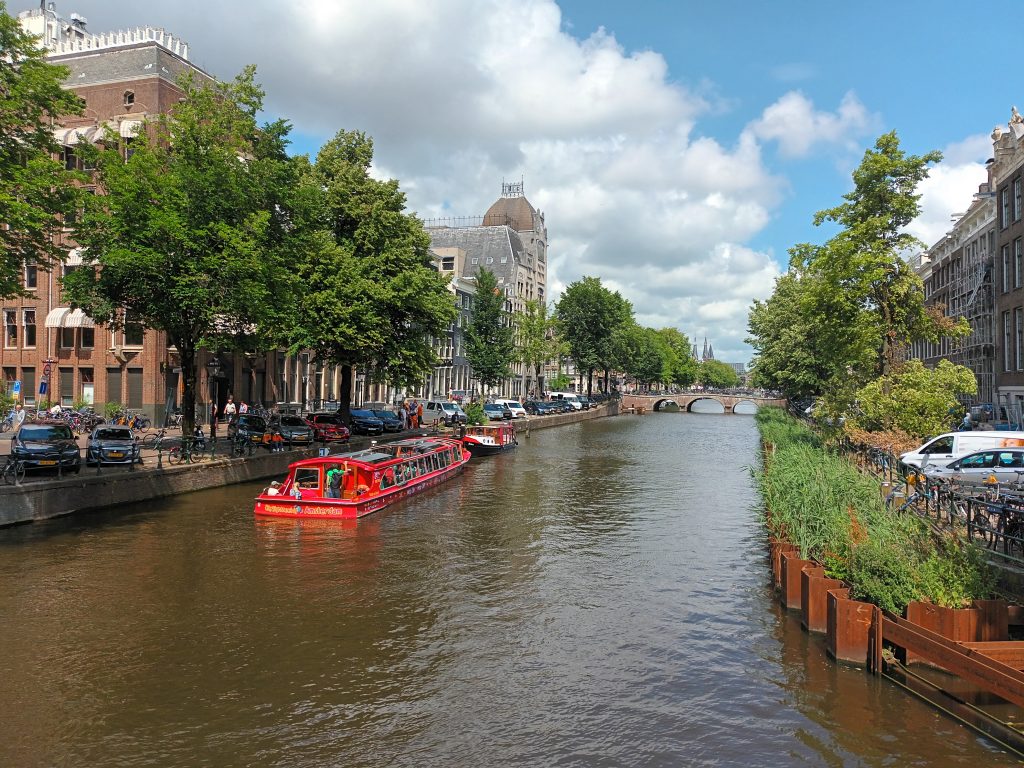
The former Jewish quarter, the Jodenbuurt, is yours to discover along the streets and canals in the southeast of the city. It is easy to imagine the period when the area was home to a population that had grown from several hundred inhabitants at the end of the sixteenth century to some 100 000 in 1940. Among the attractions are exceptional museums, synagogues, and period homes of famous residents (Rembrandt, de Pinto) preserved in their original state. Diamond-cutting workshops, guild houses, and religious monuments are also among the numerous traces of 350 years of Jewish presence.
If Amsterdam has brought a lot to the Jews, the reverse also holds true. The city has absorbed many typically Jewish characteristics into its language, cuisine, and sense of humor. Hence, mazel (good luck) and meshuga (crazy) can still be heard in the local dialect; likewise, the Netherlands adopted pickled herrings and onions, sausages and fromage blanc.
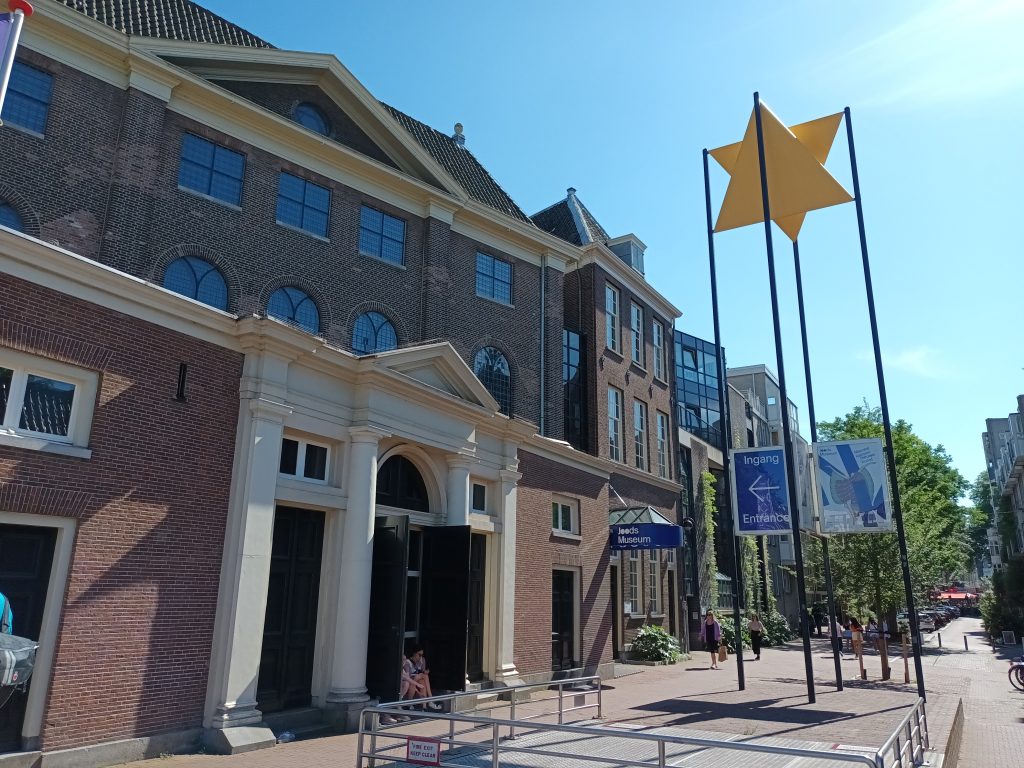
The Jewish Historical Museum alone requires nearly a half day. Since 1987, the museum has been the heart of a cultural complex made up of four synagogues active until 1943 and subsequently sold to the municipality in 1955. The museum depicts Jewish customs, the fundamentals of the Jewish religion and Zionism, as well as the way of life of Dutch Sephardim and Ashkenazim in past centuries. In 1943 the collection of the synagogue complex was taken to Offenbach in Germany. Less than 20% of the stolen goods were recovered by the Dutch government after the war. With the aid of glass and metal installations, the displays of these four synagogues recall the massacre of the majority of Amsterdam’s Jewish inhabitants, a tragedy not only for the Jews but for the city as well.
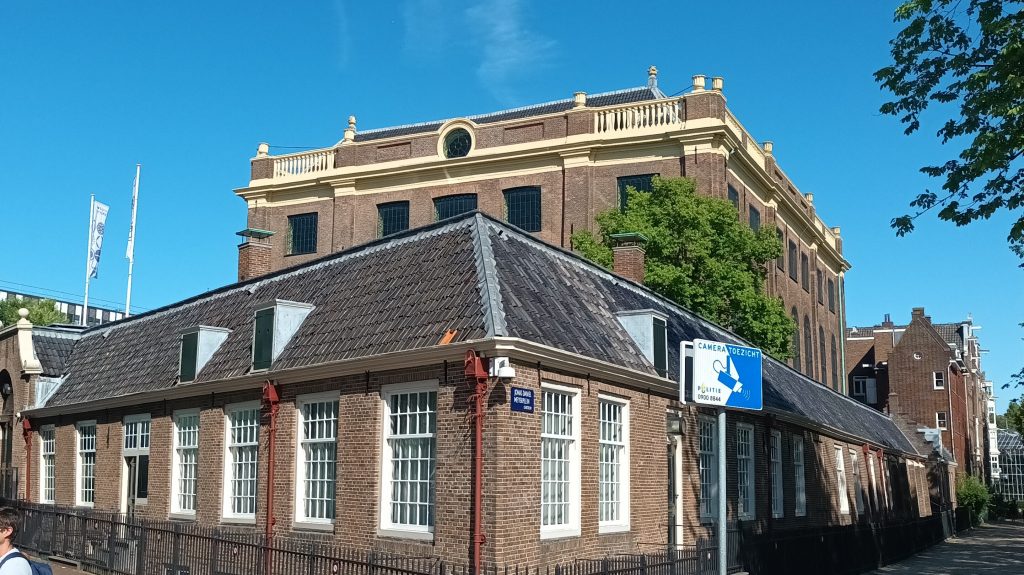
The Grand Synagogue was consecrated in March 1671 by the Ashkenazic community, which had renounced the claims of the false Messiah Sabbataï Zevi. Today display cases containing silver ritual objects occupy the former location of the bimah. The ark of the Covenant, made completely of marble, has been restored, as have the galleries reserved for men and women and the mikvah. Space demands led to the construction of the three other synagogues nearby: Obbene Sjoel (1685), Dritt Sjoel (1700), and the New Synagogue (1752). In addition to religious objects and works of art, the museum also displays documents retracing the history of the two Jewish communities and the people who influenced them. One such figure gives the square its name: Jonas Daniel Meijer (1780-1834), a lawyer and highly-ranking civil servant who attempted to improve the welfare of underprivileged Jews in Amsterdam.
After your visit to the museum, explore the ancient Jewish quarter as you read what follows, much of which has been mentioned in connection with the museum. Note that the Museum organizes guided tour of Jewish Amsterdam.
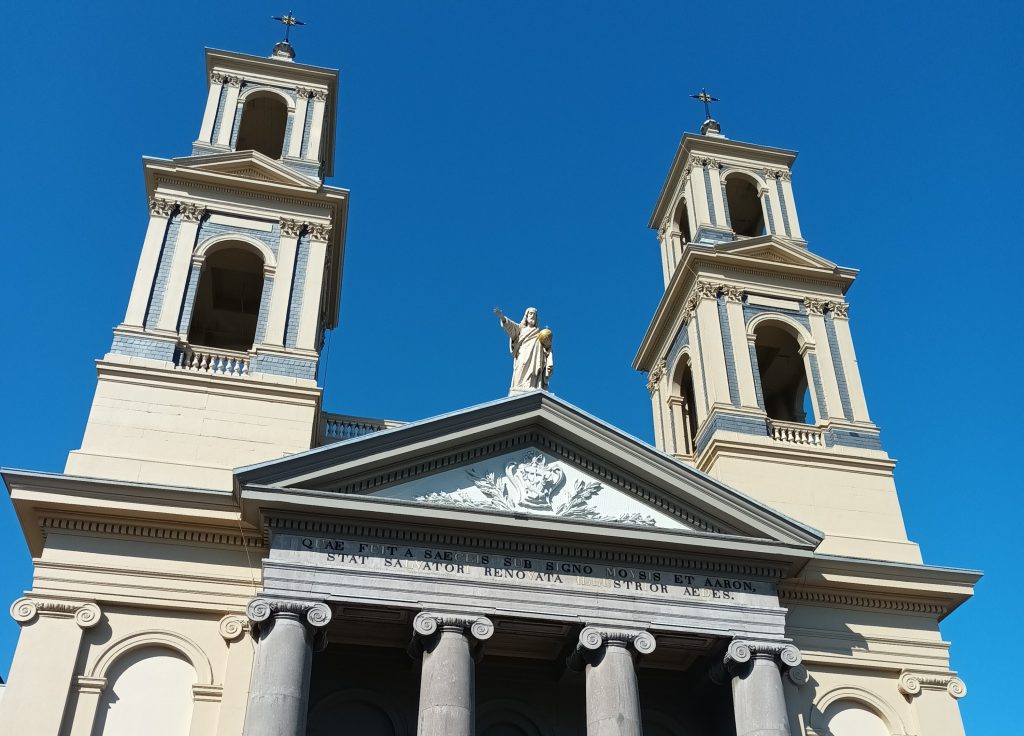
President of the High Court in 1939, Liuis Ernest Visser actively defended the Jews during the Nazi occupation. After you cross the square that bears his name, Mr. Visserplein , you come upon the Moses and Aaron Catholic Church . The tiny statues that once decorated the facade and gave the church its name are presently found on the back wall. On your left, enter Jodenbreestraat . From the eighteenth century to the Second World War, this street was the principal artery in the Jewish quarter. In 1965, the northern part was destroyed and the street rerouted.

At numbers 4-6 Jodenbreestraat stands the house where the famous painter Rembrandt lived and worked from 1639 until 1658. Although not a Jew, he lived in the Jewish quarter. He occupied the first floor of the house with his first wife, Saskia van Uylenburgh, who died young, and then with Hendrickje Stoffels, his second wife. Rembrandt created the majority of his paintings in the second floor workshop and gave lessons in the attic. Restored between 1907 and 1911 and decorated with furniture and housewares from the seventeenth century, Rembrandt’s house displays numerous drawings and nearly the entire oeuvre of the artist’s etchings (250 of the 300 that he executed). Among these works are self-portraits, nude studies, beggars, and scenes of domestic life.
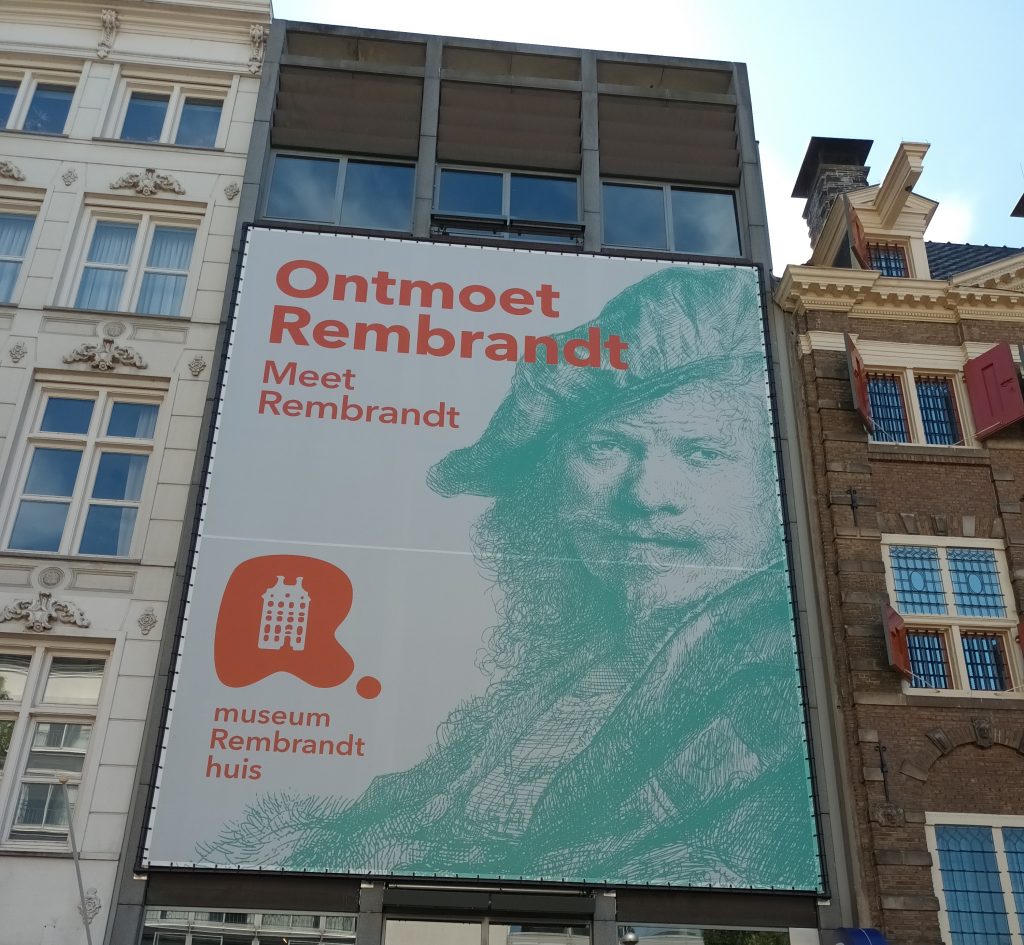
The influence of Rembrandt’s Jewish environment is visible in his work. Several wealthy Jews commissioned their portraits from the artist, including Menasseh ben Israel, whose likeness is on display in the museum. The rabbi and author lived for many years across the street from Rembrandt and even commissioned him to illustrate several of his books. Likewise, Rembrandt often asked his neighbours to pose for his biblical scenes. Among this group of images on display are engravings such as The Sacrifice of Abraham (1635), Jacob and Benjamin (1637), The Triumph of Mordecai (1641), Abraham and Isaac (1645), and David and Goliath (1655).
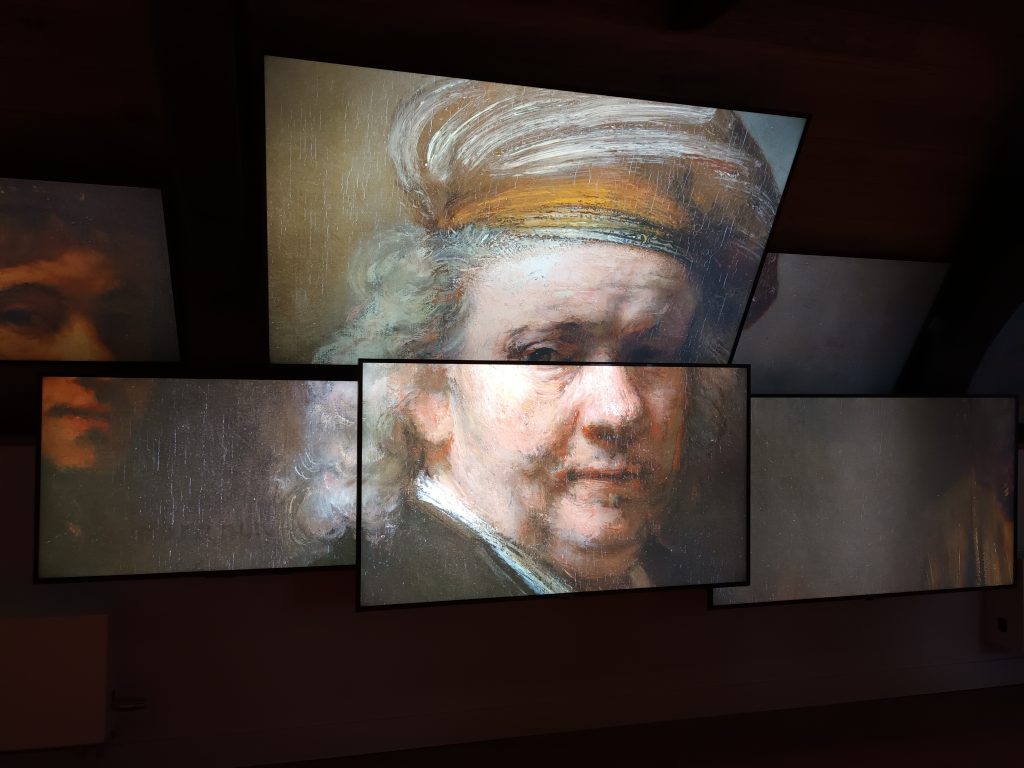
The Rijksmuseum (located in another area of the city) displays many of Rembrandt’s paintings. Besides the famous Nightwatch, a number of significant works from the artist’s Jewish period are to be found here, including The Jewish Bride and The Lamentations of Jeremiah. One also finds at the Rijksmuseum The Portuguese Synagogue by Emmanuel de Witte and The Jewish Wedding by Kosf Israels.
Upon leaving the Rembrandt Museum, cross the Saint Antoniebrug, a small bridge accessing Saint Antoniebreestraat and offering a nice view of Ansterdam. You will notice further down the street the ornately carved wooden belfry of Montelbaan Tower. It is said this is where the first Jews coming from Spain and Portugal disembarked.
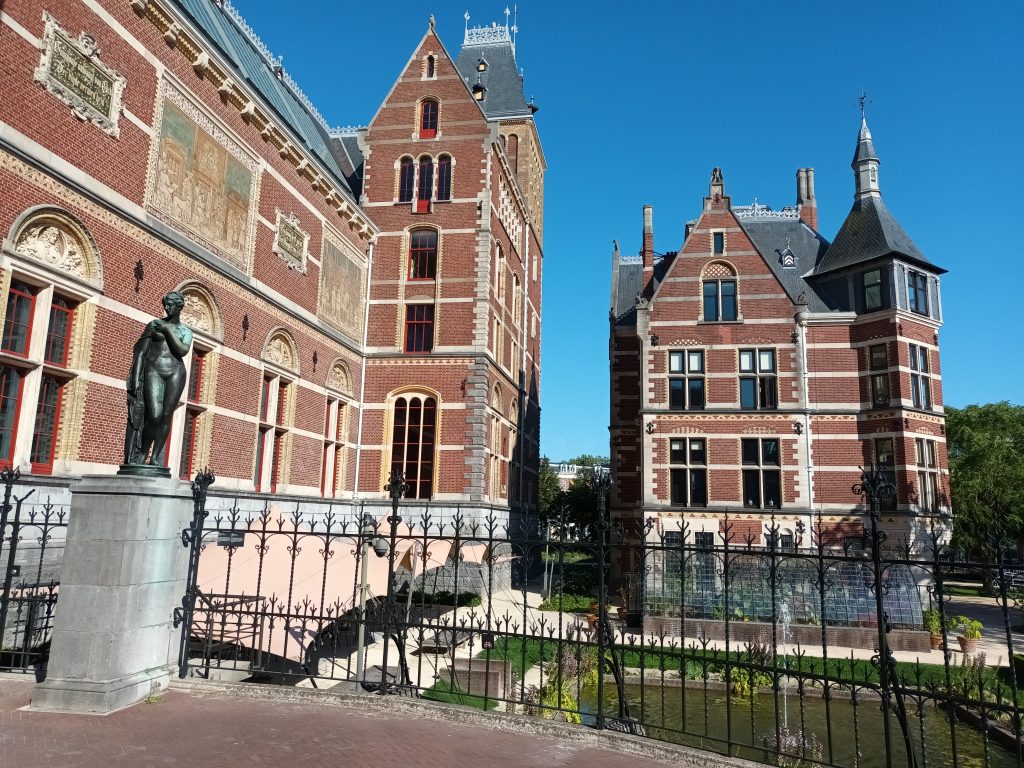
The house of the wealthy Portuguese Jew Isaac de Pinto , at 69 Antoniebreestraat, was purchased in 1651 for the considerable sum of 30000 florins. De Pinto had the house remodelled in 1680 following the plans of Elias Bourseman. The cream coloured Italian Renaissance-style facade is undeniably one of the loveliest in the neighbourhood. With six imposing pilasters crowned by a blind balustrade concealing the roof, the facade gave rise to the expression “as rich as de Pinto”. Partly destroyed during the Nazi occupation, the majority of the home’s occupants perished in the Shoah. The building was saved from demolition thanks to a preservation campaign that led to its restoration in 1975 and that, in the end, facilitated the revival of the entire district. Still located in a residential neighbourhood, the building now houses a public library. Be sure to go inside to see the birds and cupids that adorn the original paintings on the ceiling.
Returning across the Saint Antoniebrug and turning right just before the Rembrandt Museum will bring you to the Waterlooplein , where a flee market used to take place every day except Saturday (now it is closed on Sunday). This location has served as the marketplace for the Jewish quarter since 1886. The filling of two canals created this large square in the heart of the Jodenbuurt, which occupies the site of an ancient artificial island between the current city hall and the opera house. Because originally Jews did not have the right to own retail businesses, they bought and sol goods in the streets. Much less picturesque today than in the past, the market now attracts primarily people selling used clothes, African batiks, and Indonesian jewelry.
Continuing straight ahead, with the canal on your right-hand side, you will come to a black marble memorial erected in 1988 that commemorates the Jewish resistance during the Second World War.
Turn to your left and follow the Amstel River for 656 ft. Just before the Blauwburg bridge, a glance to the left reveals the outline of a house in front of the Muziektheater. Before World War II, this house was an ashkenazic orphanage for boys established by Megadlei Yetomim in 1738. In March of 1943 the children living in the orphanage were deported to the Sobibor concentration camp.
Cross the street at this point and continue along the river to your right. Turn to the left just before the wooden bridge (Walter Süsskindbrug) to reach Nieuwe Herengracht Street. During the war Walter Süsskind made use of his position as a member of the Jewish Council and saved many Jewish children from deportation. A plaque on the other side of the bridge commemorates Süsskind’s courage.
Walk to the end of Nieuwe Herengracht, inhabited since the nineteenth century by wealthy Jews. Turn to the right and cross the Vaz Diasbrug bridge, which commemorates a Jewish journalist of Portuguese origin. You should now be on Weesperstraat. Some 150 ft ahead there is a small square with a monument to the memory of “those who protected Dutch Jews during the years of occupation”. The memorial, created by the sculptor J. Wertheim, was erected in 1947.
Turning right at the following bridge brings you to Nieuwe Keizersgracht. During the war the Jews named the waterway “the new martyrs’ canal”, since at the time 58 Nieuwe Keizersgracht housed the Jewish Council. As in other occupied countries, highly placed Jews who accepted a role in this organisation imposed by the Nazis believed that their participation would slow the process of the realisation of the Final Solution. Unfortunately, this was rarely the case.
Return to Weesperstraat, turn right, follow this street to Nieuwe Kerkstraat, and turn left. At one time inhabited by Portuguese Jews, Nieuwe Kerkstraat was also known as “Jewish Churchstreet”. Number 127 Nieuwe Kerkstraat, now occupied by a wine and soft drink company, was once the morgue (Metaarhuis) attached to the hospital on Nieuwe Keizersgracht.Bodies were washed and prepared there following Jewish rituals. It was said at the time, “One enters by the Keizersgracht and leaves by the Kerkstraat”. A little further down the street, at number 149, is a synagogue founded by Russian Jews, the Russian shul. On the facade of the building you can make out a round , stained-glass window with a Star of David. Just beside this building is the Sailors’ Synagogue, no doubt so named because of the considerable number of Dutch Jews who had work at sea during the economic recession at the end of the eighteenth century.
Cross the bridge at the end of the Nieuwe Kerkstraat (on the left), which will bring you to the Lau Marzirelburg bridge, named after a lawyer who opposed the registration of Jews during the war and participated in an attack on the offices where the records containing the names of Jews were held.
You now enter the Plantage quarter, which was a detention area outside the city limits. Cafés, tearooms, and theatres proliferated in this area that was home to numerous wealthy Jews. In 1924, nearly half of the inhabitants of the quarter were Jewish.
Walk down Plantage Kerklaan until you come to the traffic light and turn left into the Plantage Middenlaan. Immediately to your left is the former Dutch Theatre, one of the most important memorials consecrated to the victims of the Second World War in Holland.
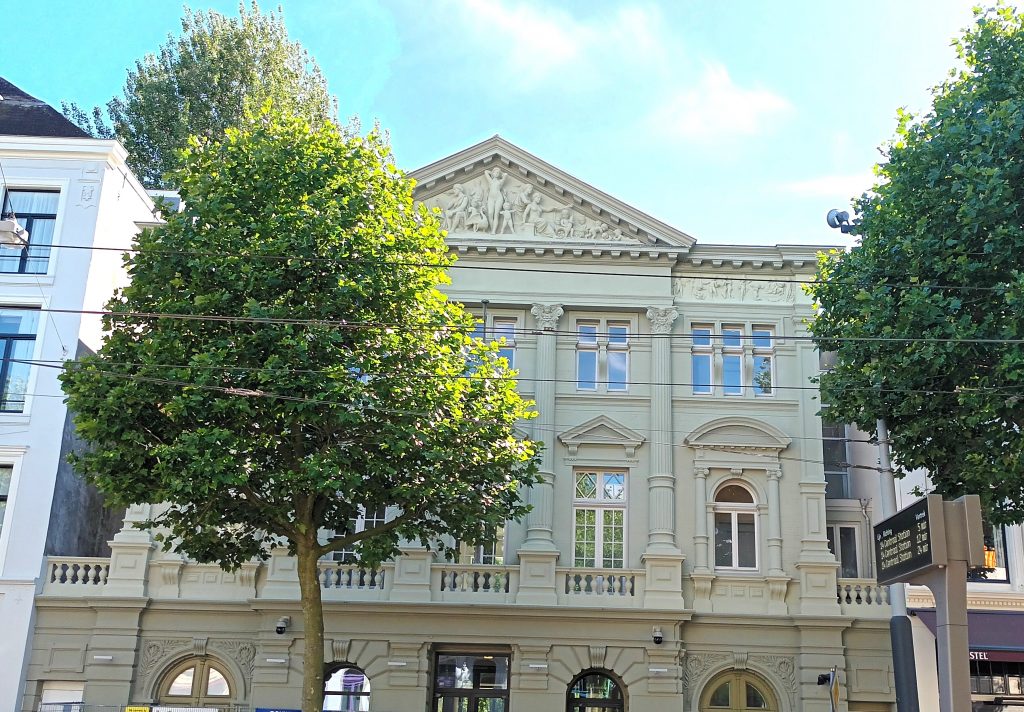
The Dutch Theatre (Hollandsche Schouwburg) , which before the war produced such renowned Dutch actors as Esther de Boer van Rijk, Louis de Vries and his troupe, was requisitioned in 1942 by the Germans. The Jews were detained here before they were taken to the Westerbork transit camp and then transferred to concentration camps. Since 1962 this building has served as a memorial. Engraved here are the names of 7600 families whose relatives are among the 104000 Jews who never returned from the concentration camps. Inside the memorial, documents, photographs and films testify to the gradual isolation of the Jews during the occupation. Policies of discrimination were adopted slowly in an attempt to “gently” lead the Dutch toward considering the Jews as different beings. Such measures went from forbidding Jews to ride bicycles (a typically Dutch means of conveyance) or go fishing to prohibiting them from entering any public space. The Dutch were forced to declare they were pure Aryan, and when such was not the case, were fired from their jobs and forced to send their children to Jewish schools. The first deportations occurred in May 1942 and were masked are departures for “work camps” in eastern Europe. The Jews who has acquiesced to Nazi-enforced registration were summoned alphabetically and assembled in the Dutch Theatre. The Germans also raided areas with a high concentration of Jews in order to round up other members if the community. In the span of a year, more than 60 000 Jews were held in this theatre, whose seats has been removed to accommodate them. That, at the beginning of the occupation, the theatre has been reserved for a Jewish public who came to watch Jewish actors forbidden to act on any other stage reveals a tragic irony.
As you exit the theatre, head back toward the traffic light and turn left onto Plantage Kerklaan. The building at number 36 was the location of the city’s population records during the war. The plaque commemorates the attack on the office of 27 March 1943 by a Resistance group attempting to destroy the records. The attack failed because the files were too thick and well bound to burn rapidly. Twelve members of the group, including several Jews, were captured and executed.
A little further on the same street is one of the oldest zoos in the world, the Artis. For 125 years it has delighted the inhabitants of the quarter, notably on the days of Shabbat, because visitors only had to pay the following day if they did not have a membership card. Continuing to number 61, you will find the decorative facade of Plancius, a building dating from 1876 that housed groups of musicians and theatre companies. It was established on the initiative of a Jewish choral society, called Oefening Baart Kunst (“from practice art is born”). A Start of David on the pediment recalls the cultural origins of this edifice. At the end of the nineteenth century, when socialism gained popularity among the Jews, the building also functioned as a meeting hall. This was where the great Jewish leader Henri Polak, founder of the diamond workers’ union, spoke. Since 1999, the first floor of the building has housed the Resistance Museum, a must-see attraction in Amsterdam.
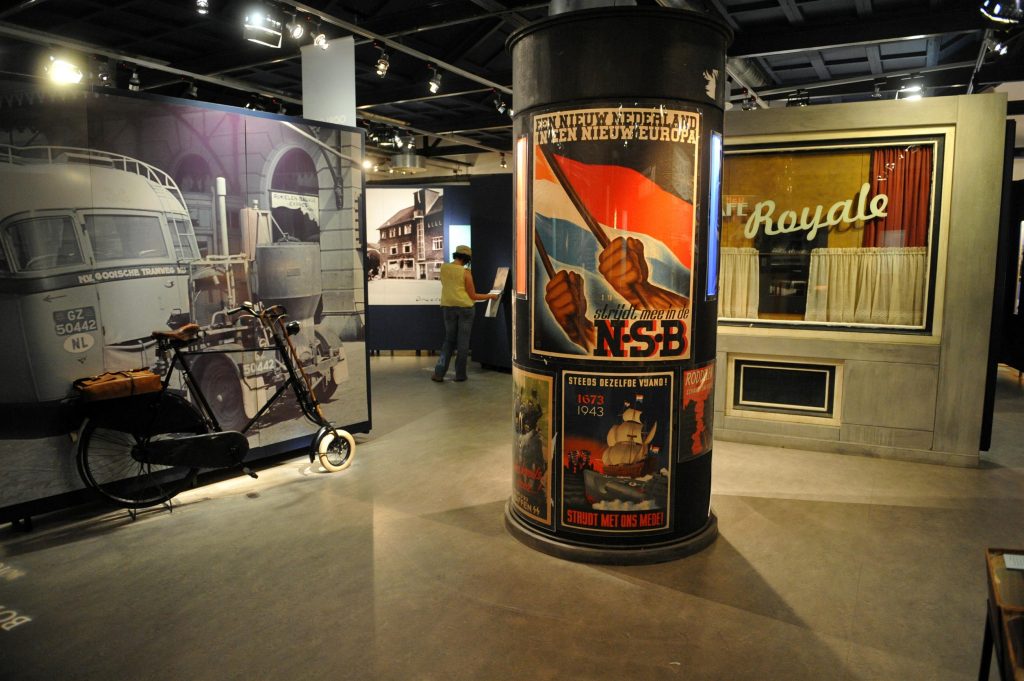
The Resistance Museum (Verzetsmuseum) offers a rich permanent collection as well as temporary exhibitions. The displays permit the visitor to consciously analyse the choices and dilemmas that Dutch citizens confronted during Nazi occupation. What did the Resistance really do and how ? The exhibition runs the gamut of the era’s history, from telling the stories of strike and and the clandestine circulation of pamphlets and newspapers to all manner of protest actions, from spying to sabotage. Photos on the walls and objects dating from World War II such as bicycles , radio broadcasts, telephones, and a printing press recreate the atmosphere of the period. Authentic letters and films allow the visitor to follow the daily life of those who were sent to the Westerbork camp. Recorded testimonies give voice to the Dutch men and women who helped the Jews hide themselves , but also to those who who didn’t have the courage to do so. A short film from 1942 depicts life inside the Westerbork transit camp and is particularly chilling since it captures how the camp was administrated by the Jews themselves (work, sports, administration). It shows the departures from the camp en route to Auschwitz, with the prisoners enclosed in train cars on which one can read in large letters “Westerbork-Auschwitz”, as it were a train line providing “regular” service. The museums displays some of these macabre train signs.
Retrace your steps now and turn right on Henri Polaklaan. This street bears the name of the founder of the General Union of Dutch Diamond Workers (ANDB). Founded in 1894, the ANDB was the first workers’ union in the modern Nertherlands. In the past, there were associations of diamond workers, but each unit (cutters, polishers, etc.) had been independent and no group numbered more than 200 members; Jews and non Jews belonged to separate organisations. In 1894 a large strike erupted in the diamond industry, and the leaders of the trade unions, Henri Polak and Jan Van Zutphen, won an impressive victory in obtaining a 35 percent salary increase for union members. From that date, a single union came into being that united the various groups of workers. In 1910, the trade union obtained a week of unpaid vacation; two years later it won paid vacation. In 1911, the ANDB was the first trade union in the world to secure an eight-hour workday. After World War II and inscription was engraved on the right side of the hall: “Remember, visitor, the two million of our members who were deported during the occupation, never to return”.
Across from the ANDB at number 6-12 is the former Portuguese-Jewish hospital. Today the only distinguishing sign of the building’s previous function is the small pelican that one can see on the facade nourishing her young, a symbol of the Portuguese-Jewish community.
Take a right at the end of Henri Polaklaan, cross Plantage Parklaan, and follow the path on the left to Anne Frankstraat. Cross Nieuwe Henrengracht and turn left onto Rapenburgerstraat. Number 109 Rapenburgerstraat was the location of the beth hamidrash Etz-Haim, an institution founded, according to an inscription on the facade, in 1883 for the study of the Torah. The building today houses the offices of the Dutch Jewish weekly the NIW.
Before the war, the café de Vlooiemarkt at 169-171 Rapenburgerstraat was an orphanage for young girls looked after by the ashkenazic community. Nearby at number 173 there was a synagogue that later became the offices of the chief rabbi of Holland. You will notice the imprint of the mezuzah at the entrance to this former shul.
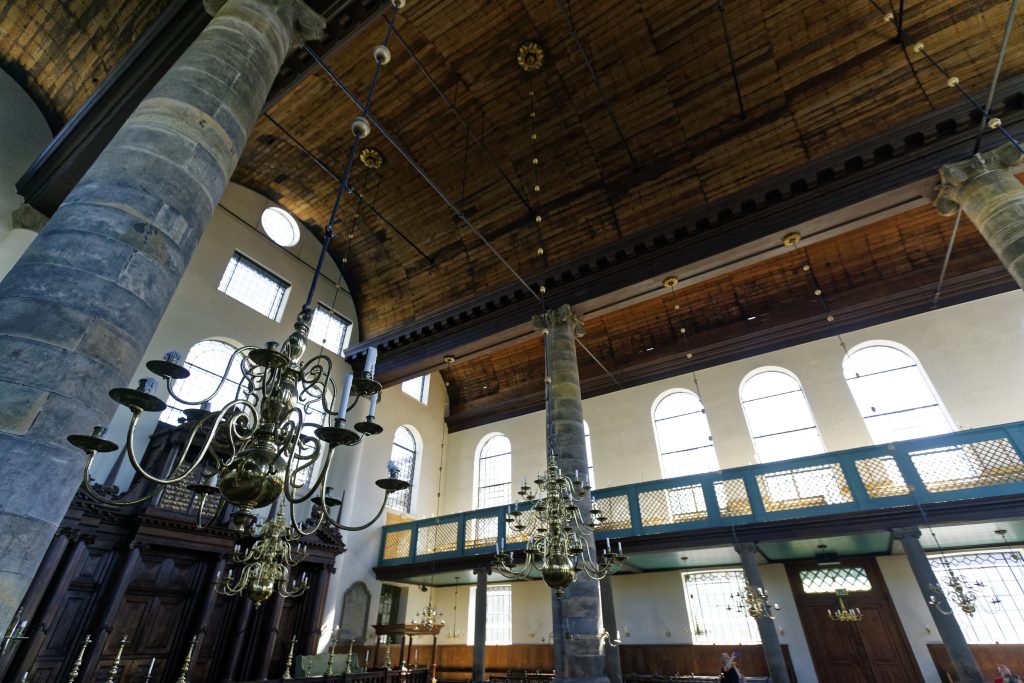
At the end of Rapenburgerstraat cross Mr. Visserplein Square. The Portuguese Synagogue is on the left. When it was completed in 1675 by Elias Bouman, this synagogue was the largest in the world. On the portico, by adding the value of the letters starred in the text of Psalm 5:8, the date 1672 can be deciphered -the date originally set for the building’s completion. One can also make out the word Aboab (formed by the last two wordsof the Psalm), the name of the rabbi who initiated the building’s construction. Inside and out, the synagogue appearance remains almost unchanged since the time of Spinoza, who lived nearby. The edifice rests in submerged pylons that are regularly checked by boat to verify the level of the water. The surrounding buildings -the secretariat, the archives, the living quarters of the administrators, the office of the rabbi, the morgue, and the world-renowed library Etz-Haim- shelter the the synagogue from the element in winter.
Inspired by the plan of the Temple of Jerusalem, this enormous brick building was miraculously spared from damage by the Nazis and bombing during the war. The eight wooden ceiling vaults of the synagogue’s interior are supported by four monumental ionic columns and illuminated by seventy-two windows. For important ceremonies, 1000 candles in copper chandeliers bring the flickering light to the cavernous space. The ark with its gilt leather interior occupied the southeast corner and is oriented toward Jerusalem, while the Tevah faces it. One can contemplate the monumental heikhal here, as well as a volume of the Holy History by Menasseh ben Israel and illustrated by Rembrandt. One of the Scrolls of the Law was brought here from Emden, Germany, by the Jewish printer Uri Halevi Pheobus in 1602. The synagogue furniture dates from 1639.
A video tells the story of the synagogue and that of the three Sephardic communities of the Netherlands, each of which had its own synagogue before uniting in the Talmud Torah in 1639. Today there are no more than 600 Jews of Sephardic origin living in the Netherlands. A handful still attend services at this synagogue on important religious holidays, but the majority live outside the city center (as do most Ashkenazic Jews).
At the exit of the Portuguese Synagogue on Jonas Daniel Meijerplein is the statue of a robust dockworker. It commemorates the strike led by Amsterdam port workers in February 1941 to oppose the anti-Jewish measures of the Germans. Without equal in the rest of the world, this protest was harshly suppressed by the occupying forces. Every year on 25 February, a memorial service takes place here in honor of the strikers.
Cross Mr. Visserplein Square and once again take Jodenbreestraat. From Jodenbreestraat, turn right onto Uilenburgersteeg and walk until you come to Nieuwe Uilenburgerstraat. In an immense brick building at 173-75 Nieuwe Uilenburgerstraat is the superb diamond-cutting workshop of Samuel Gassan . The building dates to 1879, at which time the workshop was the largest producer of diamonds in Europe. In 1812 the patriarch of the family, Marcus Abraham Boas, lived on the Rapenburgerstraat and sold used clothing. His son, Juda Boas, became a cobbler and had seven children. Three of Juda Boas’ children went into business together to establish the workshop after having studied the diamond business in Paris. During the war, the Nazis requisitioned the building, forcing Marcus Boas and his family to fle to the United States just in time to escape persecution. Bertha Boas left with her son for England, while Bernard emigrated to Switzerland. Martha, Julius, and Elisabeth Boas died in concentration camps.
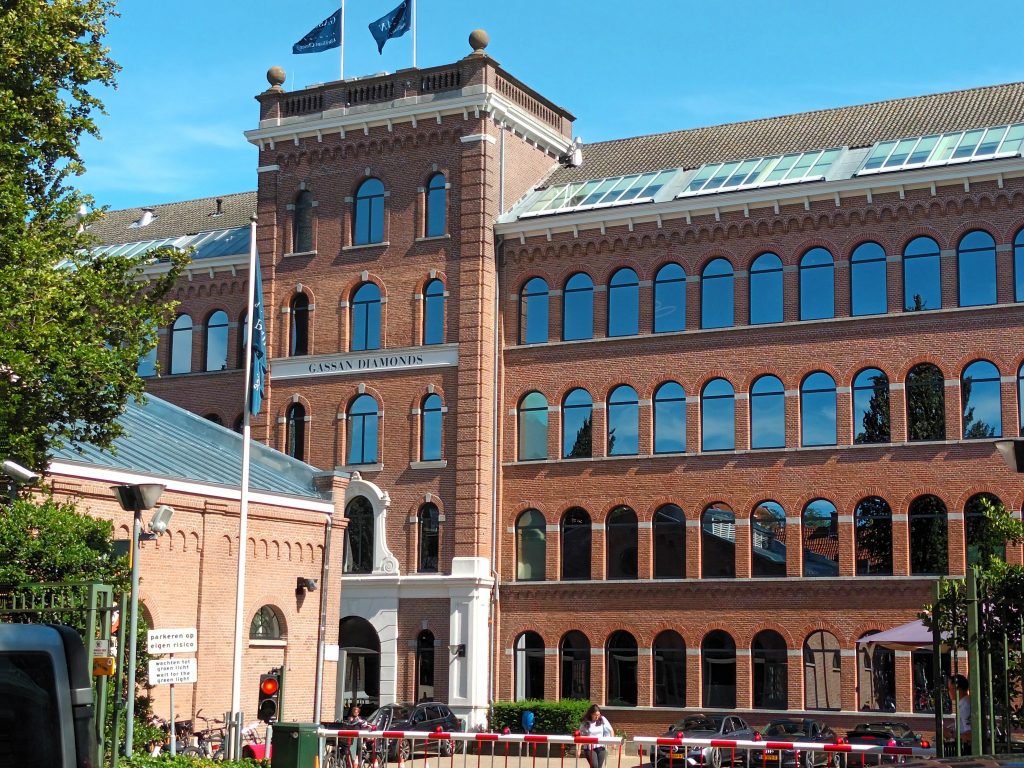
Having learned the diamond-cutting trade as a worker in the Boas factory, in october 1945, Samuel Gassan founded Gassan Diamonds. Today the company is run by two of Gassan’s grandsons. It includes several factories in Amsterdam and has numerous salesrooms all over the world. The four-story building you see before you has large windows that permitted the workers to labor using daylight alone, as did the students of the diamond-cutting school, who were housed in the same building. The back of the building faces a canal, making it easy for the tour boats, which makes the workshop one of the stops on their itinerary, to access the building directly. Inside you can see how craftsmen cut and polish the diamonds, learn to recognise the various types and grades of stones, and even buy diamonds that can be set and certified within the hour at factory prices.
Before heading back to the Waterlooplein subway station of walking the short distance to the city centre on foot, be sure to notice the lovely facade of the former synagogue of Uilenburg built in 1724 (on the same side of the street as the Gassan workshop, at number 91). If the metal grille of the door is open, you can enter the sanctuary to admire its completely restored interior.
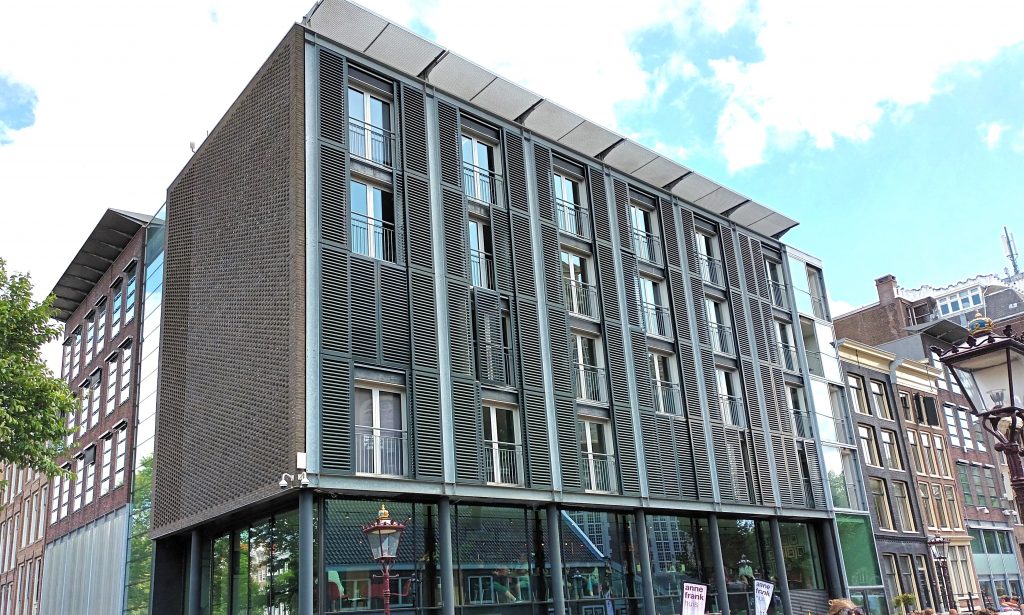
The Anne Frank House is not in the Jewish quarter but in Jordaan, in northwest Amsterdam not far from Centraal Station. Anne Frank and her family hid in this house from July 1942 until August 1944, when they were discovered and taken away by the Nazis. After the invasion of the German army in May 1940, Otto Frank had the back of his office altered to accommodate a secret annex where his family and Jewish employees (a total of eight people) could live hidden away. Thirteen-year-old Anne Frank recorded the details of life in the annex until the day of the group’s discovery. In the ensuing search and seizure, the journal was dropped, its page left scattered about as the Germans looted the house and deported its inhabitants. Anne and Margot were sent to Bergen-Belsen, while the rest of the family was sent to Auschwitz. Only Otto Frank survived concentration camps. Upon his return to Amsterdam, his assistant gave him the journal written by his daughter Anne.
The visit to the museum begins on the ground floor all the way to the third floor leading you to the annex, which was hidden behind a door disguised as a bookshelf. In the various empty rooms, one can still see the map of Normandy on the wall that was used to chart the Allies advance, the pencil lines marking the childrens’ growth, and the magazine clippings of movie stars Anne has pasted to her bedroom wall for decoration. Proceeds from the tickets sale are used to finance various projects about racism.
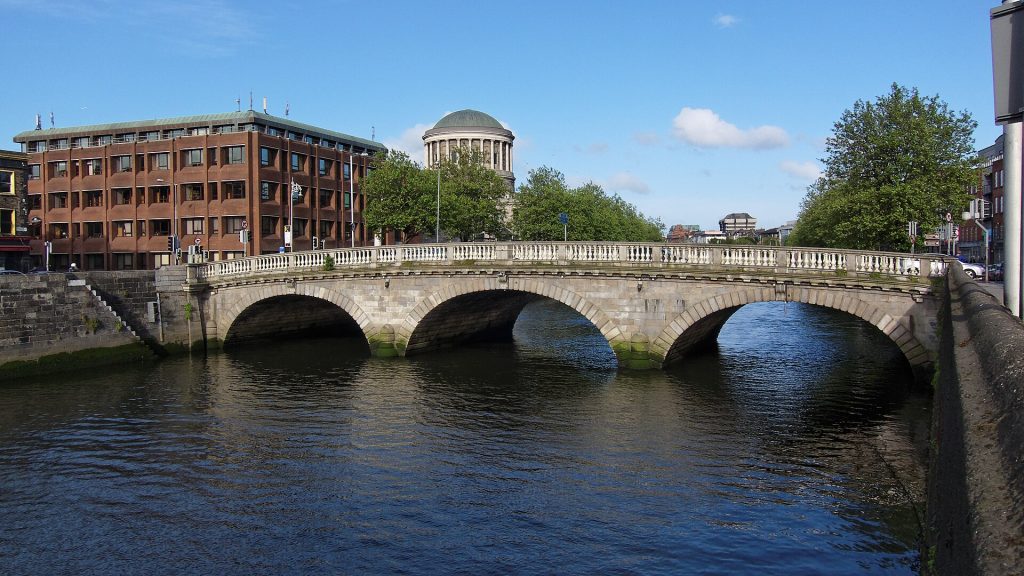
Dublin’s Jewish community reached its apogee at the end of the nineteenth century. It centered around South Circular Road. Indeed, Dubliners nicknamed Warren Street, Martin Street, and Saint Kevin’s Parade “Little Jerusalem”.

The Irish Jewish Museum is housed in the old synagogue on Walworth Road. This place of worship was the center of Jewish life in the capital until the movement out to the suburbs and a gradual shrinking of the population led to its closure in the 1970s. In 1985, Chaim Herzog, former president of Israel, gave a speech inaugurating the new museum. It houses archives and objects and depicts the distinctive characteristics of the community. On the first floor, visitors can admire a kitchen ready for a typical Shabbat at the turn of the twentieth century. On the second floor, one can admire the well-preserved synagogue.
Ulysses
“I, Rudolph Virag, now resident at no 52 Clanbrassil Street, Dublin, formerly of Szombathely in the kingdom of Hungary, hereby give notice that I have assumed and intend henceforth upon all occasions and at all times to be known by the name of Rudolph Bloom.”
James Joyce, Ulysses (Paris: Shakespeare & Co., 1992)
52 Upper Clanbrassil Street (Dublin 8) is the birthplace of Leopold Bloom, one of the two protagonists of Ulysses, the 1922 masterpiece by James Joyce (1880-1941). Bloom was the son of a Hungarian Jew who emigrated to Dublin and changed his name. A plaque on the wall recalls his presence here. Ulysses also mentions Emorville Square, Lombard Street West, and Saint Kevin’s Parade. Bloom has become such a popular character that Ireland’s main literary festival is named after him: Bloomsdays is held every year on 16 June. For more information, contact the James Joyce Centre.
The synagogue on Adelaide Road , which was consecrated in 1892, closed in June 1999. Another, Greenville Hall , built in 1920, is now home to a high-tech company. The Greek columns and Stars of David that decorate the exterior can still be admired.
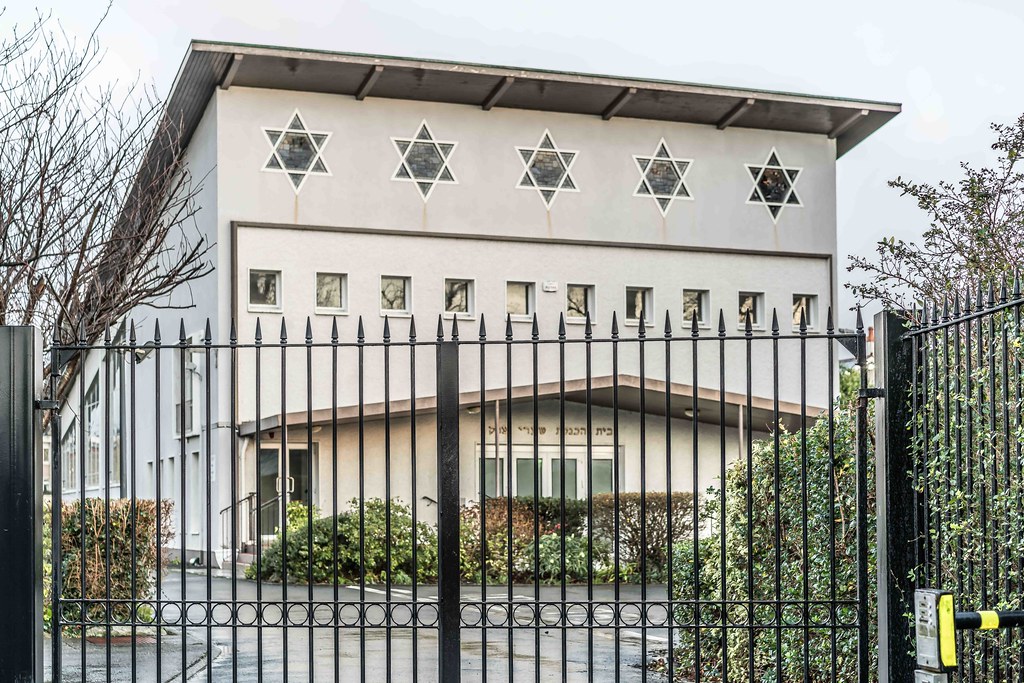
Two active synagogues remain: the Dublin Hebrew Congregation xas built in 1935. Unfortunately, due to the decline of the Jewish population, the building is up for sale in 2024, the community looking for a more modest alternative.
The Dublin Jewish Progressive Congregation (DJPC) has been active since 1946. Apart from the regular services, they also have a cheder for children. They welcome many tourists who have to contact them first via mail.

The last burial at Ballybough cemetery was in 1908, but the Jewish community has continuously employed a guardian to take care of the site since then. An inscription on the guardian’s lodge, at the entrance to the cemetery, reads “Built in the year 5618”.
Dublin’s Jews are buried at Dolphins Barn cemetery, not far from the Donore Avenue Bridge over the Grand Canal.
Interview of Yvonne Altman O’Connor, head of the Irish Jewish Museum.
Jguideeurope: Could you give us a few examples of the Museum’s collection of memorabilia related to the Irish Jewish communities and their contributions to present-day Ireland?
Yvonne Altman O’Connor: The museum is situated in the last remaining old synagogue and is preserved as it was in the early 1900’s.
There is a large memorabilia section related to the social history of the community containing photos, letters, documents and artefacts relating to the sporting, artistic and social activities of individual members. There is also an original kosher kitchen and a display of books by and about Irish Jewish authors and themes.

Which underrated place linked to Jewish heritage in Dublin is of interest to visitors?
The Jewish Museum is the main source for all Jewish heritage. The two cemeteries are also of interest.
You organized an event on Leopold Bloom’s legacy. How has such a representation Evolved since the creation of the character?
There is more emphasis on the Jewish context of the story and character of Leopold Bloom highlighting antisemitism and zionism in Ireland at the time.
Also, further research has been revealing information about how Joyce gathered his knowledge about Jewish characters and Judaism is coming to light.
What’s your next exhibition about?
We currently have a display of Jewish textiles and an exhibition on the diaspora.
The Museum can be visited or contacted via this link
As in the rest of the country, the Scottish capital received virtually no Jews until the 18th century. We find the administrative trace of a request for installation by a certain David Brown in 1691.
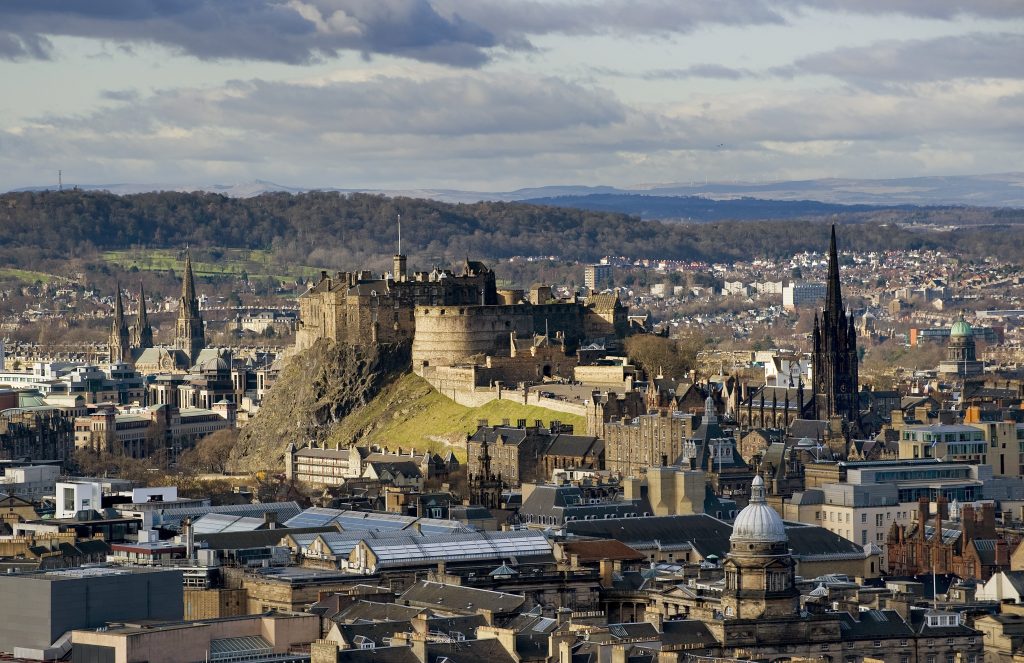
The first request for the purchase of a tomb by a Jew was that of Herman Lyon, a dentist from Germany who settled in the city in 1788.
About 20 families founded a Jewish community in Edinburgh in 1816. Its first leader was Moses Joel of London. He remained in this post for almost half a century. In 1825, the community bought premises in Richmond Court to set up a synagogue. It was used for forty-three years.
With the arrival of exiles from Russia and Poland fleeing the pogroms in Eastern Europe, the community is growing. This prompted the purchase of a place on Graham Street to create a synagogue.
The chief rabbi has been Salis Daiches, since 1918. He led the community for 27 years, uniting citizens by building bridges of Judeo-Christian friendship. And in the face of the resurgence of anti-Semitism that plagued the UK during the interwar years.
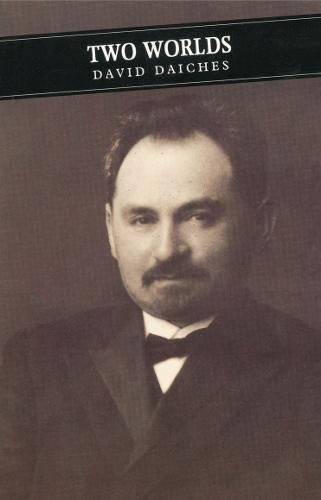
He published books, including Aspects of Judaism (1928). His brother Samuel Daiches was a famous rabbi and author, also very involved in institutional life.
The strengthening of the Judeo-Christian friendship was continued by his successors: Isaac Cohen and Jacob Weinberg.
The latter taught at the University of Edinburgh, introducing Jewish cultural heritage to all Scots through the Psalms, the Dead Sea Scrolls and the works of authors such as Maimonides and Agnon.
The Edinburgh Hebrew Congregation now houses the city’s Orthodox Synagogue. Built in 1932 to accommodate 1,000 people, it was rebuilt in 1980 and can now accommodate 500 worshipers.
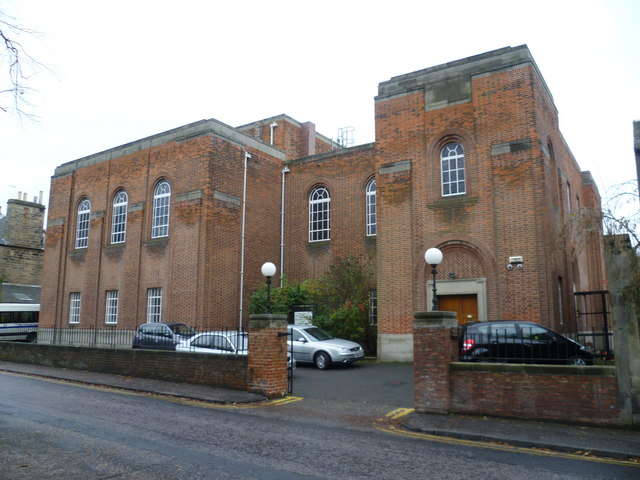
There is no kosher food business, but many products can be ordered from major chains such as Sainsbury’s, Tescos and Morrisons. Food imported from Glasgow, Manchester and London. The Edinburgh Hebrew Congregation hosts regular lunches, mainly for retirees.
This community center also implements the city’s festivities and organizes events during Jewish holiday periods. The number of Jews increased from 1,100 in 1968 to 763 in 2001.
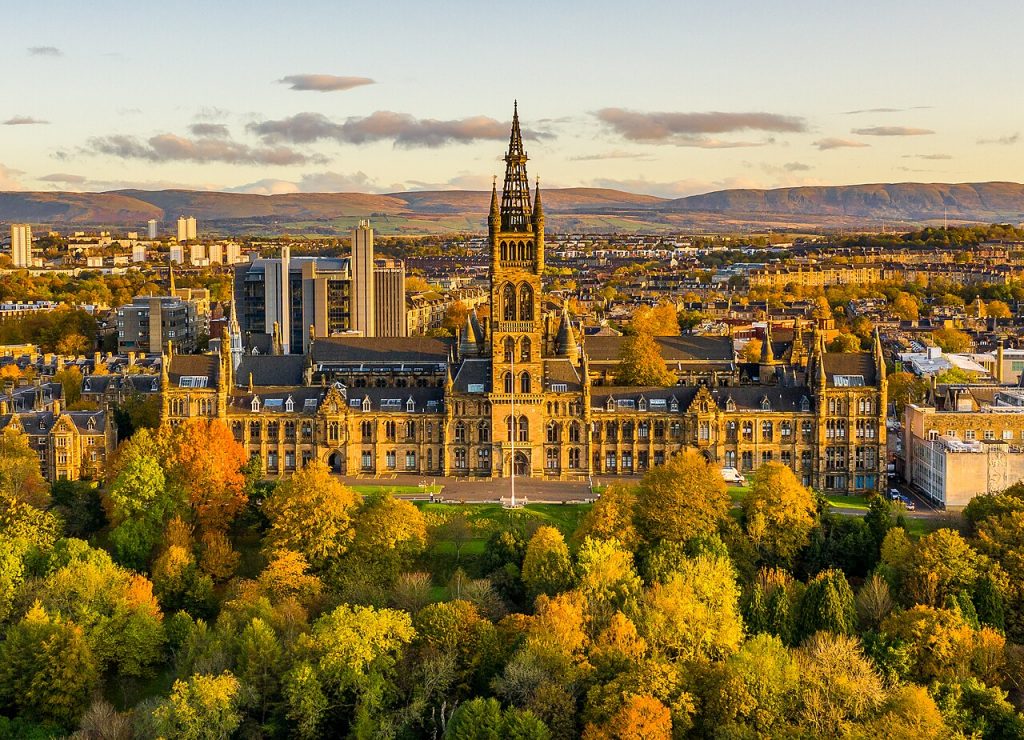
Most of Glasgow’s synagogues are in the suburbs, where the majority of the city’s 6,500 Jews now live. The oldest of them, dating from 1879, is in Garnethill .
As in the rest of the country, the first Jews to settle in Glasgow did so mainly between the end of the 18th century and the beginning of the 19th. In 1831, there were 47 Jews in Glasgow, most of them from Eastern Europe. From 1833, Moses Lisenheim, the city shohet, welcomed into his home what served as a synagogue. Two years later, the Jews bought a plot to bury the dead.
In the middle of the 19th century, 200 Jews lived in Glasgow. The Glasgow Hebrew Congregation was built in 1858. This inaugurated the construction of other synagogues in the city, mainly that of Garnethill. A development parallel to the integration of thousands of Jewish refugees from Eastern Europe, fleeing the pogroms. Some of them continued on to North America and the rest settled in Glasgow. The population evolved at this time to 4,000 Jews in 1897 and 6500 in 1902.
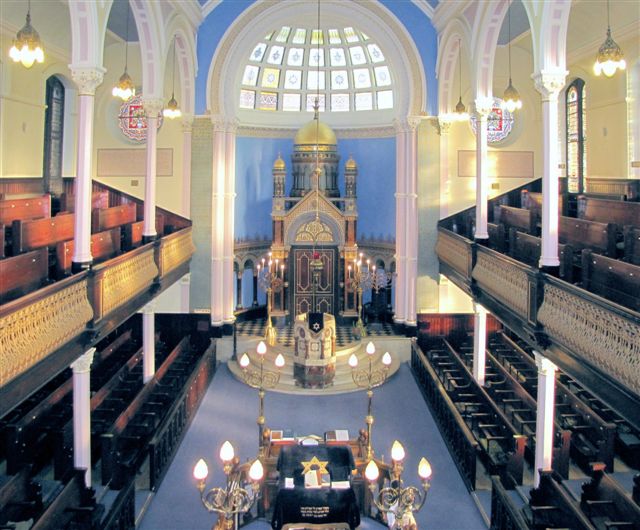
Glasgow experienced a great development in its Jewish life during the first six decades of the 20th century. And differed from other Scottish towns by the presence of a yeshiva and a Jewish school, Glasgow University also teaching Biblical studies and modern Hebrew. Some of the great university professors include Noah Morris, Michael Samuel and David Daiches Raphael. Note also the presence of the newspaper The Jewish Echo, a weekly founded in 1928, joined in 1965 by The Jewish Times.
If 13,400 Jews lived in Glasgow in 1969, this number fell to 6,700 in 1995, then 4,224 in 2001. There are six synagogues in Glasgow today. The Garnethill is Glasgow’s oldest operating. It was built by architect John McLeod. If you would like to learn more about the history of Scottish Jews, you can direct a request to the Scottish Jewish Archives Center located in Garnethill Synagogue. Created in 1987, it houses many objects retracing 200 years of Scottish Jewish life. Among them, more than 6000 photos and many old manuscripts, but also days, plaques, paintings and sculptures. The place is open to everyone, regularly welcoming students and researchers.
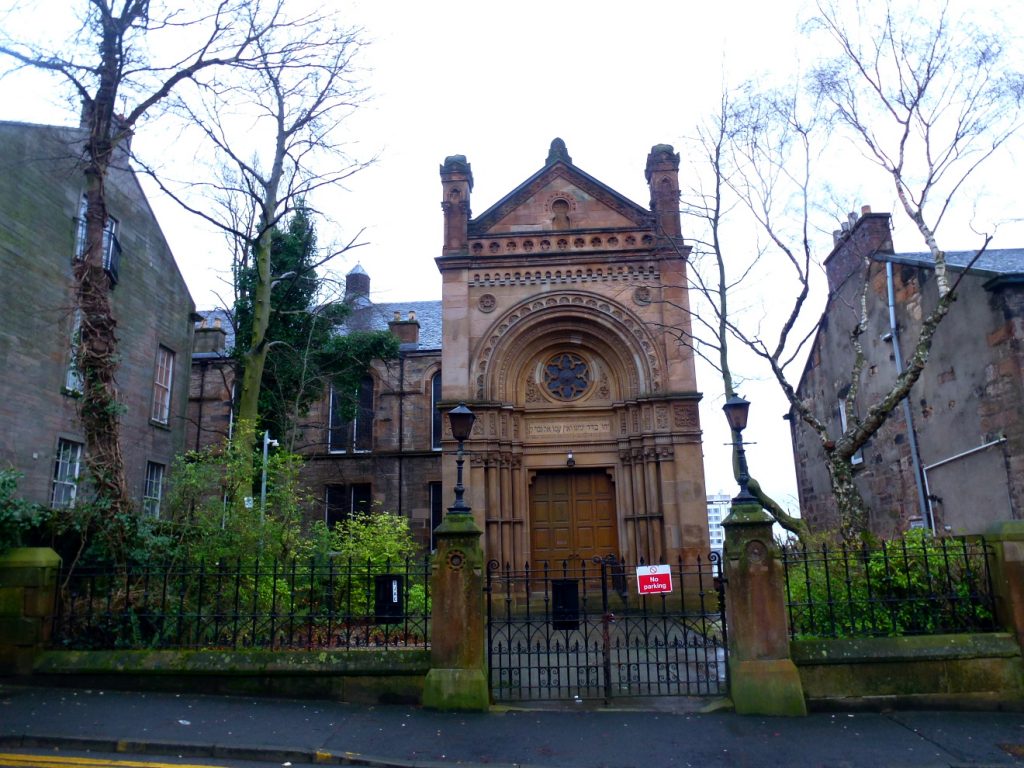
The second synagogue built and still in operation is Or Hadash . Dating from 1931, it has met with growing success for several decades. It is the only liberal synagogue in Scotland. The other four synagogues are that of Giffnock (built in 1938), then those of Netherlee, Langside and the Shul in The Park.
There are several places to eat. In particular, Mark’s Deli which is full of many products, but also the L’Chaim restaurant and the Sora’s café which adjoins the Giffnock synagogue.
Interview with Kerry Patterson, Manager of the Scottish Jewish Heritage Centre, about the Garnethill synagogue and the European Days of Jewish Culture
Jguideeurope: Could you tell us a bit more about the history of Garnethill?
Kerry Patterson: The first organised Jewish community in Glasgow can be traced to the early 1820s in the High Street. Fifty years later, the community, which by then numbered about 1000 persons, had outgrown various premises and looked to build a permanent home. The decision to build a synagogue on the corner of Garnet Street and Hill Street was made in 1875, and many members of the community then settled in this up-and-coming area.
Benjamin Simon, one of the synagogue’s trustees, set the foundation stone in 1877. Designed by John McLeod and Nathan Solomon Joseph, the first purpose-built synagogue in Scotland was opened in 1879 and soon became a landmark architectural example of the high Victorian style.
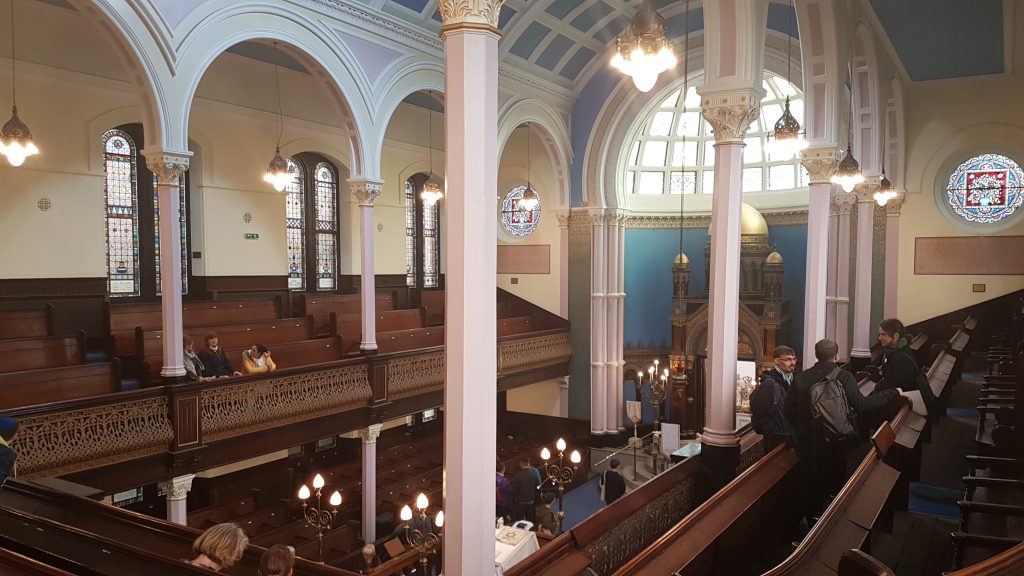
Can you tell us about the new Scottish Jewish Heritage Centre?
We launched the Scottish Jewish Heritage Centre in the Garnethill Synagogue. The Centre facilitates the sharing of information about the Category A listed building, the unique Scottish Jewish Archives Centre’s collections and aspects of Scottish Jewish history and culture. An experience enabling visitors to discover our 200-year experience of Jewish Scottish life. The Centre is a partnership project between the Scottish Jewish Archives Centre (SJAC), Garnethill Synagogue Preservation Trust (GSPT) alongside Garnethill Hebrew Congregation – all of which are based in Garnethill Synagogue.
Important funds enabled us to provide new interpretative displays, a study room housing a specialist Holocaust-era reference library, digital research resources and a school visit facility. Along that, major building restoration and renovation work in the lower level of the synagogue has improved public access to underused spaces. The new displays help the visitors understand the complicated period from 1933 to the 1950s when Scotland took in refugees fleeing Nazi persecution in Europe.
Most important, the sharing of this heritage with future generations. School students visiting will be able to use interactive learning kits, based on Holocaust-era refugee collections held in our archives. Among those resources available are the poignant experiences of refugees Dorrith Sim, Ernst Marchand and Hilda Goldwag who fled Europe, and found a safe haven here in Scotland. Students will be able to reflect on wider issues of citizenship, democracy, persecution and belonging, through the refugees’ experiences.
Visitors can find out more at www.sjhc.org.uk
The Jewish communities of London are highly diverse, in terms both of their rites and origins and of their geographical distribution.
The Jewish presence in London is attested from the 11th century. During the reign of William II (1087-1100), who seems to have favoured their arrival, in particular to contribute to the economic development of the region. Among the important works of the time were those of Abraham ben Meir Ibn Ezra, Iggeret Hashabbat and Yessod Mora, written in London in the middle of the 12th century.
Fluctuating situation for Jews under the Kings of England
Under Henry II (1154-1189) many Jews settled in the city. However, under Richard I (1189-1199), who succeeded him, a wave of antisemitism appeared, especially after the coronation of the new king with the attack on the Jewish quarter, in which thirty people were murdered, among them the tossafist Jacob of Orleans.
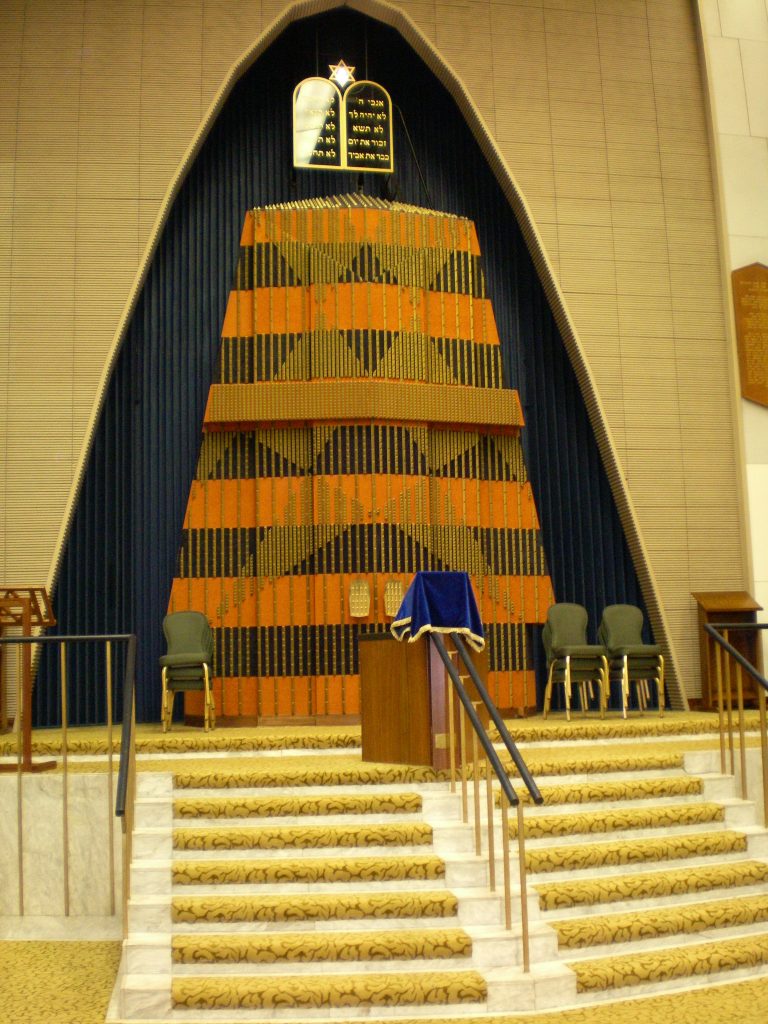
Although the situation of London’s Jews stabilised again in the 13th century, they were subjected to very high taxes by the crown. Anti-Semitic accusations of ritual crimes allowed the authorities to justify additional taxation when the kingdom’s coffers were empty or when there were conflicts between nobles. In the 1260s, these injustices also resulted in a series of murders of Jews.
Under Edward I (1274-1307), London Jews were banned from certain economic activities. In 1283, the Bishop of London ordered the closure of the synagogues. Seven years later, in 1290, England expelled the Jews from the kingdom. Prominent figures of this period included Jacob ben Judah, author of Etz Hayim, Joseph ben Jacob and Rabbi Moses of London.
A very small number of Jews attempted to resettle over the next three centuries, but conditions were harsh and the end result was often expulsion. In the 17th century, Jews were able to settle again. Some came from France and others from countries where the Inquisition was still in force.
The historical synagogue of Bevis Marks
Under Oliver Cromwell (1653-1658) the community was heard about the hardships and threats they endured. In 1656, a synagogue was officially opened in Creechurch Lane. In 1701, the still-famous Bevis Marks Synagogue was built. Among the scholars of this period were David Nieto, Jacob Abendana and Joshua da Silva. Following the accession to power of William of Orange, Jews from the Kingdom of Holland settled in London. They were followed by Jews from Hamburg.
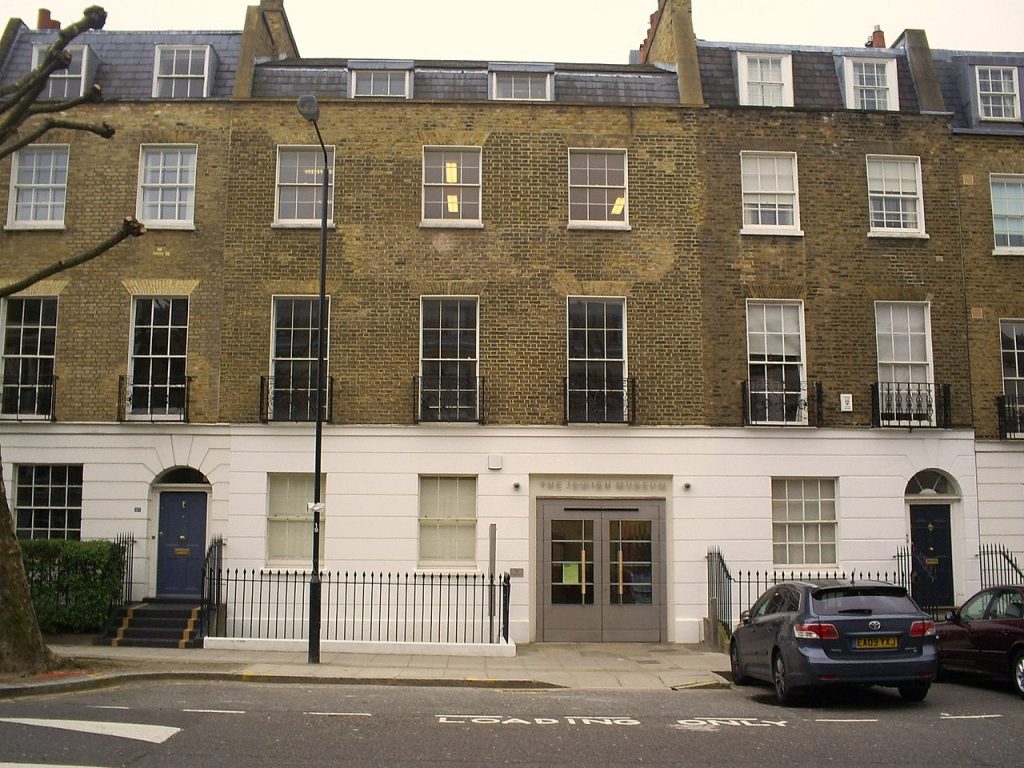
The different communities developed throughout the 18th century. In 1722, the Duke’s Place Synagogue was built. Four years later, it was the turn of the Hambro Synagogue. In 1761, the first synagogue (now commonly known as the Western Synagogue) outside the City was opened in Westminster.
If the 18th century was the century of the officialization of the Jewish presence and the recognition of its religious and associative institutions, the 19th century allowed Jews to access the same economic activities and political functions as other London citizens. Thus, David Salomons became the first Jewish mayor of the city in 1855. The liberal movement also emerged at this time, further evidence of the cultural and religious diversity of the Jewish community in London.
Integration of Eastern European Jews
At the end of the 19th century, following the pogroms in Eastern Europe, many Jews from that region also settled in London. At that time there were about 150,000 Jews in London, 100,000 of whom lived in the East End. Among them were many tailors, about ten thousand. They went on strike in 1889 against the harsh conditions of the trade and the discriminatory exploitation by employers of their immigrant status.
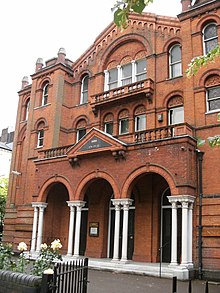
At the beginning of the 20th century, the immigration of Jews was slowed down by the 1905 migration policy, but some refugees managed to settle there, especially in the run-up to the Second World War, while those who were already living there saw the rise of a fascist movement. At this time, London Jews became less concentrated in the East End, choosing the northern areas of Golders Green and Stamford Hill in particular.
Contemporary evolution of London Jews
This geographical shift continued after the war. In particular in Harrow, Wembley, Edgware, Stanmore, Finchley, Ilford and Palmers Green. At the end of the 1970s, there were 280,000 Jews in London. However, this figure has been falling since then. It fell to 210,000 in 1988, 195,000 in 2002 and in 2025 to 160,000.
The orthodox and Hassidic communities are found mainly in the north (Stamford Hill). For information on services, contact the very congenial Board of Deputies of British Jews.
One introduction to Jewish life in London is to take a Stepping Out walking tour with professional City of London or Blue Badge guides. The Jewish Museum also offers numerous tours of the East End, including visits to synagogues that are usually closed to the public.
The British Museum is a must. Here, the British Library’s Hebrew Collection is one of the biggest in the world, with some 3000 manuscripts including Bibles, Talmuds, kabbalah and Haggadot, many of them illuminated. These come from all over Europe and some are over 1000 years old. The collection also has the original Balfour Declaration of 1917.
Finally, there are many documents of Jewish settlement in the British capital at the Guildhall Library which specializes in history.
Hospitals, universities, buses, theatres, streets… anti-Semitism has grown significantly in London in places far beyond the religious sphere. As in many European cities since the exploitation of the pogrom of 7 October. This has resulted in threats, insults, boycotts and attacks. The ‘response’ to this was sometimes a recommendation from government officials not to visit certain neighbourhoods.
It’s a strange feeling when you arrive in Drancy. The former internment camp and the Shoah Memorial opposite it are located near the junction of the avenues Jean Jaurès and Henri Barbusse. The town of Drancy, in the Seine-Saint-Denis department, is home to a large number of shops, cafés and markets.
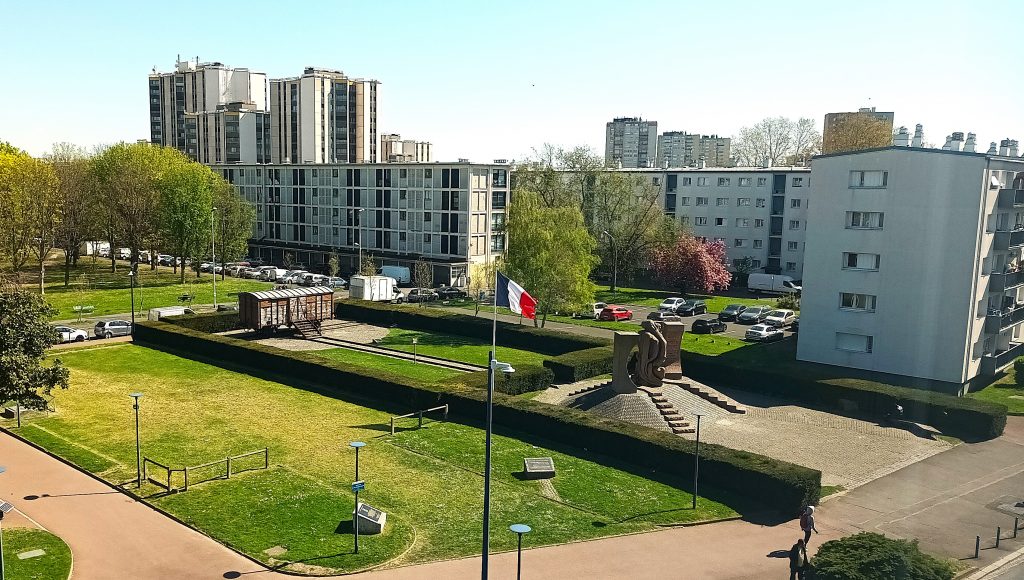
Would it be a challenge to push open this door, to enter this memorial and discover the painful history that took place there? Especially with so many traces of the U-shaped buildings that made up the camp still very much in evidence.
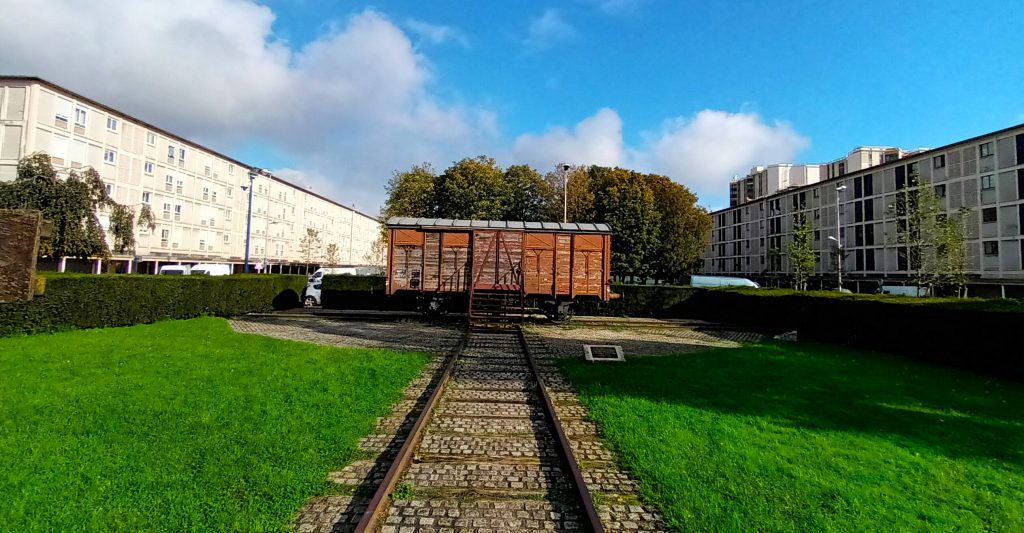
The Drancy Shoah Memorial does not wait for visitors to open its doors. It builds bridges between the past and the future, organising numerous themed and educational workshops, school meetings, cultural events and temporary exhibitions, in addition to its permanent exhibition. The aim is to preserve the memory of the past and facilitate its transmission, particularly to young people.
Drancy is located to the north-east of Paris. It can be reached either by car or by taking the RER or metro, then a bus. 200 metres from the junction of avenues Jaurès and Barbusse, past the gymnasium, you come to the site of the cité de la Muette , which became the Drancy internment camp.
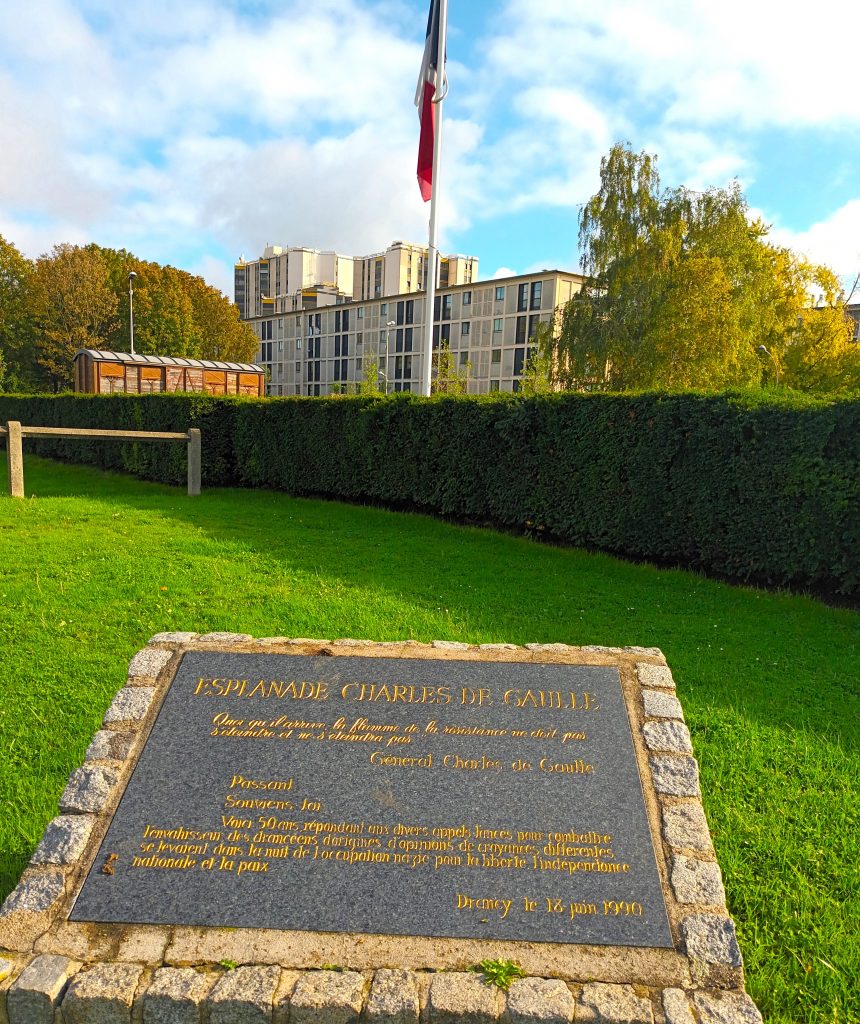
It surrounds the esplanade renamed Charles de Gaulle after the war in tribute to the general who rose up against the collaborationist Vichy regime with his appeal from London on 18 June 1940, refusing to surrender France. The plaque was installed in 1990.
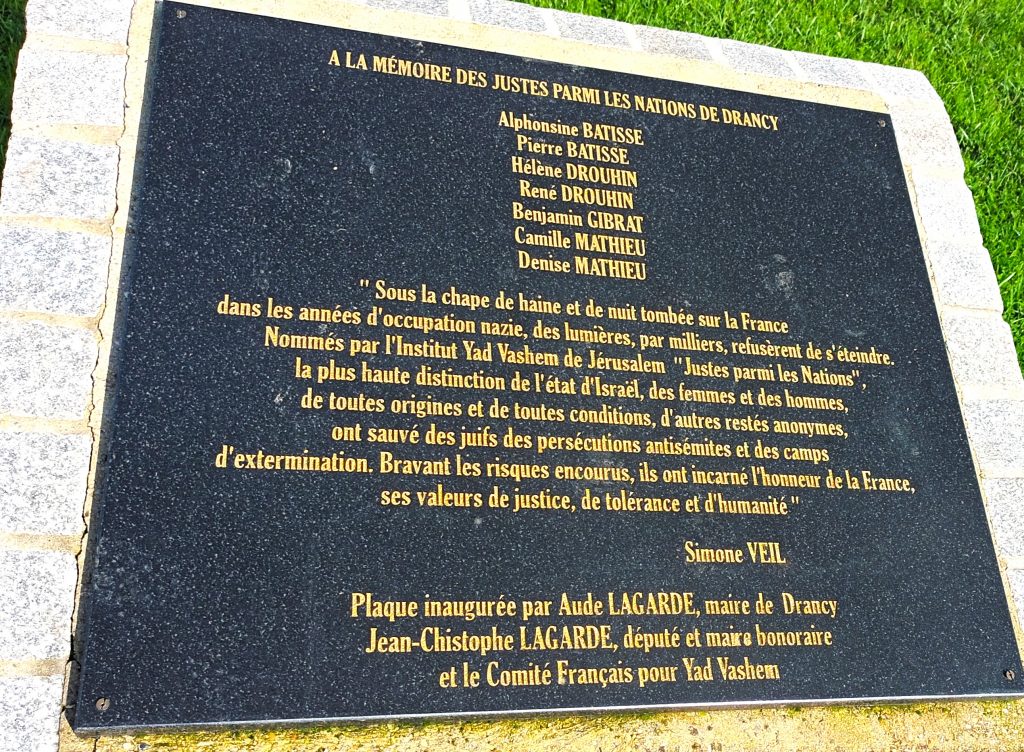
Next to it, a plaque pays tribute to the Righteous Among the Nations of Drancy: Alphonsine Bâtisse, Pierre Bâtisse, Hélène Drouhin, René Drouhin, Benjamin Gibrat, Camille Mathieu and Denise Mathieu. Beneath these names is a quotation from Simone Veil, the survivor of the camps and a symbol of courage and resilience through her personal and political life. The plaque was unveiled by Aude Lagarde, Mayor of Drancy, and MP Jean-Christophe Lagarde.

The Cité de la Muette was built between 1930 and 1937, with the aim of providing a ‘modern’ form of collective housing, on the initiative of the Office départemental de l’habitat. In July 1940, the building was requisitioned by the Germans to house French and British prisoners of war.
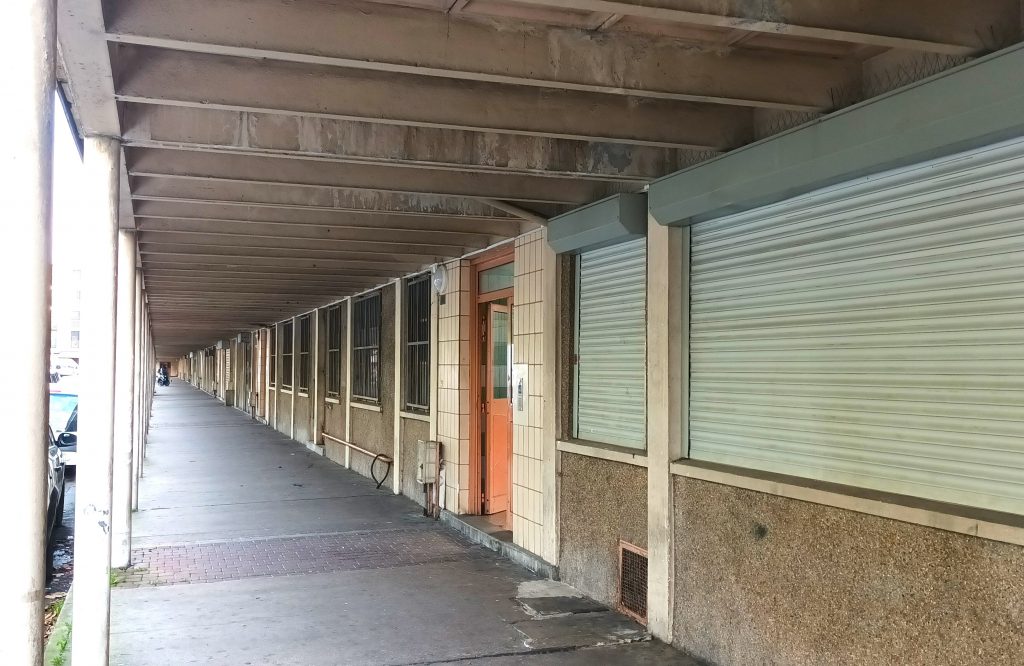
The Drancy camp was emptied of prisoners of war in July 1941 in preparation for the second round-up of Parisian Jews. More than 4,200 Jews, all men, were arrested and interned at the Drancy camp. As the plaques on the outside wall of the building on the right remind us, 63,000 of the 76,000 Jews deported from France between 1942 and 1944 were sent to Nazi extermination camps from Drancy.
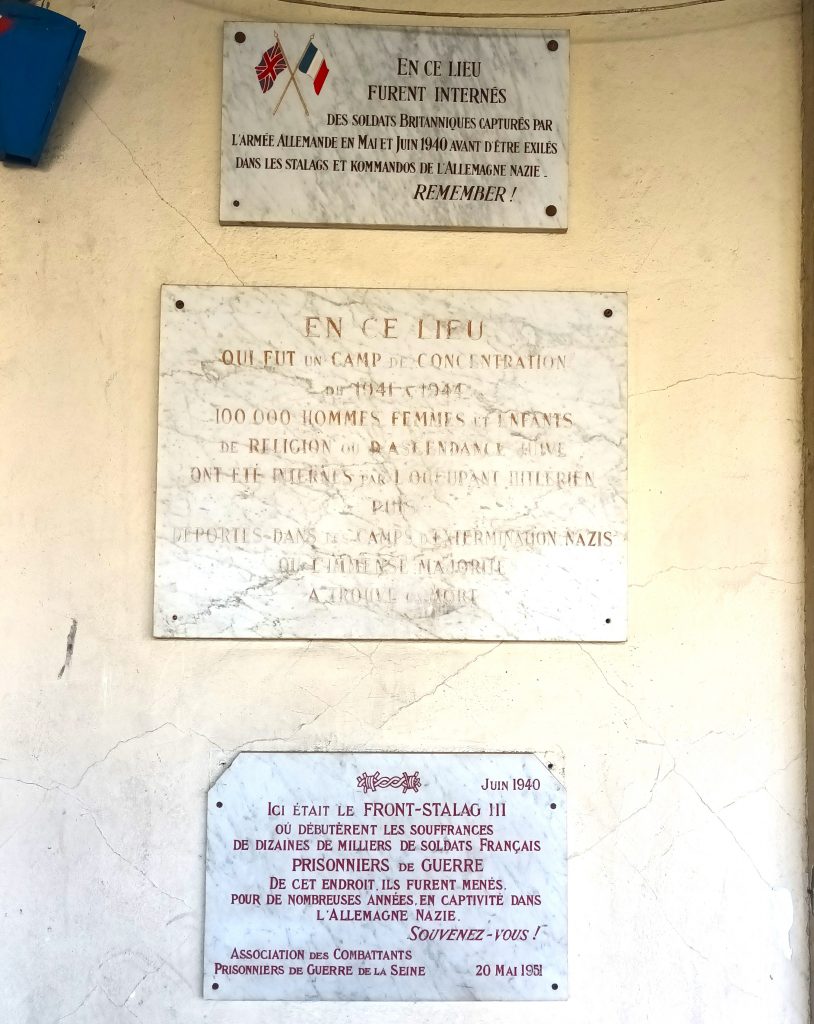
Following the Liberation, from September 1944, the camp was used as a prison for people suspected of collaboration. The cité de la Muette was then adapted to accommodate housing, which were rented starting in 1948.
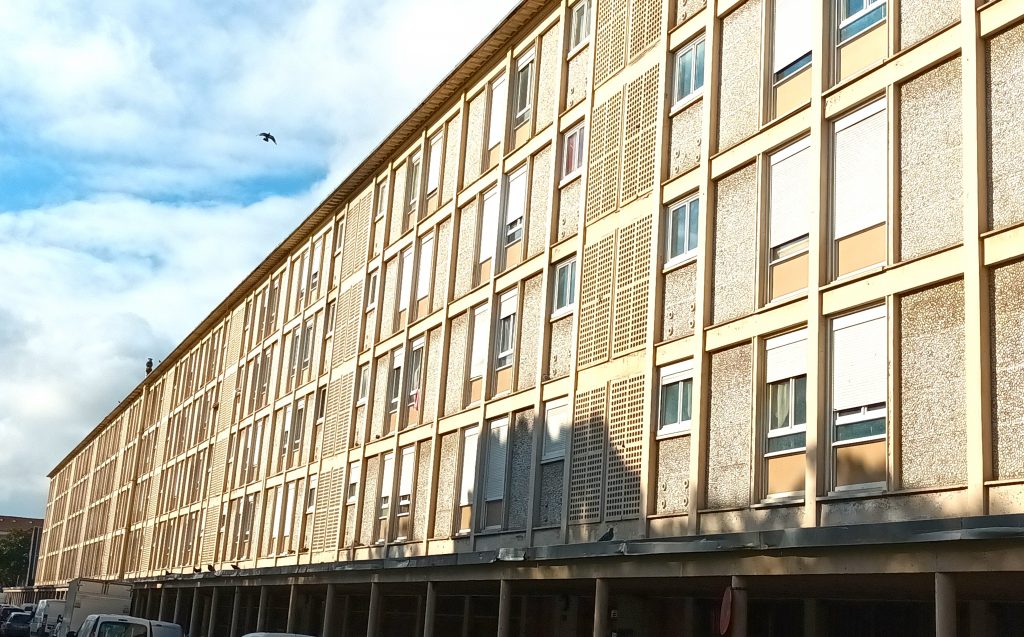
The Drancy monument was erected much later, in 1976, at the instigation of a committee led by Maurice Nilès, mayor of Drancy and a former Resistance fighter. It was created by the sculptor Shlomo Selinger. Born in Poland in 1928, he was deported with his family in 1942. He survived many concentration camps, but his parents and other members of his family did not.

He migrated to Israel, where he learned drawing and sculpture. He continued his training at the Ecole des Beaux-Arts in Paris in 1956. He went on to create hundreds of works. In 1973, he won first prize in the international competition launched to create the Drancy memorial. Following this, he took part in a number of meetings with schoolchildren, sharing his story and the love of life that helped to build his resilience.
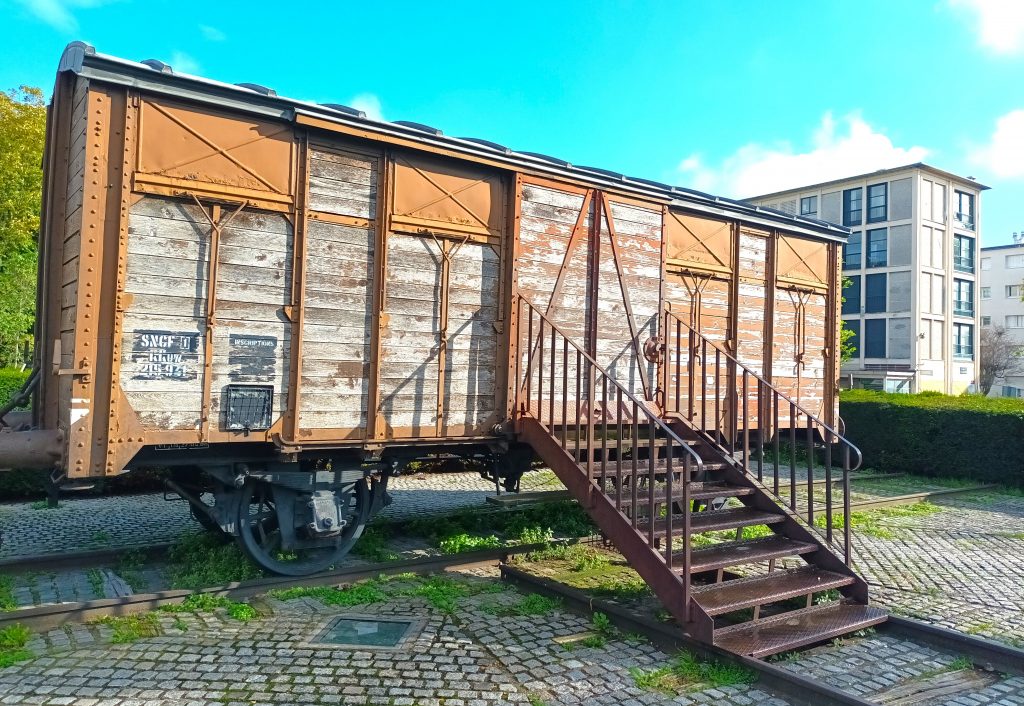
The memorial wagon, located near the memorial, was installed in 1988.
The Drancy Shoah Memorial was built on the initiative of the Fondation pour la Mémoire de la Shoah. Located opposite the cité de la Muette, it was designed by architect Roger Diener and inaugurated in 2012 by French President François Hollande.
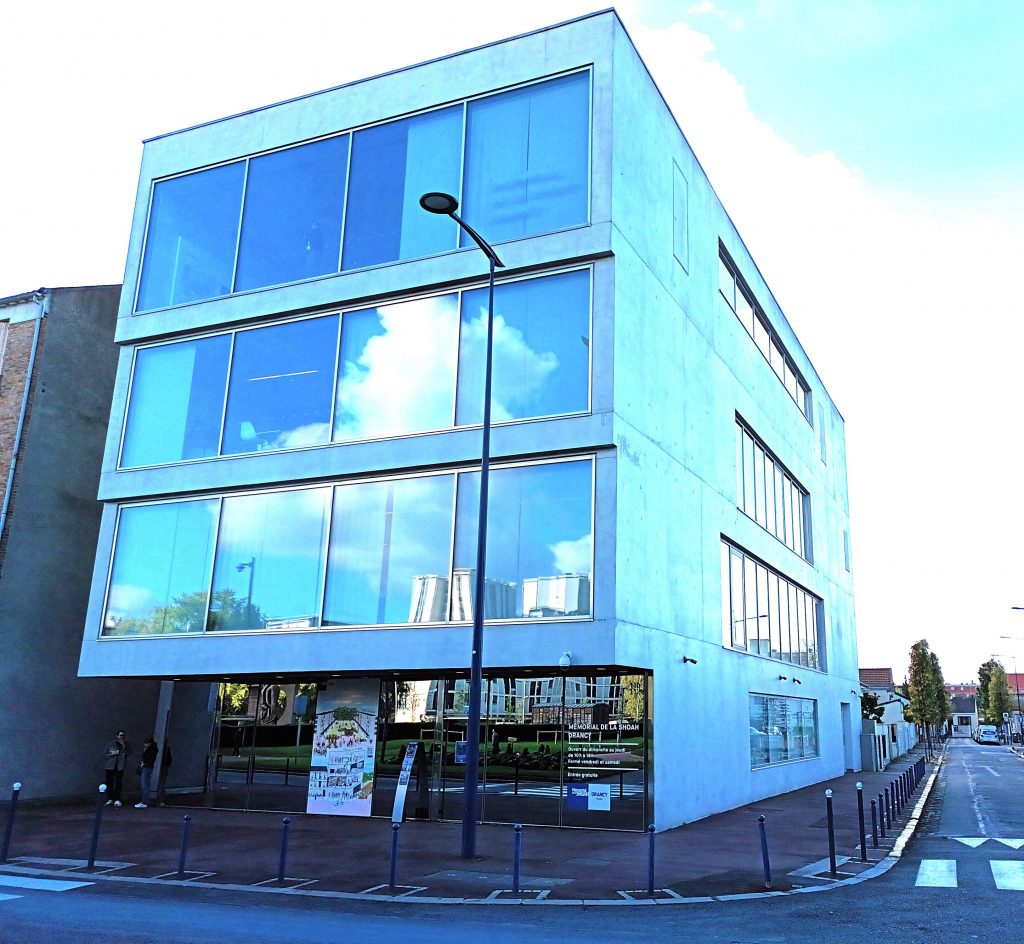
The basement of the Shoah Memorial building in Drancy houses temporary exhibitions. The documentation centre is on the first floor, with educational rooms on the second floor. The permanent exhibition is on the third floor.
As you enter, you’ll see a series of videos on the left and a chronology of the site since it was built in 1931 on the right. Each video lasts several minutes, recounting different moments and aspects of the history of the Drancy internment camp through images and personal accounts. The films for the ellipse and the exhibition as a whole were directed by Patrick Rotman.
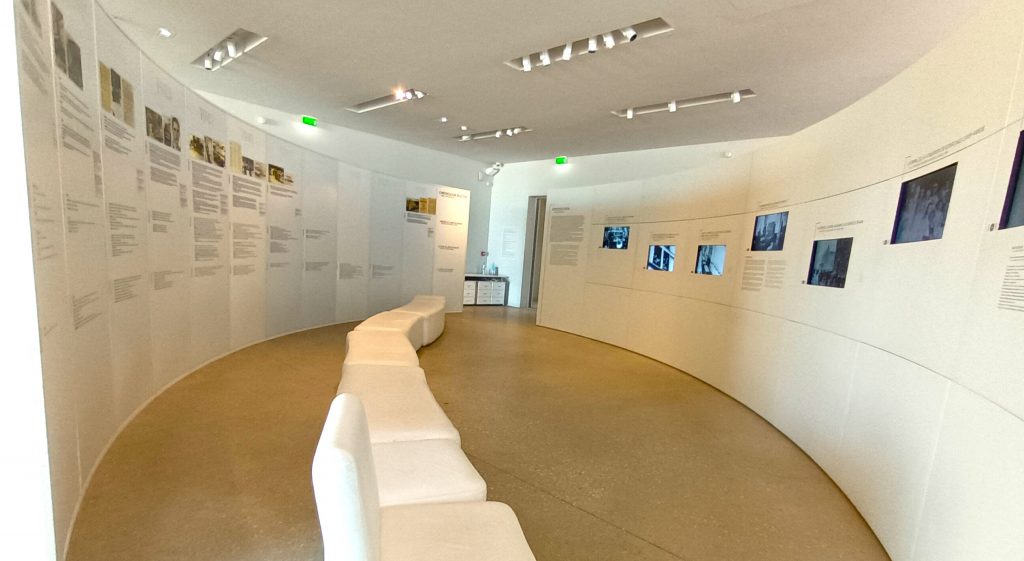
The first video focuses on the roundup of 20 August 1941 and the arrival of the first Jewish internees at the Drancy camp. It shows how the gendarmes sealed off the 11th arrondissement of Paris, where many working-class Jews were living at the time. Testimonies, in particular that of a man who explains how on that day a gendarme asked him to put his bike on the side and get on a bus with others, without knowing that his destination would be Drancy.
The 2nd video shows the dramatic beginnings of the Drancy camp. The 3rd video is entitled ‘Transit camp for French Jews, the last stage before deportation’. It shows how they were brought to Drancy, a place whose construction was not completed and therefore not ‘functional’. Initially, a large number of them were crammed into rooms, prevented from doing anything except certain humiliating chores, administered by the Nazis and guarded by the gendarmes.
The 4th video is devoted to the administration of the Drancy camp, with the three camp leaders, Theodor Dannecker, Heinz Röthke and the infamous Aloïs Brunner. To raise the level of brutality even higher, Brunner placed the French gendarmes outside the camp and had the Viennese SS impose order with an iron fist. The 5th video is devoted to the Austerlitz, Levitan and Bassano labour camps, where Jews were placed to sort the looted goods of the Jews.
The 6th video focuses on the Rothschild hospital, which was transformed into a prison hospital and housed Jewish inmates suffering from serious illnesses. This did not prevent roundups, in particular one in which the German authorities came and took away many of the sick, even people who had undergone major surgery the day before.
The 7th video is entitled ‘Friends of the Jews and Righteous from the Drancy camp’. It shows young men and women, most of them in their twenties, imprisoned at Drancy and required to wear the words ‘friend of the Jews’ on their jackets, as they were accused by the authorities of having come to the aid of their fellow Jews or simply having opposed the wearing of the yellow star. Some of them marked their stars ‘Auvergnat’ or ‘Breton’ and even in jazzy ‘swing’ mode to make fun of this discriminatory measure. In the camp, these Righteous continued their rebellion, discreetly trying to help the Jews, as did a handful of gendarmes guarding the camp.
The last video focuses on the fate of children in the Drancy camp. At first, the prisoners were men. From August 1942, women and children were also deported. The video gives the floor to men and women, children at the time, who recount the conditions of survival in the Drancy camp. The way in which the adults organised schooling for them, using notebooks received in parcels, to do homework and dictate. And the struggle against despair, particularly when a lady began to sing in a barrack room, the children listening with emotion and enjoying this moment imposing a shade of color on the camp. Most of the children interned at Drancy between 1942 and 1944 were deported.
Opposite the videos is a chronology of the Drancy camp. It describes the construction of the La Muette housing estate, the imprisonment of prisoners of war and then that of the Jews rounded up.
The first Paris roundup, known as the ‘Green Ticket’ roundup, took place in May 1941. 3,700 Jewish men were taken to the Pithiviers and Beaune-La-Rolande camps in the Loiret region. The Drancy camp was emptied of prisoners of war in July 1941 and the more than 4,200 Jews arrested during the second round-up, all men, were interned in the Drancy camp. There they were placed under the responsibility of the Prefecture of Police and guarded by the gendarmerie.
The terrible living conditions and especially the threat of starvation provoked anger among the first internees. They were then allowed to receive parcels of food and clothing, but these were searched and often confiscated by the gendarmes keeping watch. A black market was created. One person testifies in a video how, as a child, he remembers that a gendarme had sold a packet of cigarettes at an exorbitant price to a detainee and that on the same day another gendarme stole the packet from him during a search in order to resell it the next day.
Following around thirty deaths, a German military medical commission released around a thousand patients between 4 and 7 November 1941. On 22 June 1942, the first deportation convoy left the Drancy camp for the Auschwitz concentration camp. On 16 and 17 July 1942, following the Vel d’Hiv round-up, almost 2,000 men and 3,000 women were sent to the Drancy camp. Heinz Röthke took over from Theodor Dannecker. From 14 August 1942, children were also deported.
In June 1943, Aloïs Brunner, an SS captain, became camp commander. The last large convoy of deportees left for Auschwitz on 31 July 1944. The labour camps annexed to Drancy opened their doors during this period. The Lévitan camp, located on the Faubourg Saint-Martin in Paris, opened on 10 July 1943, the Austerlitz camp on 20 October 1943 and the rue Bassano camp on 15 March 1944. On 17 August 1944, Aloïs Brunner fled before the advance of the Allied forces and continued deporting Jews from territories still controlled by the Nazis.
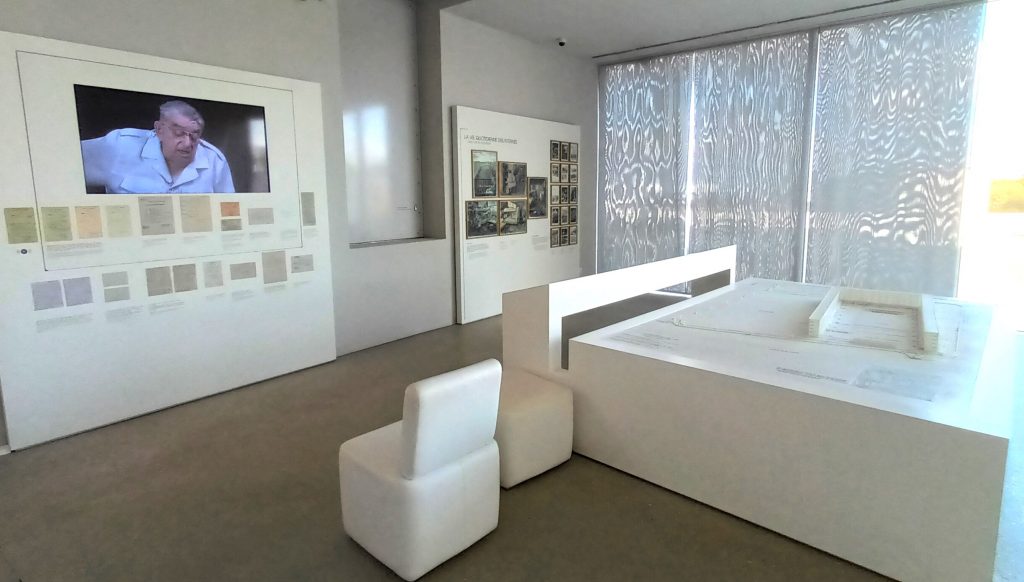
At the far left of the permanent exhibition, paintings depict this daily life. These are by Jane Levy, a woman from an Alsatian Jewish family who was born in Paris in 1894 and studied at the Ecole des Arts Décoratifs. She was arrested in November 1942, interned in the Drancy camp and deported with her brother Albert to Auschwitz on 31 July 1943. In her paintings, we discover the barracks with the clothes hanging on the beds and the saucepans lined up next to them. There are also works by Georges Horan, born in St Petersburg in 1894. An industrial draughtsman, he was interned in various camps, including Pithiviers and Drancy, and liberated on 13 March 1943. 56 prints have been collected in which the painter depicts the daily life of the prisoners.
Alongside these paintings and drawings, a model of the camp has been reconstructed, showing each entrance and the guard posts, toilets and other areas, including the stairways leading to deportation. It shows that the Drancy camp consisted of 5 blocks with 22 staircases. Blocks 1, 2, 4 and 5 contained eighty rooms. The internal layout of block 3 changed from period to period.
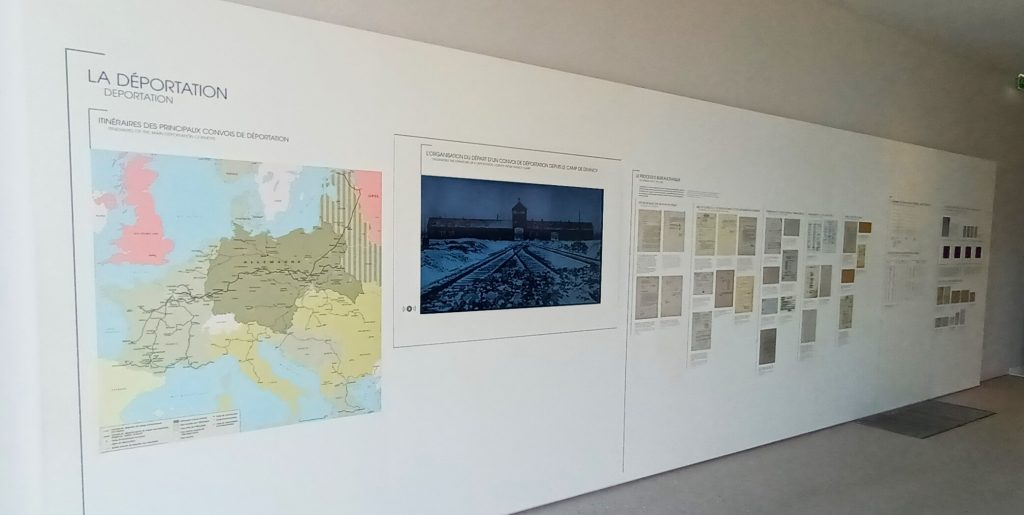
At the far right of the room, panels show the itinerary of the main deportation convoys: the bureaucratic process, and the departures from Drancy. How it was carried out by the Nazi authorities in collusion with collaborators. The methodical preparation of the convoys, with the names of the people on the files that were sent, the establishment of the list of deportees. Also the timetable for all the convoys. The section of the exhibition devoted to the deportations ends with the faces of convoy 71, which left Drancy on 13 April 1944. Photos of the children and letters written and thrown from the train recount what happened to them and try to alert the population.
A small white room, just next to the section devoted to the deportation, has two benches where visitors can sit and listen to a series of letters from prisoners being read out.
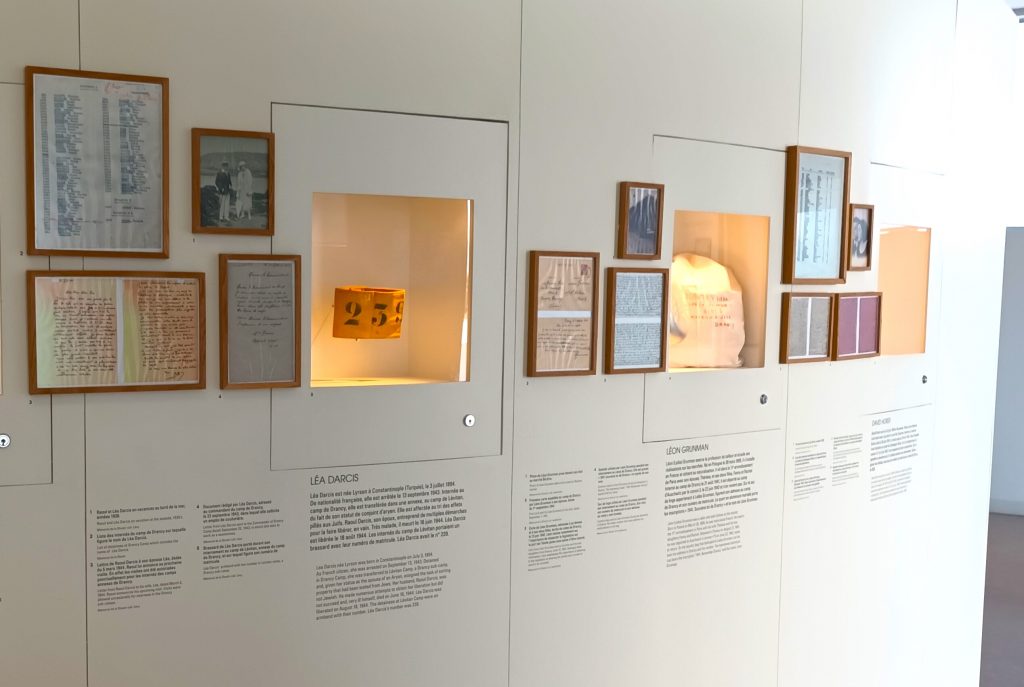
Opposite the entrance to this room are objects belonging to prisoners. These include a bag embroidered with the words ‘Grunman Lieba, escalier 20, chambre 11, bloc 5, matricule 38 32, Drancy’. There is also an armband with a deportee’s number, the number 239 of Léa Darcis and other everyday objects.
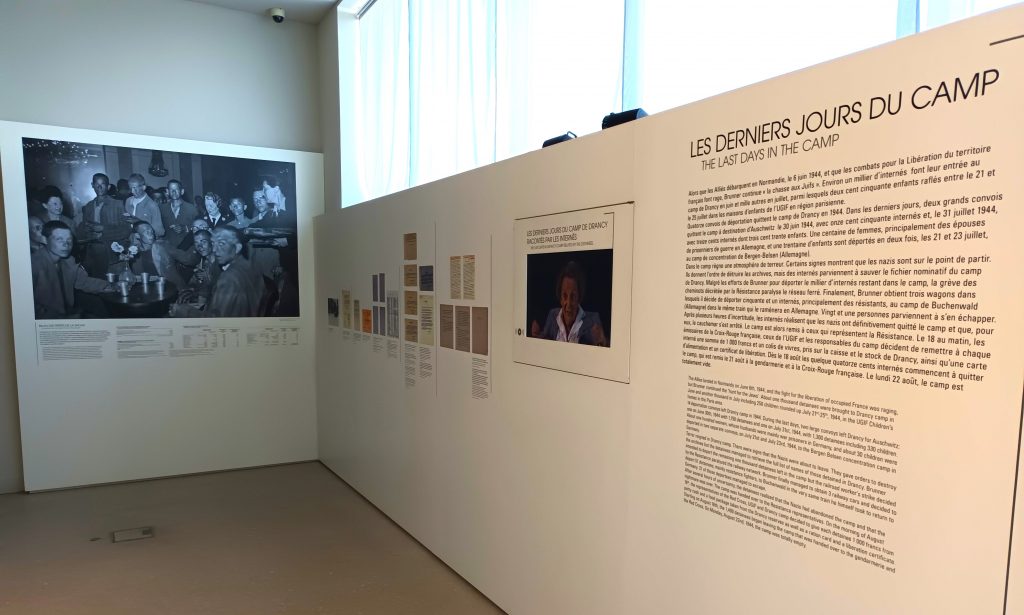
The exhibition ends at the entrance on the left, with panels describing the last days of the camp, with numerous testimonies and documents, as well as the death toll from the Shoah. This is followed by the work of remembering. It shows how the site was rehabilitated following the Liberation. First for people suspected of collaboration, then for the tenants when the renovation work was completed in 1948.
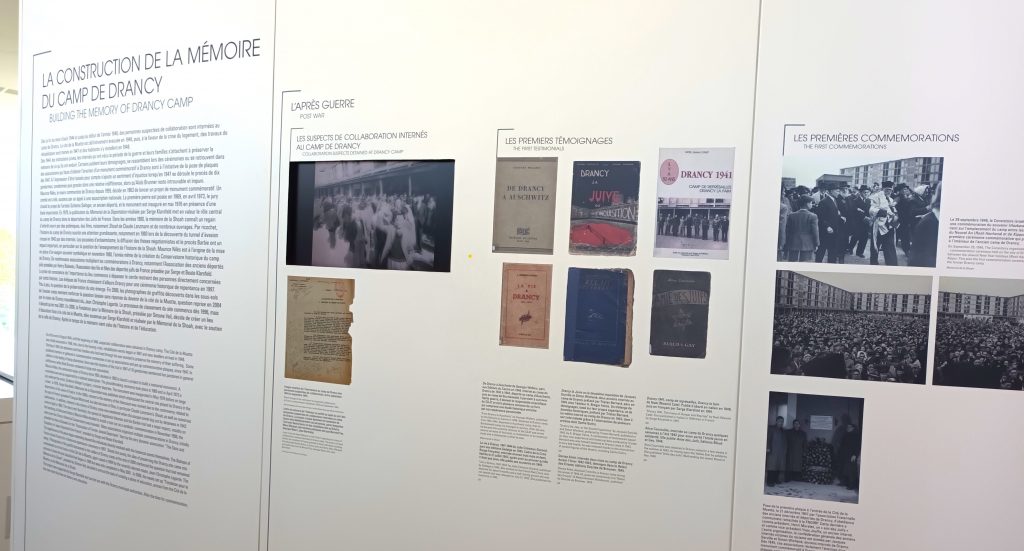
The first testimonies of survivors of the deportation were also published and shared. But, unfortunately, as Simone Veil recounts in her autobiography, at first these were words that were virtually inaudible, as the time had come to tell stories of the Resistance in order to restore the nation’s image. Many survivors of the Shoah also chose to remain silent, rebuilding their lives, so as not to be confronted with the immense wave that was too close and threatened to overwhelm their survival. The main aim of this Jewish resilience was to create the best possible life for the next generation, to take revenge on ‘fate’ and to help create a fairer society.
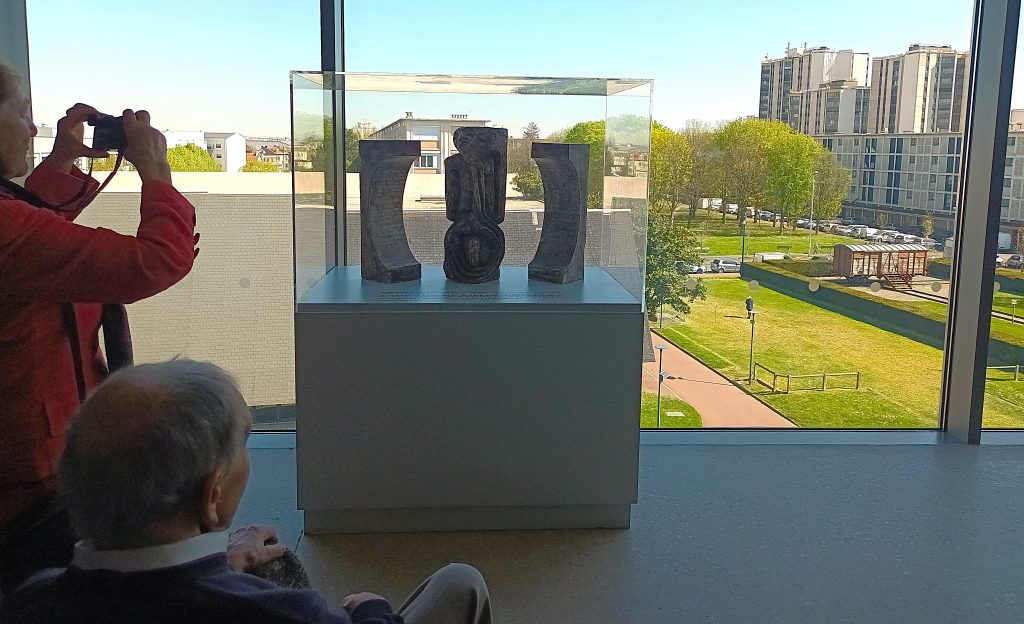
A magnificent exhibition dedicated to the work of Shelomo Selinger is presented in 2025-6. The opening took place in the presence of the artist and his wife Ruthy Selinger. Sixty works, some of which have never been seen before, pay tribute to the victims of the Holocaust, in particular the heroines Mala Zimetbaum, Zivia Lubetkin and Haika Grossman.

But also to Janusz Korczak.
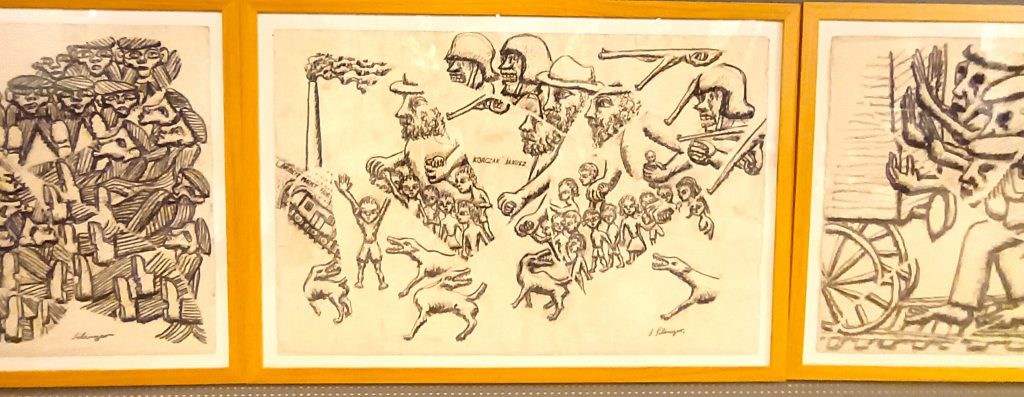
An important memorial work. Also present in Selinger’s paintings is an ode to the celbration of life, this Jewish revenge of the aftermath on the death desired by various totalitarian regimes.
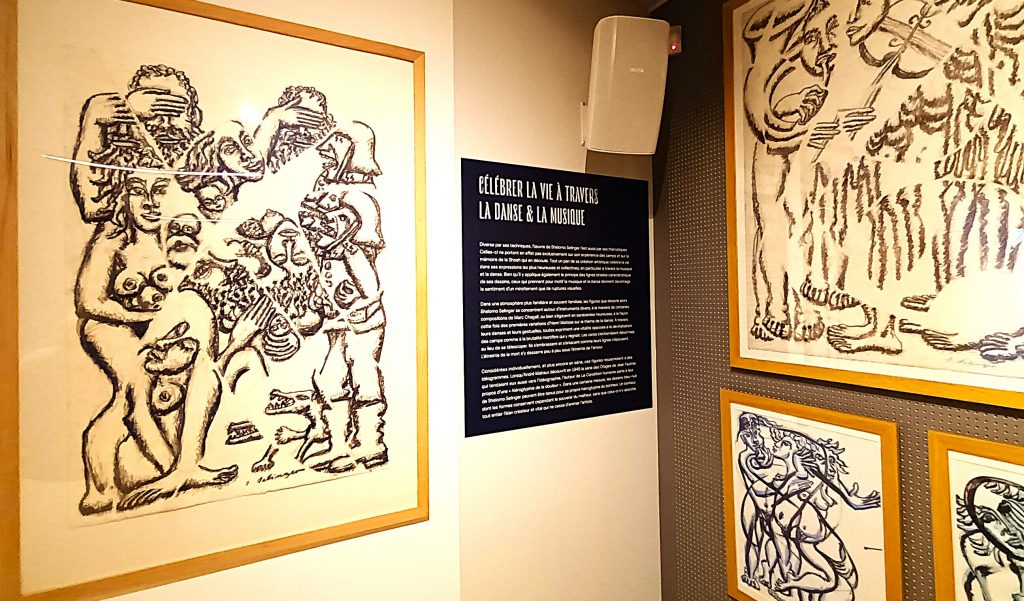
Interview of Eléonore Ward, Head of the Memorial Museum of Drancy
Jguideeurope: On 23 October 2024, you organised an Open Day for teachers. Do you feel that there is a very strong awareness among teachers of the contemporary importance of sharing the history of the Shoah?
Eléonore Ward: Yes, this awareness is real: the last witnesses are disappearing, discrimination in the broadest sense is at a very high level and this year we are commemorating the 80th anniversary of the liberation of the camps. But above all, and more generally, this history is taking its rightful place in the school curriculum. It is studied three times in the course of a child’s schooling: in CM2, teachers introduce the concept and deal with anti-Jewish persecution and in particular the special fate of hidden children. In 9th grade, pupils acquire many more keys to understanding the Second World War (the mechanisms of anti-Semitism, Nazism and the collaboration of the Vichy regime). Later in high school, the study becomes increasingly in-depth, with the added challenges of remembrance and the historiographical approach.
So we’re seeing a huge demand from teachers, and not just in history-geography. We have developed a very diverse range of teaching resources, covering a wide range of subjects such as artistic and cultural education, media and information literacy, citizenship and so on. In addition to this range of courses, teachers can receive training so that they are more at ease with the content when they return to the classroom. Coming to Drancy gives pupils a unique opportunity to understand what happened through a concrete, material place: the historic site of the former Drancy camp, now the Cité de la Muette.
What programmes does the Drancy Memorial organise for young people?
The educational programmes offered by the Shoah Memorial are primarily school-based, with teachers of history and geography as well as literature, music and other subjects. Most classes take part in an hour and a half guided tour or a 2 to 3-hour educational workshop that includes a guided tour. These workshops take things a step further by getting pupils involved in a range of activities (historical research, debates, artistic creation, etc.).
In addition, we organise multiple events: testimonies from survivors, film screenings followed by debates, meetings with authors, theatrical performances, etc., as well as outdoor remembrance trails to explore local history in greater depth.
Finally, the Drancy Memorial is developing longer-term projects with a more qualitative approach. For example, we meet with pupils on several occasions as part of a project-based teaching approach. In particular, on themes such as how to learn to become guides at Drancy, taking part in a poetry competition on remembrance, taking part in a commemoration ceremony, etc.
As well as schoolchildren, we are also delighted to welcome young people outside school (municipal centres, young elected representatives, civic associations, etc.) and families for film screenings, testimonies or workshops. Don’t hesitate to contact us for more information. Our content is tailored to the needs and characteristics of each group.
How long have you been organising the Drancy Rendez-Vous and can you tell us a little more about this initiative?
The Drancy Rendez-Vous were set up a few years ago. Over the last year, we’ve considerably expanded the offer. The aim is to offer activities for the general public in a variety of formats (conferences, guided tours, workshops, testimonials, screenings, debates, etc.) to help them explore the subject in greater depth. The themes are also diverse: they can be history and remembrance, but also literature, philosophical reflections, film analysis, etc.
In my opinion, the Drancy Shoah Memorial is a place of remembrance, but it is no less alive for that. Such a sensitive subject can also bring together a wide range of people to continue learning together, open up to others and commit to an inclusive society. To find out more, please consult the museum’s quarterly cultural programme. All our activities are free and open to all.
Can you tell us about a memorable encounter with a visitor?
That’s a difficult question to answer! I can think of a number of people, in particular the inhabitants of Drancy who sometimes never dared to open the door, intimidated by the solemnity of the place. I’m also thinking of visitors from the four corners of the world, very moved, in a quest for the truth about their ancestors who spent time at Drancy during the War. But there is one in particular that stands out in my memory, that of Victor Gotajner, interned for a few days as a child with his mother. He came back to Drancy for the first time in his life, at the end of 2024, and he had tears in his eyes. After a few discussions, I invited him one Sunday to share his story with the public. It was a very powerful moment for everyone.
In 1182, King Philippe Auguste decided to expel the Jews from the capital. Synagogues were converted into churches and buildings owned by Jews were sold, with the proceeds going to the Crown. The sovereign used the sums thus amassed to build the keep of the castle at Vincennes and to put a wall around the nearby woods. Within Paris itself, he built a market in the now deserted Champeaux quarter that became known as Les Halles. Thus the creation of the capital’s famous old market (itself transferred to the suburbs in the 1970’s) originated with the expulsion of the Jews.
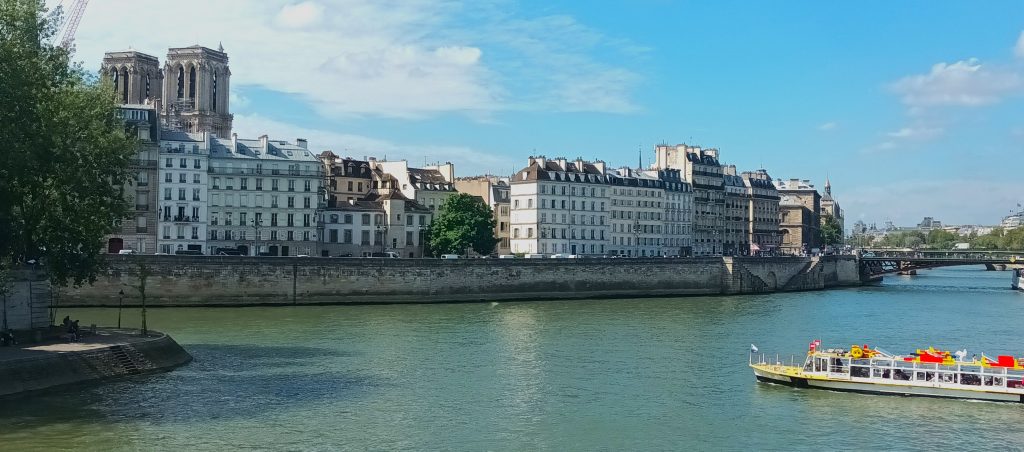
Seventeen years later, however, those expelled Jews were called back to the capital. They settled in the Saint Bont quarter (near today’s Pompidou Center), on rue des Rosiers, and on the left bank between rue de la Harpe and boulevard Saint-Germain. Indeed, the latter zone constituted the biggest juiverie (Jewry) of the day, as evidenced by the large medieval Jewish cemetery brought to light in the last century during construction work in the area.
In the thirteenth century, under the authority of rabbi Yehiel, the Jewish School of Paris enjoyed great prestige. On 6 June 1242, after a theological disputation between the rabbi and Nicolas Donin, an apostate Jew, Saint Louis ordered that all the copies of the Talmud found in the city be burned at the Place de Grève (today’s Place de l’Hôtel de Ville). Rabbu Yehiel left France for good and founded a new school at Acre (today’s Acco). In 1394, Charle VI promulgated a decree prohibiting Jews from living in Paris. It was not until the Enlightenment, nearly four centuries later, that they were allowed back into the city.
Murder on the Petit Pont (Little Bridge)
One Saturday morning in the year 583, a Jew wearing his prawer shawl was crossing the Seine to go to the synagogue on Île de la Cité. His name was Priscus, and he was the moneylender to the Merovingian king Chilperic I. As he was walking along the Petit Pont, a renegade Jew, Phatir, threw himself on him and stabbed him to death. As related in Gregory de Tour History of the Franks, this crime constitutes the first historically confirmed event in the history of Parisian Jewry.